
The Ultimate Pre-Tour Guide and Checklist

Going on tour is an exciting opportunity. You get to connect with audiences in a more meaningful way than you can through your recordings. Not to mention that touring is likely to be the most lucrative part of your income as a musician.
Nevertheless, going on tour can be something of a logistical behemoth. Without effective planning in place, various aspects can easily fall apart. This leads not only to financial and practical disruption, but it also makes the process less enjoyable.
We’ve put together a pre-tour guide and checklist to cover the key aspects you should plan ahead.
Confirm Your Bookings
One of your first steps should be to confirm your gig bookings. This may seem unnecessary, but so much can change in a matter of days that it’s something to take seriously. Many venues closed as a result of COVID-19 and indie clubs are continuing to struggle financially in the aftermath. It can be the case that between initial booking and days before the tour that a show can be canceled due to problems or in favor of a more popular and lucrative artist.
Keep an open dialogue with promoters and venues in this regard. Check in with them occasionally. Don’t just make this a case of continually asking whether the gig is still on. Make a schedule to contact them at intervals to talk about the promotion of the event. Ask whether there is anything you can do as the artist to help them. This not only gives you confirmation of the event but also helps you make more meaningful connections with promoters.
Part of your booking confirmation should include the arrangements at the venue. Reiterate any rider elements or pre-agreed comfort aspects. Run through the logistics of parking at the venue and equipment unloading procedures.
Check Your Accommodations
Tour accommodation is an essential consideration for your checklist. Being on the road can often feel chaotic and stressful. Never underestimate how a decent shower and a relatively comfortable bed can keep you positive and healthy during a lengthy tour. Even the moment of privacy to video call your partner and maintain your relationship can be invaluable. As such, you need to either arrange or confirm your bookings in this regard.
If you’ve booked hotel or motel rooms, double-check the amenities here. Few touring musicians expect 5-star accommodations, but there are likely to be minimum standards you should expect to be met. This is particularly vital if you live with mobility challenges and require specific resources to be in place. Double-checking these prior to hitting the road gives you the opportunity to make arrangements.
Many musicians don’t have the budget for hotels for the entire tour. As such, you may have arranged to crash with friends and acquaintances at points during your travels. Remember that people’s lives change and can get more complicated. So, it’s worth just making a call to double check you’re still able to spend the night with your generous hosts. That said, it’s also worth arranging some contingency locations in case of unexpected cancellations.
Prepare Your Home
If you live alone, going on tour usually means you’ll be leaving your house empty for lengthy periods. Before you travel it’s important to take some time to prepare your home accordingly. This is because there can be a range of security and safety issues that can arise from vacant properties. Arrange to have your mail paused or forwarded and ask your neighbors to keep an eye on your place for you. Making sure all your lights are turned off saves energy while you’re away, too.
One specific aspect you should carefully consider is whether it is a good idea to turn your heating off while you’re away. It can certainly save energy and money, but at particularly cold times of the year, you may find this leads to damage. The last thing you want is to return from a tour to find your pipes have frozen. Look at the weather forecasts for your area during the time you’re away. If the temperatures are expected to go below freezing, it’s worth setting a thermostat to keep your home at around 55 degrees.
Your arrangements should also include identifying a friend or family member as a point of contact for emergencies. Provide them with keys and details of any insurance documents. This way, you’re not having to rush back from the tour in the event of a problem.
Consider Your Wellness Needs
Keeping healthy on your tour is important. It helps you to perform at your best in each show. Not to mention that it makes for a generally more pleasant touring experience. As such, your checklist needs to include making sure you have resources in place to take care of your wellness needs.
Stock up on relevant over-the-counter remedies for minor ailments. If you have prescription medications, make an appointment with your doctor to get extra supplies in the event of loss or other issues where possible. Load up on some healthy snacks and bottled water for your journey so you’re not relying on fast food with less nutritional value. It may also be worth identifying healthy restaurants and marking them out along your route.
You should also make a note of medical facilities in and around the vicinity of your venues. Whether you need to visit a hospital or an appointment with a general practitioner, this will save time in the event of an issue. Check whether these facilities are in-network with your health insurer, too. If you receive specialist care — such as with an otolaryngologist if you’re a vocalist — make arrangements for remote telehealth access if you need it on the road.
Your pre-tour planning is an essential component of making sure your travels are successful. Engage with promoters and accommodation providers to make sure your needs are taken care of. Prepare your home to keep it safe and secure during your time away. Take steps to bolster your health while you’re on the road. The better you plan before you hit the road, the more positive an impact your tour is likely to have on everyone involved.
By Indiana Lee
Share this:
- Click to share on Facebook (Opens in new window)
- Click to share on X (Opens in new window)
- Click to share on Reddit (Opens in new window)
- Click to share on Pinterest (Opens in new window)
- Click to share on LinkedIn (Opens in new window)
Leave a Reply Cancel reply
- Destinations
- Travel Tips
- Travel With Us
- Paid Travel Internship
- TTIFridays (Community Events)
- SG Travel Insider (Telegram Grp)

The Ultimate Pre-Trip Planning Checklist — 12 Things to do Before Your Next Trip

Pro-tip: Don’t keep these pre-trip plans for the last minute!
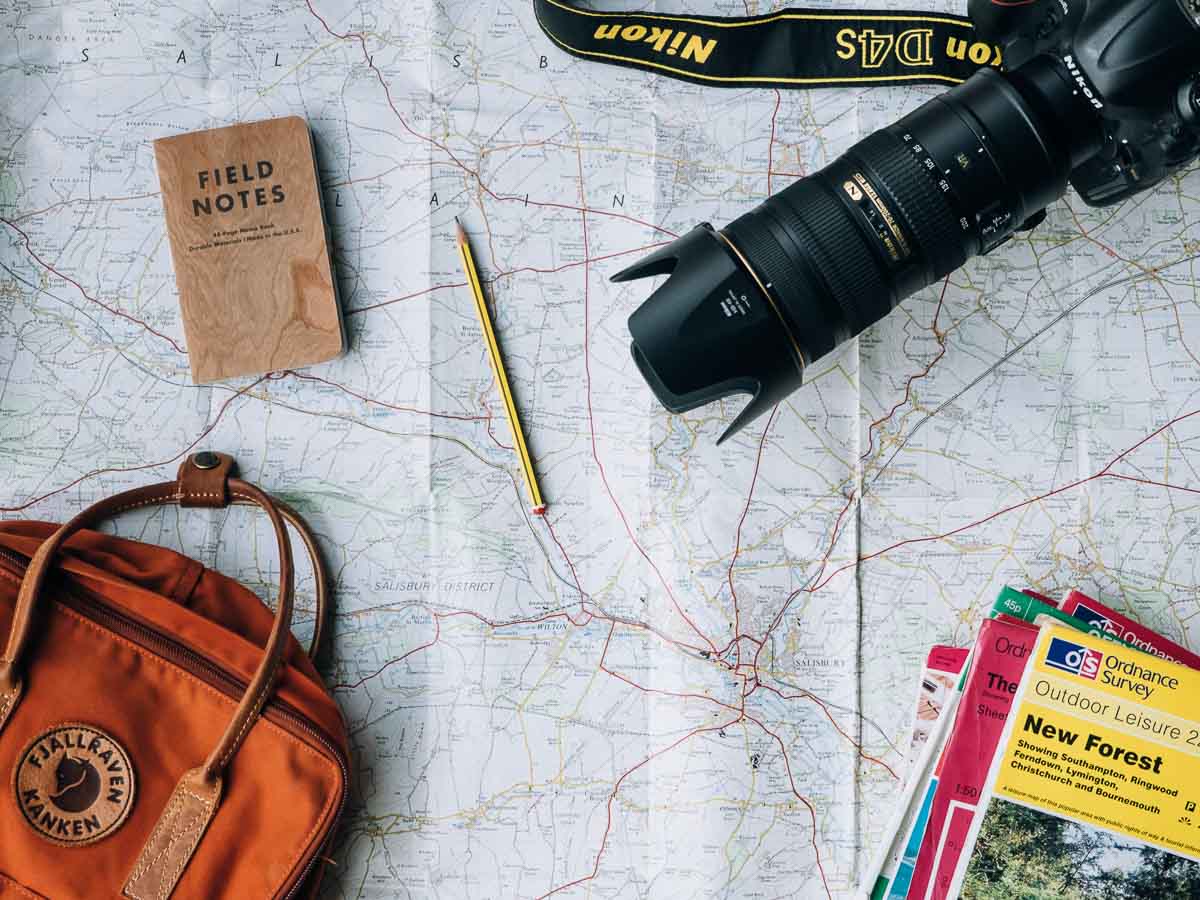
Photo credit: Annie Spratt (@anniespratt) via Unsplash
Pre-trip planning can be just as important as the trip itself (if not, more tbh). Therefore, we’ve put together a checklist of things for you to do/think about as you plan out your next dream holiday.
1) Sign up for a multi-currency card
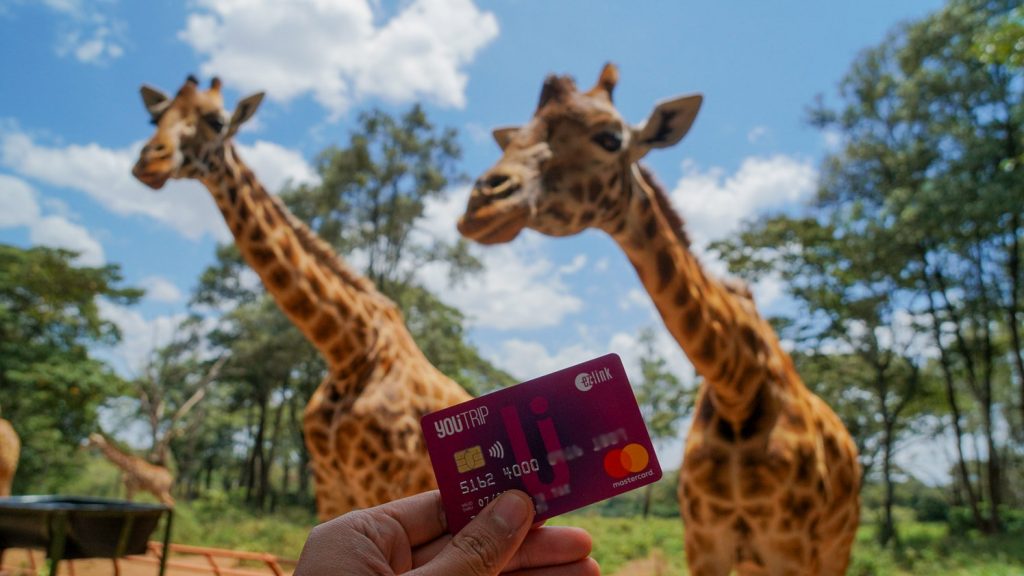
If you don’t already have a multi-currency card, now’s a good time to sign up for one. You get the convenience of going cashless without paying for it with jacked-up exchange rates like with credit cards.
This is especially useful when you’re travelling in countries that prefer cashless payment (many parts of Europe as well as major cities in Asia). You could even save the trip to a physical money changer and travel with zero cash!
My personal favourite is YouTrip , which offers real-time exchange rate conversion over 150 currencies and has a clean app interface that allows you to easily track your travel expenses.
*Pro-tip: It’s also useful for online shopping when you’re not travelling! You’ll be surprised, a few bucks saved here and there can definitely add up to quite a bit.
Once registered, all you have to do is link your YouTrip card to your local debit or credit card to transfer money over. Using the YouTrip app, you can either use the “Exchange” function to change your currency in advance or just leave the credits in your home currency and the app will convert it at the time of transaction.
If you haven’t gotten a YouTrip card yet, use the promo code < TRAVELINTERN5 > to get S$5 when you sign-up for a YouTrip account !
Revolut is another good alternative. On top of the usual functions of obtaining currencies at favourable rates, there’s also no extra fee when you withdraw from ATMs (up to a certain amount).
Read also: The Best Multi-currency Travel Card For Travellers — YouTrip vs Revolut vs InstaReM vs TransferWise Review
2) Download budgeting apps
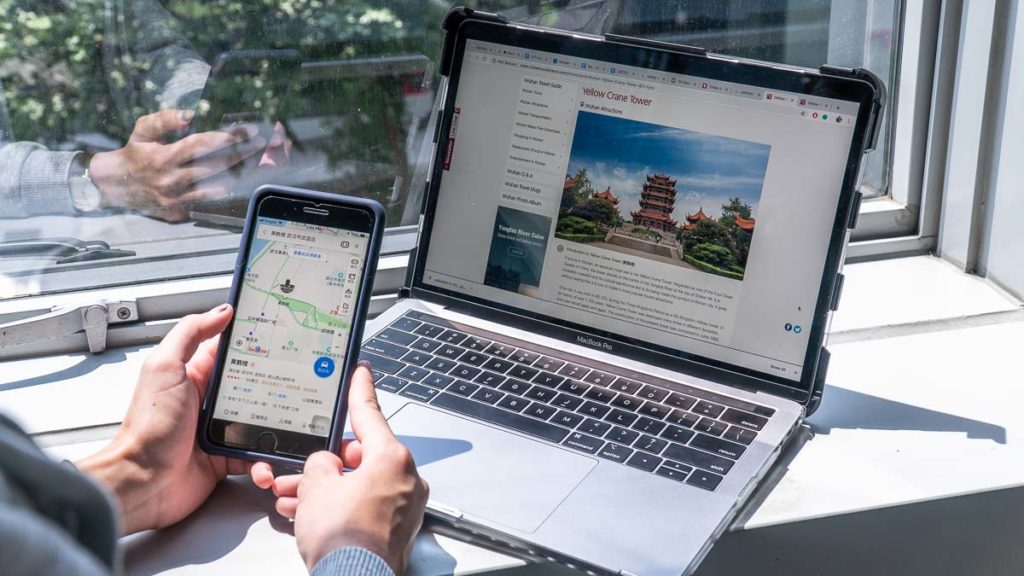
If you haven’t started putting money aside for travels, now’s a good time to save up. Simply calculating your estimated budget and putting aside a small sum every month already sets your pre-trip plans in motion!
You can roughly estimate your trip budget by shortlisting the activities and experiences as well as type of accommodation you fancy.
P.S. Our budget itineraries are pretty useful for that! 😉
Allocating a pre-trip budget also ensures you’re not spending more than you can afford. To stick to your plan, we recommend downloading a budget app.
Our favourite is Trail Wallet . The app is user-friendly and organises your spending into categorises such as food, activities, transport, etc. You can also set the exchange rate so you’ll always know how much you’ve spent in your home currency.
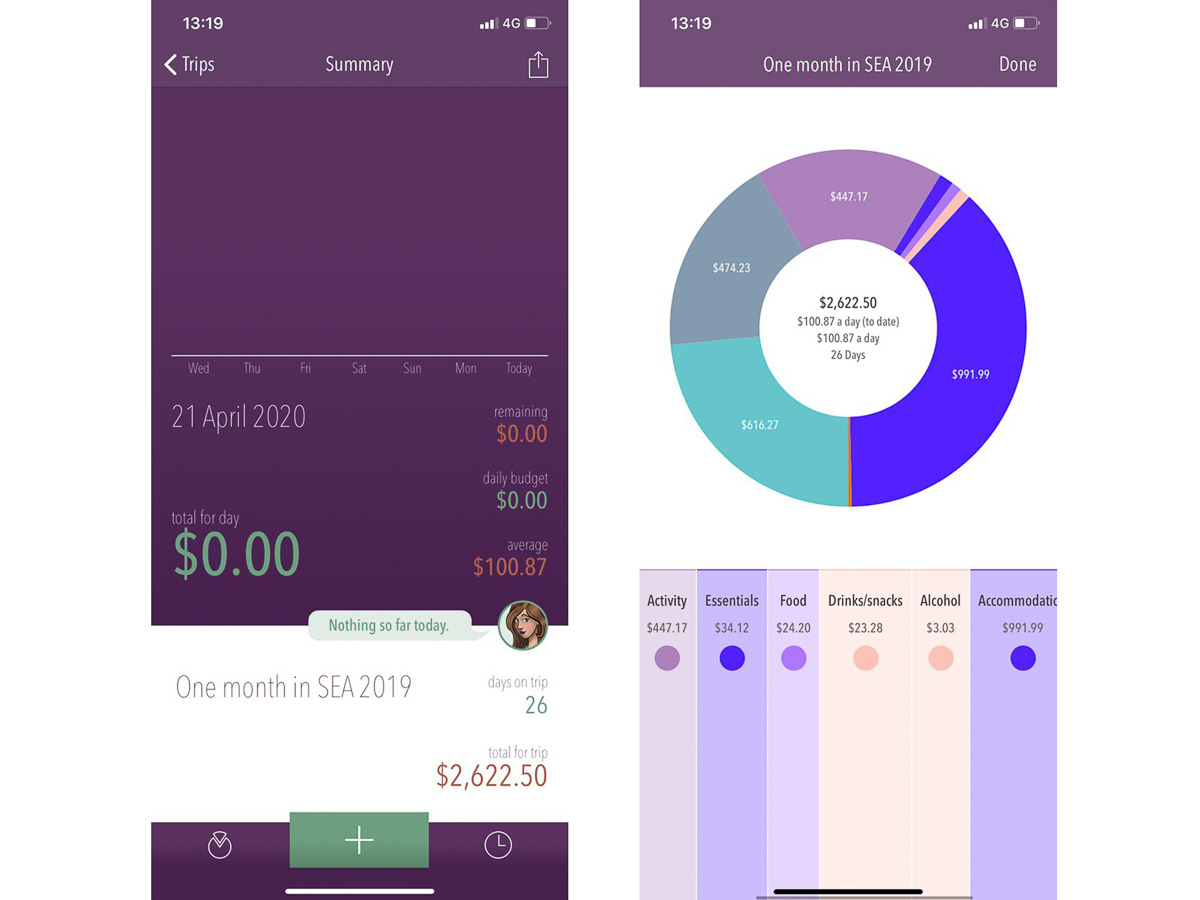
For Android users, TrabeePocket is another favourite for its similar easy-to-use functions.
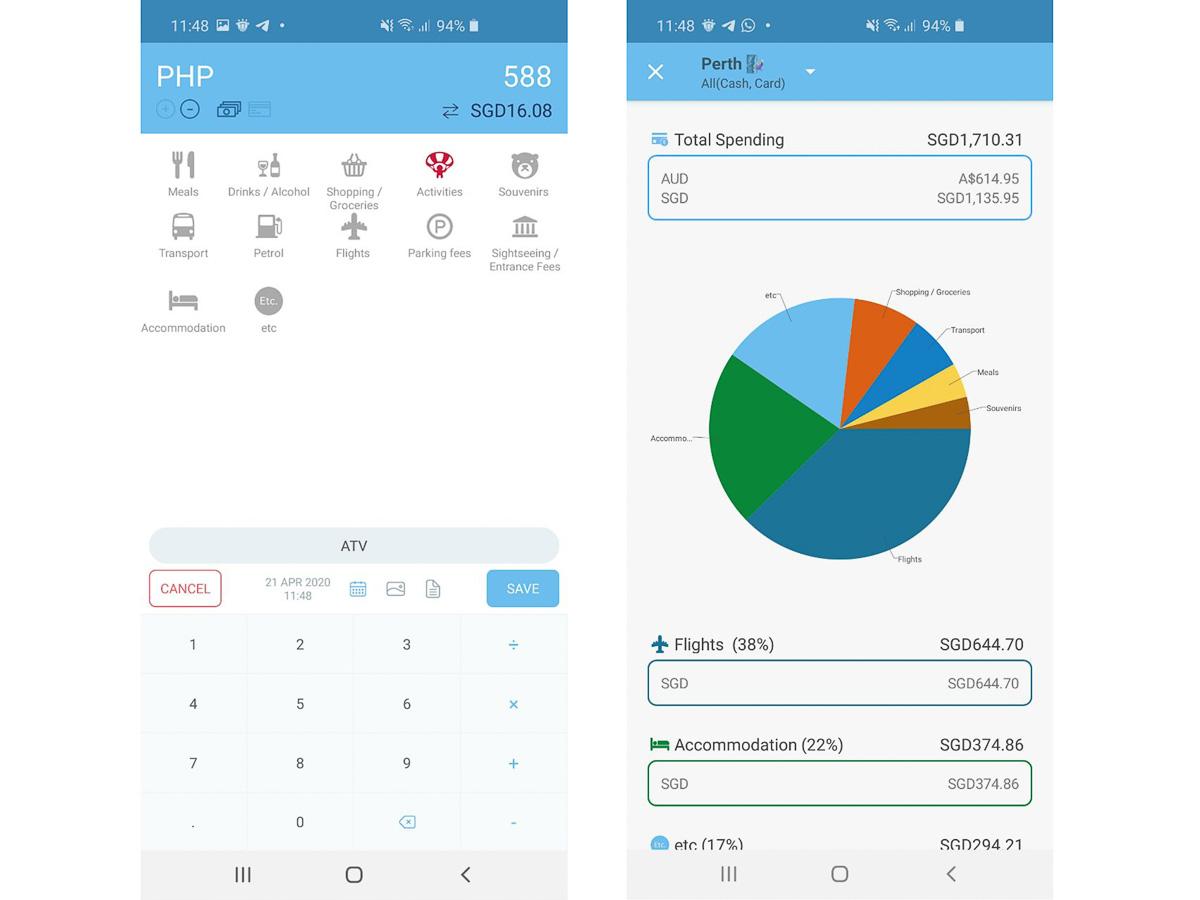
3) Get in shape for your next adventure
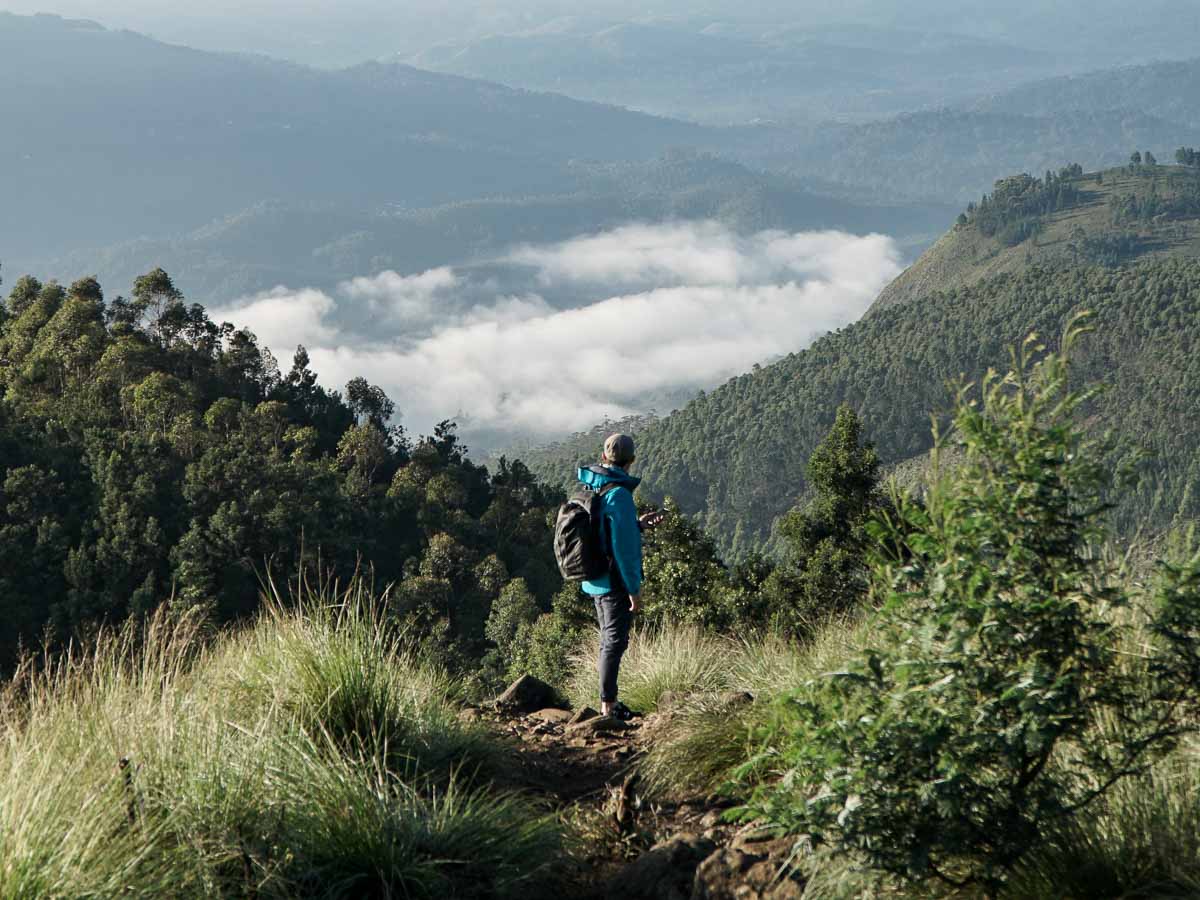
Nothing brings you down more than being short of breath at the start of your hike 🥵
Or when you run out of energy to snorkel further to see more fishies in the sea 😭
Even exploring a city can really drain your energy if you’re not used to walking long distances.
If you know your trip involves hiking, sea activities or even just a whole lot of urban exploring on foot, make sure to prepare your body for it!
As someone who travels for work , I can confidently say being fit makes the trip a lot more enjoyable. Working out doesn’t need to be heavy-duty or take up hours of your time! It can be as simple as having night walks in the park or a quick 8-minute full-body workout .
Feel free to skip this tip if you’re lounging by the beach, though 🍹
4) Shop for smart travel essentials
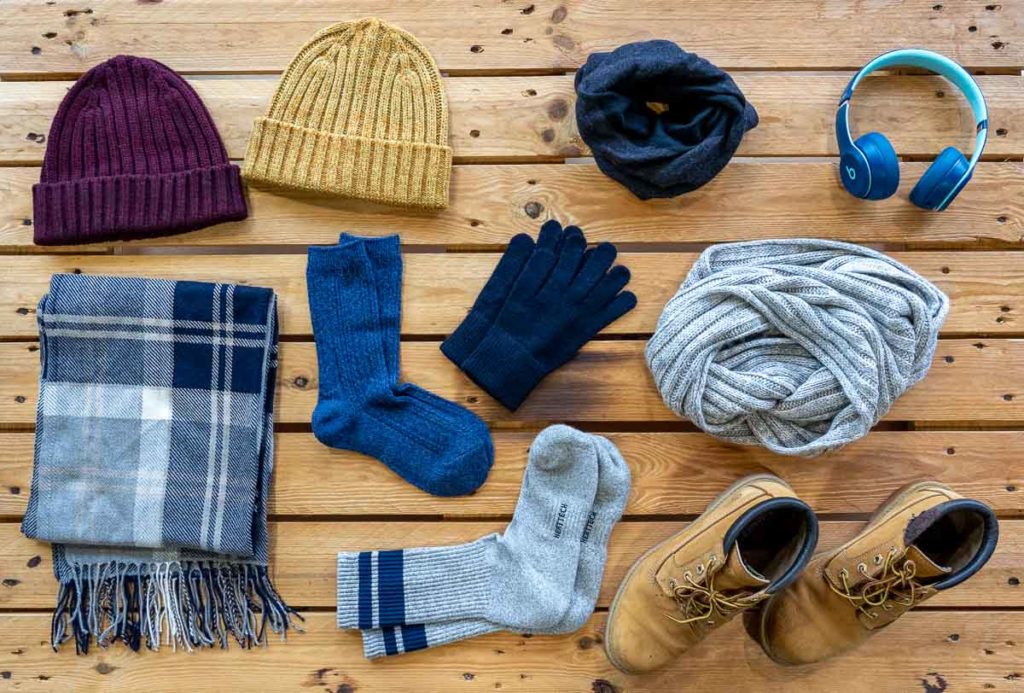
Instead of rushing to buy what you need the week before your trip, why not stock up on essentials early?
Uniqlo is my favourite place to shop for basics such as T-shirts and bra-tops which are versatile with many outfits and saves luggage space! There’s also has great options if you’re travelling to colder climates! If you’re travelling in winter , now is a good time to buy off-season pieces as prices are usually marked down.
Shopee is also great for pre-trip shopping. Apart from affordable fashion, you can also find other travel essentials like USB charging adapters , refillable silicone bottles and packing cubes that are perfect for every trip.
Read also: 13 Travel Gifts Any Jetsetter Will Love — Starting From Under S$15
5) Relook your packing list
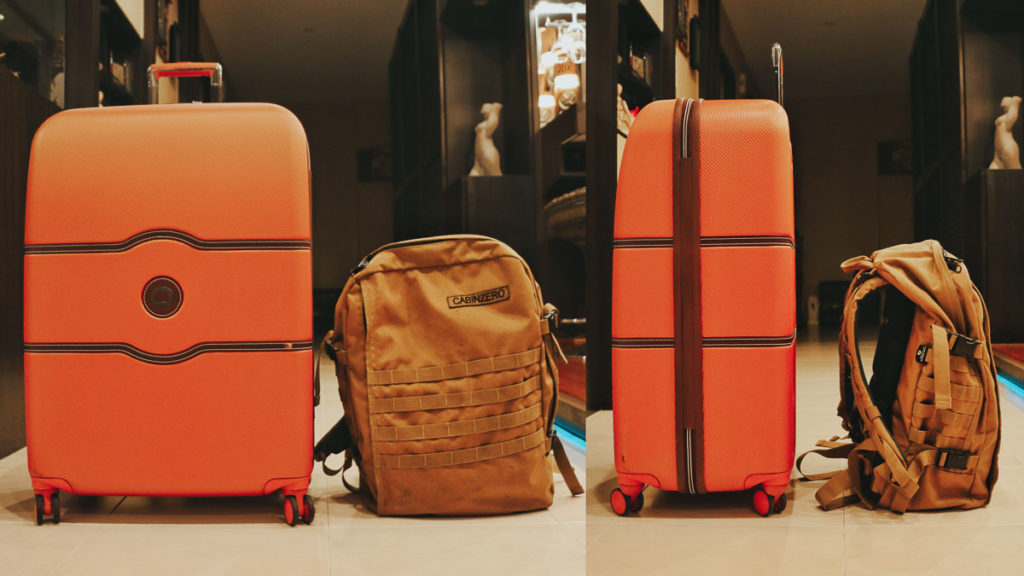
Do you really need 14 tops for a two week winter trip?
Our rule of thumb is that you only need to pack about a week’s worth of clothes no matter how long the trip. We’ve even travelled a month on just a cabin sized backpack !
This might be surprising but other than Southeast Asia, backpacks are also more convenient in places like Japan as many subway stations don’t have lifts or escalators!
If we’re travelling across multiple cities — whether it’s Asia or Europe — a backpack is usually our choice of luggage!
Read also: Ultimate Travel Packing List: 35 Essentials to Pack for Long-Term Travel
One tip is to look out for places where you can do laundry. When travelling in colder seasons, it’s also easy to simple re-wear and match different tops with the bottoms to change the look entirely.
Read also: The Secret to Packing Lighter — 7 Travel Essentials for the Smart Traveller
6) Pick up the local language
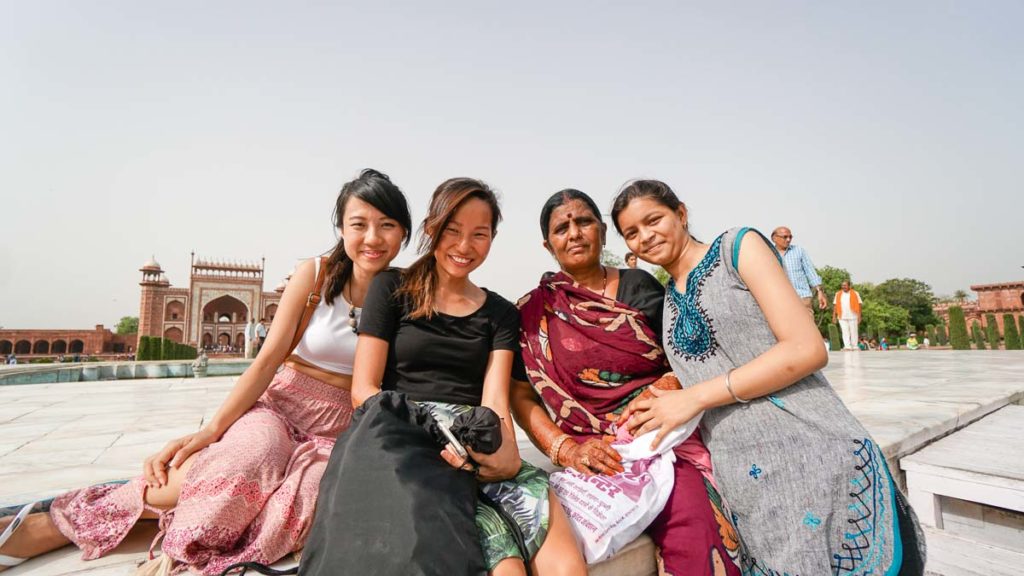
Knowing simple phrases of a country’s language can be helpful in making friends with locals. So if you have extra time, why not try to learn the language?
My personal favourite is the app Duolingo — it turns the whole learning experience into a game and there all kinds of languages (even High Valyrian if you’re going to Essos)!
Read also: 10 Free Online Resources to Learn a New Language — Japanese, Spanish, Korean and More
However, if you happen to be in a rush, or if you simply don’t feel like committing to learning a new language, a quick way is to create a cheat sheet of useful everyday phrases and store it in your phone.
Omniglot is a great website to use when compiling your cheat sheet. It has 250 languages, complete with audio to help you get the pronunciation right.
For quick and easy referencing on trips, download the offline language pack for Google translate. This will come in handy if you happen to miss your last bus and need directions from locals!
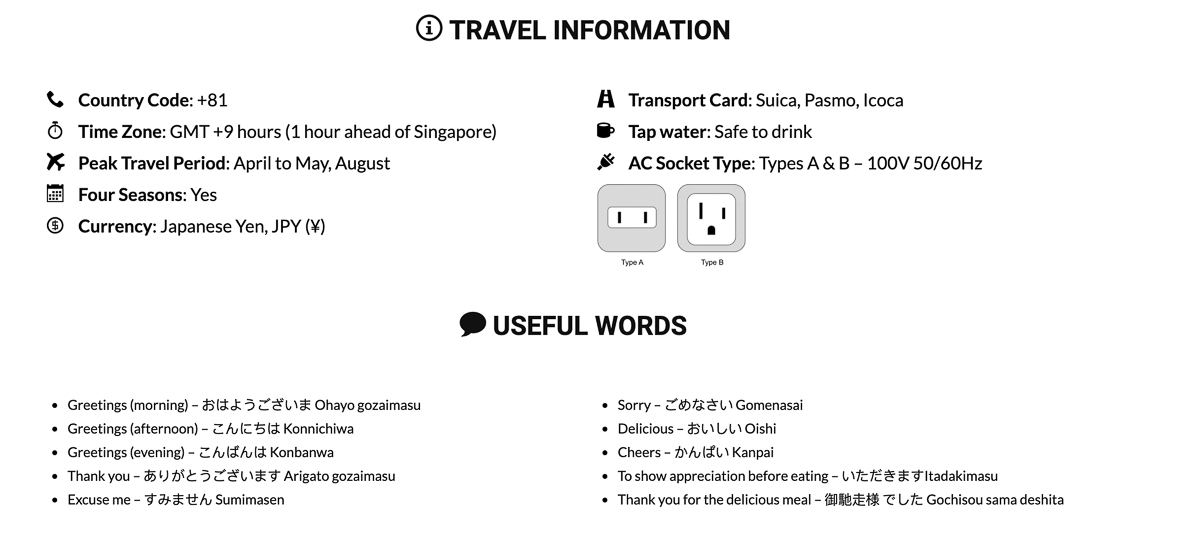
Also check out our destination pages for 10 of the most essential phrases you need in each country.
7) Put together a sickass trip playlist

Photo credit: Fixelgraphy (@fixelgraphy) via Unsplash
What better way to get you in the mood than a playlist that gets you grooving? This comes in handy when you’re road tripping with your pals or on a long train ride to the next city.
Spotify is the easiest place to get creative with your playlists. You can compile songs that perk you up in the morning or your friends’ favourite sing-a-long tunes.
Not sure where to start? Check out our playlist that’s full of chill vibes, perfect for long drives along the coast or a dreamy staycation!
8) Find Out Which Countries Are Open to International Travellers

Greece will be opening its borders on 15 June .
If you’re hoping to travel soon, the options are currently limited as most borders are closed. However, some countries have announced dates when they’ll be reopening as the COVID situation gradually improves.
Countries like Thailand, Bali and Iceland are in fact scheduled to reopen for international travellers by June 2020. Find out which countries are available for travelling by keeping this page bookmarked !
Be prepared that travel will be different from before. There will be more steps and measures at the airport and during the flight to lower the chances of catching the virus during transits. The last thing we want is to be sick while on holiday!
Read also: Travelling Out of Singapore After COVID-19 — What to Expect
9) Consider travelling solo
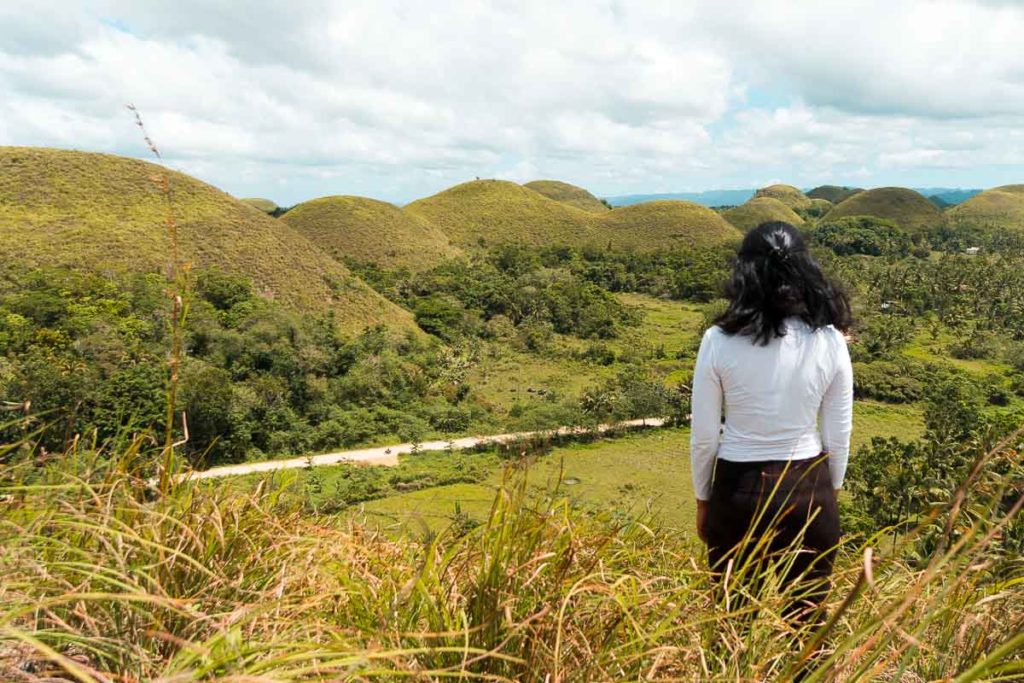
A long period of lockdown has us feeling the effects of cabin fever and isolation. This might seem ironic but to me, nothing is as recharging or illuminating as solo travelling. If you’ve never experienced travelling solo, now’s the time to work toward checking it off your bucket list.
The most liberating thing about solo travelling for me is being able to explore in my own time and at my own pace — something you don’t get to do as much when you have to accommodate your travel buddies.
The idea can seem daunting at first but travelling on your own doesn’t mean you’re alone. You’ll find yourself connecting better with locals and other travellers, which always makes the trip extra meaningful and special. They can give you a more intimate insight into their culture and even take you to hidden gems that other tourists don’t know about.
Read also: A Beginners Guide to Solo Travelling For The First Time
10) Or travel with us!
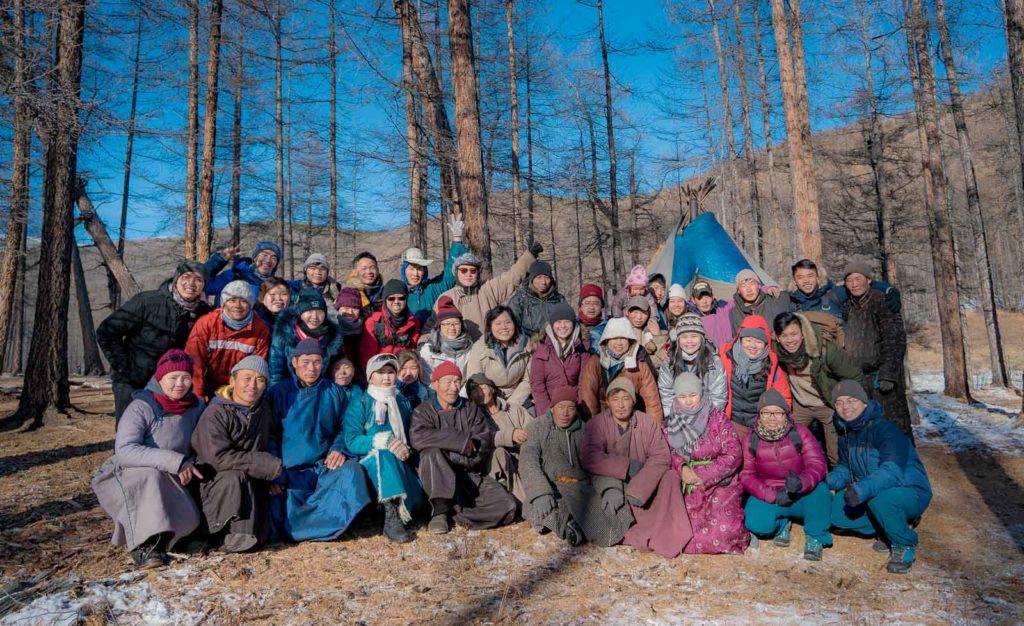
If solo travelling just isn’t your thing but you’d like a more immersive experience into a different culture, check out TTI Experiences ! Join us and other fun, adventurous travellers on exotic locations with access to meet elusive local communities, like the Mongolian Reindeer nomads . It’s a genuine adventure like no other!
Be one of the first 50 participants to sign up for the North Mongolia Reindeer Expedition and get a 25% discount (U.P. S$5,390)! You save S$1,400 and your spot is valid till Dec 2021* — of course we’ll only be travelling when it’s safe to!
* Extendable if the travel restrictions are extended.
11) Learn how to edit your travel photos
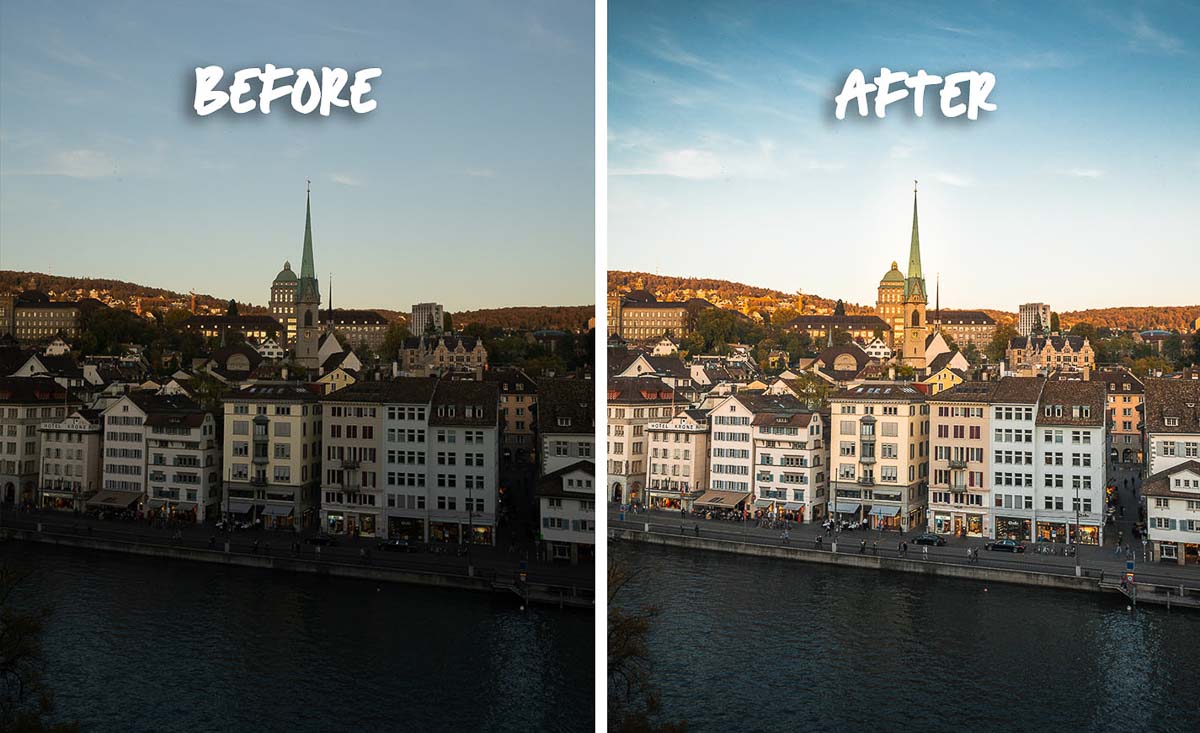
A skill I picked during circuit breaker was learning how to edit my travel photos better with Lightroom . With all the tools in the system, Lightroom can either seem like a magical place or a hell hole of confusion. However, once I got the hang of it, the journey to achieving the perfect picture was very satisfying.
For the more visual learner, there are many helpful Youtube tutorials on how to get started. If you’d like a greater challenge after honing the basics, why not try figuring out your style and making your own presets!
Read also: Lightroom 101: 9 Simple Techniques That Will Instantly Improve Your Travel Photos
12) Interact with other travellers
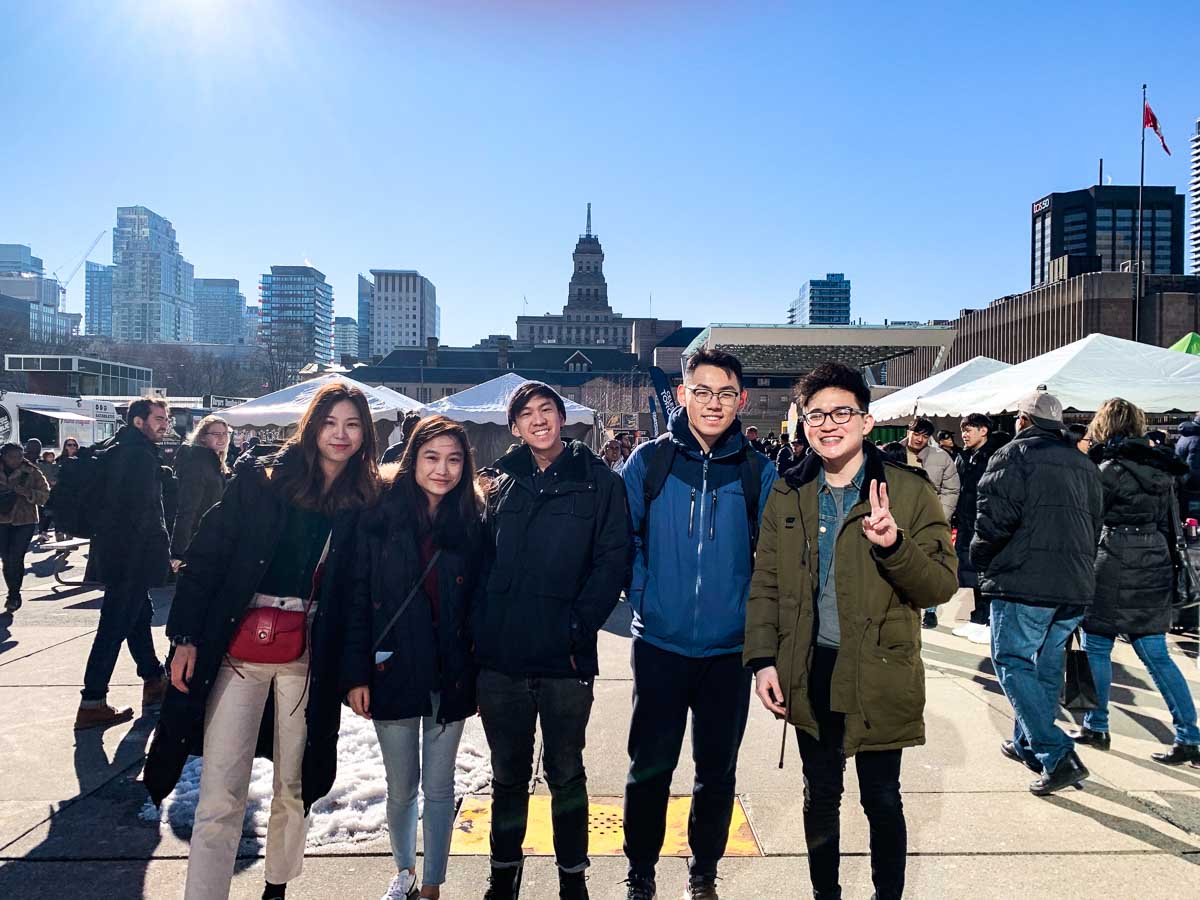
Photo credit: Travis (centre)
Even after googling in-depth about a destination, there are times where research and reviews cannot match up to a friend’s personal recount. I personally prefer talking to other travellers who have been to places I plan to travel to.
On Telegram, SG Travel Insider is a great place to get that second opinion. Here you’ll be able to connect with other travel enthusiasts for advice and suggestions on where you’re heading to next!
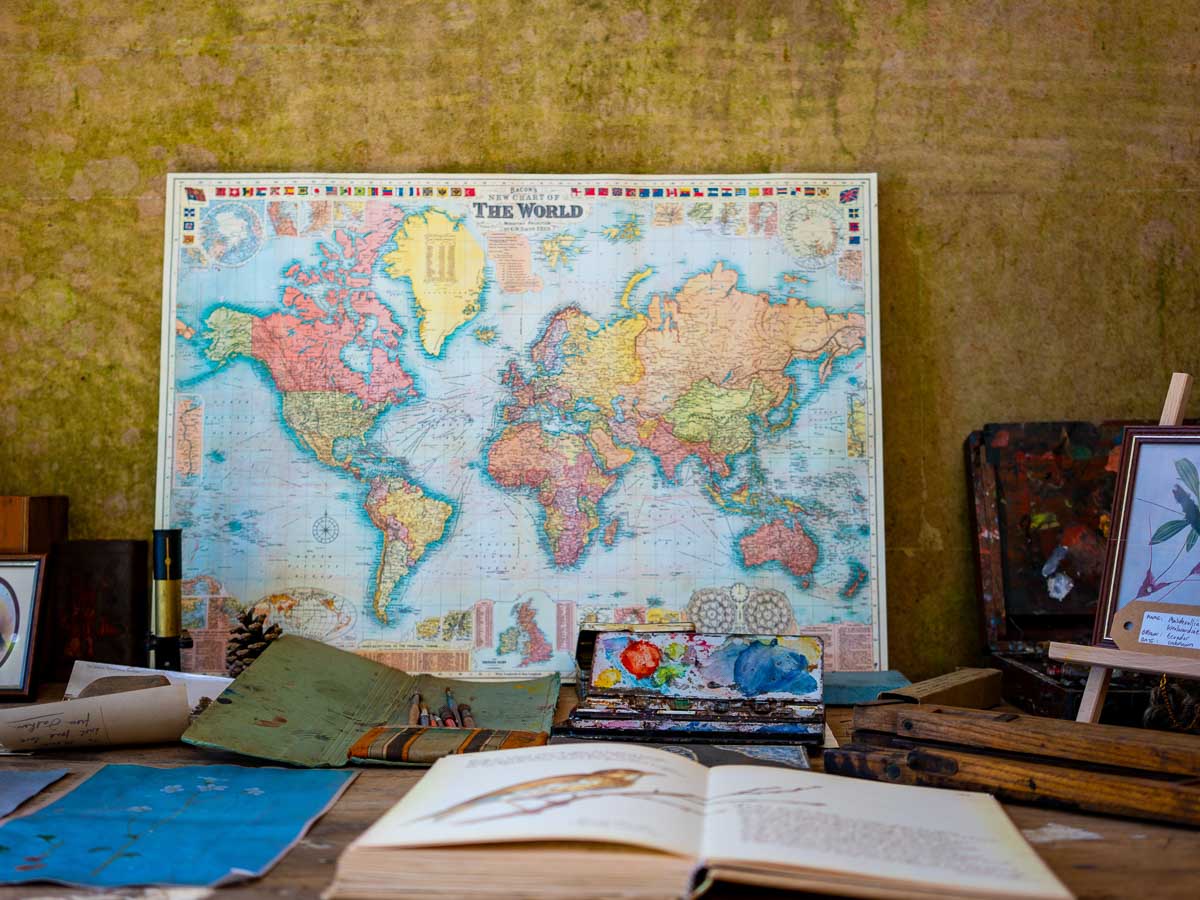
Photo credit: Nicola Nuttall (@nicnutt) via Unsplash
Travel is not the same as before. With most borders closed and few flights operating, our skies have been pretty silent this year.
However, as the pandemic slowly improves, countries are announcing their plans to reopen their borders to international travellers — there is hope! If you’re thinking about backpacking for your grad trip , or visit Iceland when it opens, there is an abundance of helpful guides and itineraries on The Travel Intern to get you started on your pre-trip planning.
Whether you’re learning a new language , creating a playlist or shopping online for travel essentials , these are small ways that can make a big difference during your trip.
That said, there’s no specific formula to pre-trip planning — that’s what makes travelling unique to each person. The final pre-trip tip I can leave you with is to expect the unexpected. Our ‘perfect’ plans might take unexpected turns, but we can still turn seemingly bad experiences into amazing ones!
What other pre-trip plans do you usually make before each trip? Share with us in the comments below!
For more travel inspiration, follow us on Facebook , Instagram , YouTube , and Telegram !
View this post on Instagram A post shared by The Travel Intern (@thetravelintern) on Aug 15, 2019 at 6:30am PDT
RELATED ARTICLES MORE FROM AUTHOR

The Ultimate USJ Guide and Tips (2024) — Universal Studios Japan

Mobile Payment in China: Step-by-step Guide to Using Alipay and WeChat Pay without a Chinese Bank Account

Singaporean Guide to Travelling in Retirement with S$2.7k a month

The Best Card for Overseas Spending — Multi-currency Cards vs. Miles Credit Cards

The Ultimate Guide to Choosing the Best Travel Laptops in 2020 – Thin, Light and Powerful

19 Unique Travel Experiences You Can Buy That Make You Richer
Leave a reply cancel reply.
Save my name, email, and website in this browser for the next time I comment.

11 Things to do in Clark, Philippines — A Quiet Adventure...

20 Things to Eat-See-Do in Sabah’s Capital Besides Climbing Mount Kinabalu

Experience Macao Singapore Roadshow: Get Exclusive Deals, Experience the Macau Grand...

Ultimate 6-Day Adelaide Itinerary — The Best of South Australia’s Underrated...

31 New Deals and Attractions in Singapore this April 2024

- Terms Of Use
- Privacy Policy
How to Create a Brilliant Tour Itinerary
By Breanna Lawlor
Share this article:
- Facebook icon
- LinkedIn icon
- Twitter icon
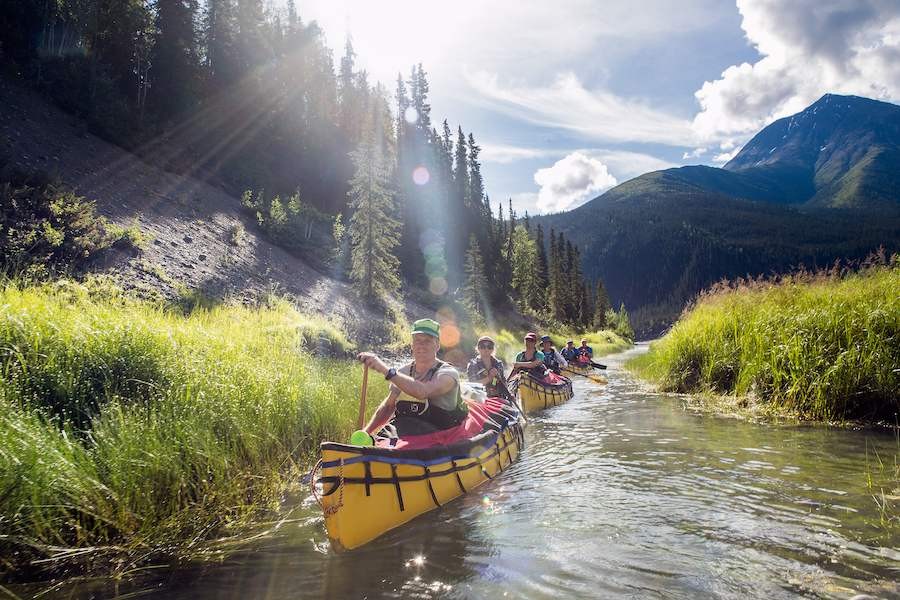
Do you enjoy puzzles? Sure, they can take hours to complete, and there’s no set method to approach them, but isn’t it so satisfying to plunk in that last piece and admire your handiwork?
Designing a tour itinerary is a lot like completing a puzzle. It might take a little longer than you thought when you initially set out, and there’s no one way to design a tour. Many possible variations can get you to your destination and delight guests along the way.
Just for fun, imagine what would happen if you marketed a tour without a tour itinerary? It’s hard to picture guests feeling confident that they’d receive enough value without having an idea of what to expect.
Understandably, a tour itinerary acts as a trip plan for your guests planning a vacation and wanting to feel prepared. So, we’ll look at what you need to include in the different types of tour itineraries in tourism and how to display them in an easy-to-digest way for your prospective guests.

What is a tour itinerary?
A tour itinerary acts as a roadmap for your future guests. It tells them what they’ll be doing and seeing should they opt to book your tour. Plus, it outlines arrival time(s), frequency and duration for each tour.
Before you begin laying the groundwork for your tour, see what some of your competitors are offering. Grab a few brochures to explore details, highlights and overall tour structure.
For guests, part of the draw of booking with a tour operator is having a pre-planned itinerary. This means travellers can simply show up and enjoy the tour.
Picture yourself in a potential guest’s shoes. They’re looking at different tour options, trying to decide what activity and where to book. A detailed tour itinerary simplifies the booking experience for prospective visitors and can be a powerful marketing tactic in motivating these visitors to book your tour.
So, right in your tour introduction, describe the experience to travelers as if they were on the phone or standing in front of you. To sound approachable and lighthearted, try speaking your tour itinerary description aloud. There are many components you’ll need to factor into your itinerary and we’ll dive into those next.

Components of itinerary in tourism
Let’s say you’re evaluating whether to offer one type of tour or a range of options, try to imagine what guests will be curious about. It’s important to determine how much you can fit into your tour’s duration without pushing the timeframe.
Your guests are seeking experiences that will immerse them in the local culture and foods. As a tour guide, this is an amazing opportunity to showcase off-the-beaten-path locations and experiences designed to provide guests with an authentic experience.
In your tour description, included details that customers might ask about so they can self-screen instead of booking a tour that isn’t quite right for them. When working on drafting up an outline for your tour itinerary, make a note of what you want to lead with. For example:
- Is this tour suitable for kids?
- What type of weather can guests expect while on tour?
- Is there a certain type of experience or skill required to enjoy this tour?
- Will guests be able to take photographs on tour?
- Is a lot of walking involved on this tour?
- Do tours run frequently or are they only offered at a certain time?
A tour itinerary will look different depending on whether you offer hourly, single-day and multi-day experiences. Here are some basic steps to follow when looking at components of a tour itinerary:
1. Start by researching ideas for your tour
Deciding on what to offer is a challenge. Before you decide on your tour name and start marketing, ensure you explore a handful of ideas. You’ll want to see how seasonality affects your future plans, discover the type of equipment you’ll need. Factor in variables like weather and guest numbers before committing to a specific tour type.
2. Evaluate the competition
You might have a brilliant tour plan in mind, but is it realistic? When creating a tour from scratch it’s wise to understand your competition and whether your ideas are realistic. So while the possibilities are endless, building sustainable tour business needs to look at the competition in your area.
3. Look into partnering with vendors or attractions
When evaluating opportunities to share the workload, are there fellow experience providers that your tour business might align with?
Sure, some might look like competition at first glance, but what if there’s a way to benefit from offering experiences in the same region? Consider exploring partnerships that offer complimentary activities, meals and chances to visit unique landmarks that might save you doing some of the work.
4. Decide on the mode of transportation
As you fine-tune the plan for your tours, you’ll need to figure out how travellers will move around. Your transportation needs will be based on guest count and whether you’re planning to visit uneven terrain while sightseeing on tour.
5. Find out where to accommodate guests
One of the biggest challenges of multi-day tours is in coordinating the logistics. Accommodation, meals and transportation will all need to factor in your group size.
Since longer tours typically come with a higher price tag than hourly or single-day experiences, guests expect almost everything to be taken care of for them. Fortunately, with larger groups, you’ll be privy to lower rates for blocks of hotel rooms and the ability to book at early-bird rates.
So, while might make more sense to seek out different types of lodging, like entire homes instead of a hotel, accommodations will need to align with the type of experience you’re offering guests. If you’re offering a high-price tag tour, guests may be pretty surprised if they’re offered a more rustic experience.
6. Plan the route
Part of the fun of designing a tour is trying it out yourself to see if you’re enjoying the experience. There’s a saying I remember from 11th-grade math that runs along the lines of failing to prepare is preparing to fail. If you’re pouring energy into perfecting a tour itinerary on paper, you need to give it a dry run to see if your expectations match reality.
7. Walk it out
So, consider doing a walk-through or inviting a few friends to join for the added benefit of another perspective. This will help fine-tune the details and assist with getting the timing down. And, as you grow more familiar with your tour, you might discover better ways to approach the route or plan out points of interest.
For some National and Provincial Parks, you’ll also need to obtain a permit in advance just to visit certain sites. In Canada, you’ll want to research the Parks Canada website and here for information on permits in the USA , Based on your location, you’ll want to coordinate with your closest Tourism office.

Example of a tour itinerary description
Creating memorable experiences for your guests starts with how to market your offer. When describing a tour, you want guests to develop an emotional connection to the experience.
Let’s say you’re planning to offer a 2-hour paddleboard sunset cruise in the summer months. Your introduction could describe it as something along the lines of:
“Imagine gliding across the pacific ocean with unparalleled views of the scenic coastline, finishing with the warm glow of the sunset in a protected area of the harbour. You’ll have a whale of a good time. We hope to “seal you” you soon for our most popular 2-hour summer sunset paddle tour.”
In just a few sentences, guests can imagine themselves immersed in the experience. You’re highlighting the possibility of seeing ocean wildlife while simultaneously describing the serenity of this tour.
To further support travelers reading the full itinerary, aim to make your copy and tour descriptions easy to scan. To do so, add in plenty of bullet points, bold and photos to highlight components of the tour in a visual way.
Common tour intinerary questions
- When will the tour(s) depart and return?
- What is the frequency of your tour?
- Where will the central meeting point be?
- Is accommodation be included in the tour?
- Do you offer transportation to and from the tour?
- Will extras be available on site or for purchase?
Then, in the next section, repeat important information like meeting locations and tour frequency along with whether pricing differs depending on the time or date of booking. Are guests required to book in advance or book private tours if they book four or more spots? Address all of the questions in your tour description and make it easy for guests to find out if yours is the right type of tour for them.
3 different types of itineraries in tourism
Imagine you’re evaluating whether to offer an hourly or full, single-day tour. To deliver on a promise, explore how much you can fit into your tour’s duration without pushing the timeframe.
- Hourly tours can run anywhere from 1 – 4 hours, based on what you’re going to include in the tour
- Plan for an activity that doesn’t make guests feel rushed by including enough time to put on extra gear or listen to a safety briefing pre-tour
- While on a walking tour, make a point to visit few landmarks, while also allowing guests “free time” to take photos and understand the culture
- As a bonus, you’ll be able to stay on schedule and still accommodate time for your guests to take photos
2. Single Day Tour
- A single day tour might last anywhere from 4 to 8 hours
- Curate a schedule that accounts for buffer time
- Account for ample time for guests to take photos
- Clearly describe if/when any meals are included
- Structure sightseeing for when places are less busy
- Describe meeting locations and tour frequency
3. Multi-day Tours
- Determine accommodation options for groups
- Describe the type of transportation plus pick-up/drop-off locations
- Source suppliers for meals and restaurants
- Plan out transportation to and from each new location
- Factor in a few different activities to entertain different guests
Whether you’re offering short adventures or multi-day tours , make a point to test out your tour. This will allow you to see if your timing is accurate and if you need to make any changes. As a result, you’ll be able to make adjustments that help to elevate the experience for all of your guests.

Final thoughts
Designing a tour itinerary isn’t just about fancy words and shouting from the rooftops; it’s about designing a tour that your guests want to book.
Travelers seek out activities and experiences that align with their expectations. So, if you’re hoping to create a tour itinerary that is attractive, you need to play into their interests and what you know works.
So many factors go into whether people decide to book; the images you choose, the layout of your website, your marketing tactics and the type of tour experience you offer.
Knowing this, if you can prepare travelers and exceed their expectations, you’ll have guests raving about their trips — inspiring more guests to book with you.
Want more tips like this in your inbox?

Subscribe to the Checkfront Newsletter
Read new tips on how to get more bookings every month.
Related Articles
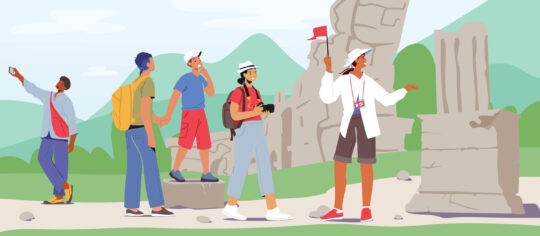
How to start a Tour Operator business in 2024: A step-by-step guide
Dreaming of running a successful tour company? Check out these strategies!
- Business Tips

3 tips to tackle cart abandonment and capture more bookings in 2023
Imagine this: a shopper comes across your website and finds an enticing experience offering. They read your product description, flick…
Search Blog
Subscribe to our newsletter.
Get tips and strategies to grow your business and impress your guests.
Blog Categories
- Booking Management
- Guest Experience
- Marketing Strategies
- Operator Highlights
Get Daily Travel Tips & Deals!
By proceeding, you agree to our Privacy Policy and Terms of Use .

The Essential Pre-Trip Checklist
Caroline Costello
Caroline Costello's travel accomplishments include surviving a 2 a.m. whitewater rafting excursion in the Canadian wilderness, successfully biking from Dusseldorf to Cologne without a map, and gaining access to a covert pizza speakeasy in New Orleans.
Caroline is an active member of the Society of American Travel Writers (SATW). Her work has appeared on USA Today , the Boston Globe , AOL.com, MSNBC.com, ABC News, TODAY Travel, and CruiseCritic.com, among other publications.
Travel Smarter! Sign up for our free newsletter.
For a stress-free, tranquil trip, preparation is key. If you’re getting ready to go on vacation, download our pre-trip checklist to help you take care of the essential tasks before embarking on your getaway. This customizable and editable chart includes everything you’ll likely need to do before heading out the door, from arranging pet care to taking care of finances. Download the list and add in any extra preparations you might need to complete—and you’ll be well on your way to a worry-free adventure. NEW: Download a mobile-friendly version of the pre-trip checklist.
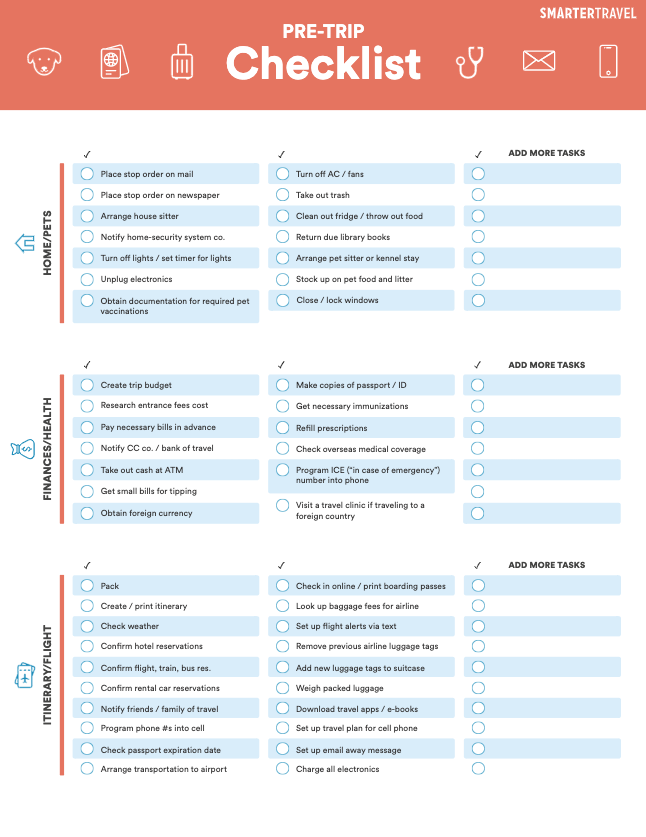
Pre-Trip Checklist for Home/Pets
- Turn off AC/fans
- Take out trash
- Clean out fridge/throw out food
- Return due library books
- Close/lock windows
- Unplug electronics
- Turn off lights/set timer for lights
- Notify home-security system co.
- Arrange house sitter
- Place stop order on newspaper
- Place stop order on mail
- Stock up on pet food and litter
- Arrange pet sitter or kennel stay
- Obtain documentation for required pet vaccinations
Pre-Trip Checklist for Finances/Health
- Visit a travel clinic if traveling to a foreign country
- Program ICE (“in case of emergency”) number into your phone
- Check overseas medical coverage
- Refill prescriptions
- Get necessary immunizations
- Make copies of passport/ID
- Notify CC co./bank of travel
- Pay necessary bills in advance
- Research entrance fee costs
- Create trip budget
- Take out cash at ATM
- Obtain foreign currency
- Get small bills for tipping
Pre-Trip Checklist for Itinerary/Flight
- Look up baggage fees for airline
- Add new luggage tags to your suitcase
- Download travel apps/e-books
- Set up away message
- Set up flight alerts via text
- Weigh packed luggage
- Set up a travel plan for cell phone
- Charge all electronics
- Remove previous airline luggage tags
- Check in online/print boarding passes
- Confirm rental car reservations
- Confirm flight, train, bus reservations
- Confirm hotel reservations
- Create/print itinerary
- Check weather
- Notify friends/family of travel
- Check your passport expiration date
- Program phone numbers into cellphone
- Arrange transportation to the airport
More from SmarterTravel:
- The Essential Beach Packing List
- 10 Things You Should Never Pack in Your Checked Bag
- 10 Things to Pack That Will Save You Money
Editor’s note: This story was originally published in 2012. It has been updated to reflect the most current information.
We hand-pick everything we recommend and select items through testing and reviews. Some products are sent to us free of charge with no incentive to offer a favorable review. We offer our unbiased opinions and do not accept compensation to review products. All items are in stock and prices are accurate at the time of publication. If you buy something through our links, we may earn a commission.
Top Fares From

Don't see a fare you like? View all flight deals from your city.
Today's top travel deals.
Brought to you by ShermansTravel
Porto to Lisbon: 7-Nt, Small-Group Portugal...
Indus Travels

Greenland: Luxe, All-Incl. 11-Nt Exploration Small-Ship...
Swan Hellenic
Ohio: Daily Car Rentals from Cincinnati

Trending on SmarterTravel
- Work With Us
- Blogging Bootcamp

- Van Conversion Academy
- Campervan Shop
- Campervan Rentals
- Plan a Trip
- Itineraries
- Destinations
- Responsible Travel
- Family Travel
- Budget Travel
- Scuba Diving
- Travel Credit Cards
- Digital Nomad
- Teach English Abroad
- Blogging Resources
- Income Reports
- Travel Shop
- Meet Katie & Ben
- About Two Wandering Soles
- Personal Stuff
- Portfolio & Press
How to Plan a Trip: Your Step-by-Step Travel Planning Guide
Home » Blog » Travel Tips » How to Plan a Trip: Your Step-by-Step Travel Planning Guide
Planning a trip overseas, whether long or short, can seem overwhelming. But it doesn’t have to be! In this article, we’ll show you how to take the stress out of travel planning, by laying out a simple step-by-step guide on how to plan a trip that’ll ensure you don’t forget anything.

Have you ever been overwhelmed by the idea of planning a trip because it seems too, well… overwhelming ?!
There’s a lot to think about when planning travel: from getting a visa, to figuring out transportation, to booking accommodation and getting local currency, it can be downright stressful.
And it’s a bit contradictory, right? Stressing out over planning what is supposed to be a relaxing vacation. We’ve definitely been there. Many times , in fact.
But we’ve learned our share of lessons along the way and now we’re here to help.
In this article, we’ll show you how to plan a trip without the stress by laying out a simple step-by-step guide that’ll ensure you don’t forget anything.
Here’s exactly what you need to do to take a travel daydream and turn it into reality.
So whether you’re planning a 2-week getaway or a journey with no end date in sight, these steps will take you from the brainstorming phase to stepping foot in your destination. We think you might actually have fun planning your next trip. That’s a dare .
Alright, take a deep breath, because we’re digging right in!
How to Plan a Trip
- Step 1: Figure out your travel budget
- Step 2: Decide on your travel style/partner(s)
- Step 3: Choose a destination
- Step 4: Book flights
- Step 5: Book accommodation
- Step 6: Research things to do
- Step 7: Get travel insurance
- Step 8: Minimize travel risks
- Step 9: Pack your bags
- Step 10: Last-minute prep
Step 1. Figure out your travel budget

Before you can even begin to plan a trip, you need to take a good look at your finances and figure out how much money you have to spend on your adventure. This will dictate a lot of the future steps including where you can travel to and for how long.
This step might sound scary, but we’ve broken it down for you so you can create your very own customized travel budget. We’re even sharing exactly how we afford to travel and stay on budget .
If you have the time before you go, follow these simple steps to save money for your travels .
Step 2. Decide on your travel style / partner(s)
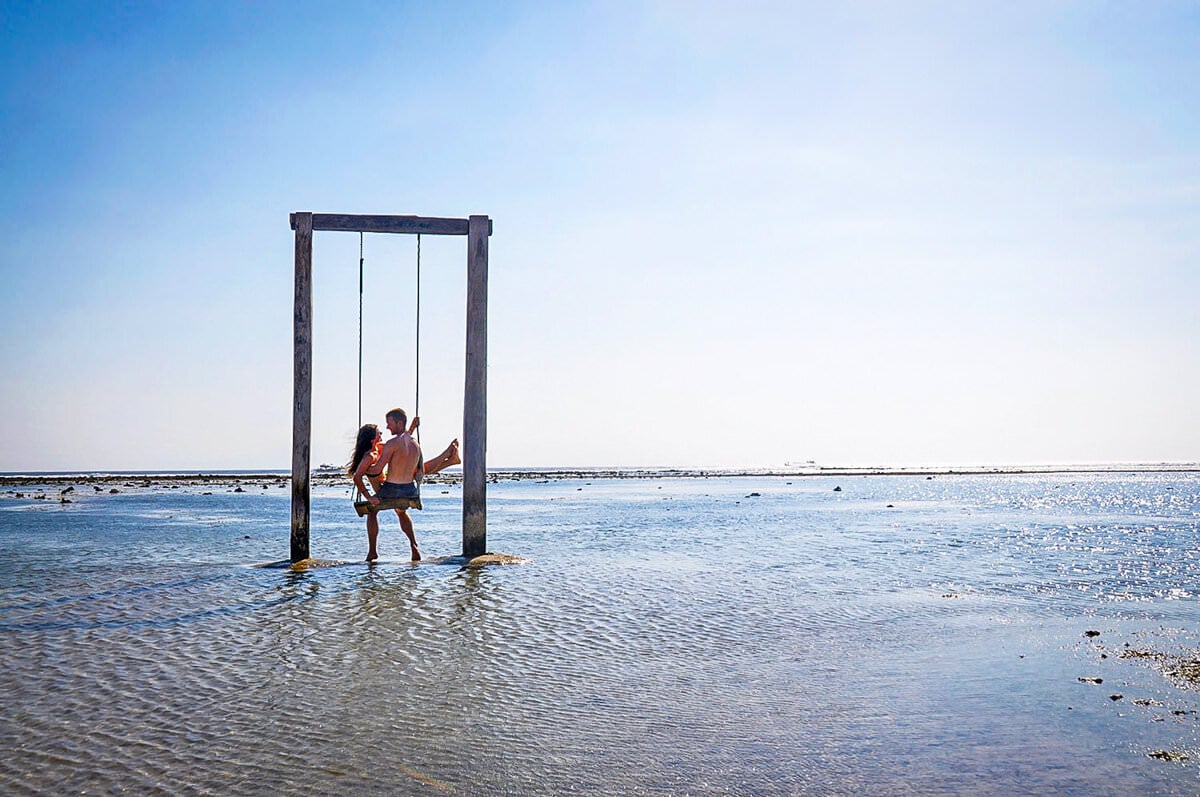
Is this a short vacation, a 3-week trip overseas or long term travel that you are planning for?
…And who’s coming with you?
Take a moment to answer this question… Are you going to be traveling solo or with a partner? A group of friends, or with your family and children in tow?
The answer to this question can help shape your trip quite a bit. For instance, a solo trip to Tahiti may not be the best choice, as this popular honeymoon destination is going to be swarming with couples on romantic getaways. Likewise, party-centered Ibiza might not be the best place for a wholesome family vacay.
- Traveling Solo? Traveling solo is an incredibly freeing experience, and there are many great cities around the world for solo travelers .
- Want a romantic getaway? Romance isn’t just limited to beaches and resorts. Check out our roundup of some of the top romantic destinations for every type of traveling couple , some of which might be a little unexpected.
- Looking for a perfect family vacation spot? There are destinations all over the world that are amazing spots to bring your kids !
If you are planning on traveling with a partner, don’t book your flights without asking them these questions first…
Step 3. Choose a destination
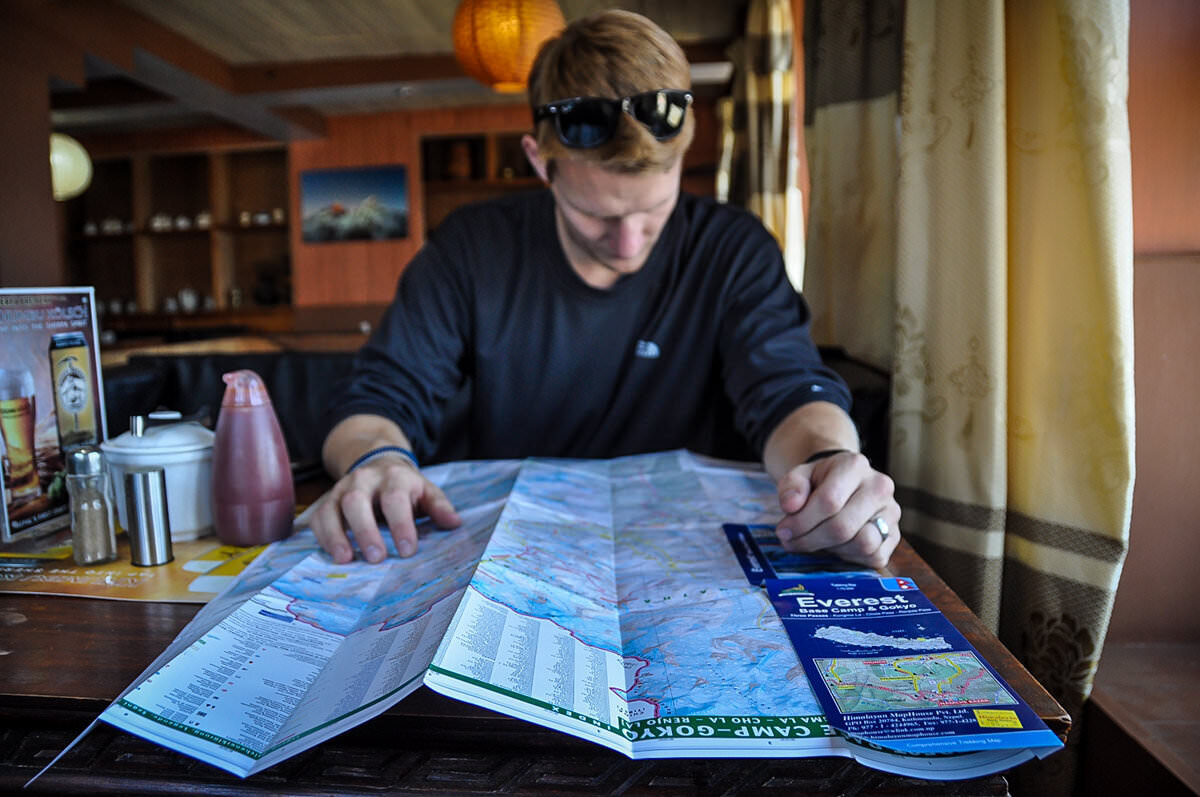
This step may seem obvious for some, maybe you already know exactly where it is you want to travel and that’s why you’re planning this trip in the first place. For those of you that have a destination nailed down, there are still a few things we’d suggest you consider, you can skip right down to the research step.
For those of you that have the itch to travel, maybe even the vacation time set up, but still have no idea how to narrow down just one place, we suggest looking at a map. No really! Hear us out…
Literally look at a map, and start circling all the cities, towns or attractions you want to visit. Look on Instagram for inspiration. Don’t limit yourself. What do you want to do? What do you want to see and experience? When planning a route, we typically look at other trusted bloggers’ recommendations.
And no need for paper maps anymore, go digital! Here’s a great tutorial on how to use Google My Maps . It’s game-changing.
We figure out how many nights we can stay in each city and how we’re going to get from city to city. We have many itineraries on our Itineraries page where you can see examples of our travel routes and recommendations. We also suggest taking a look at Lonely Planet travel guides .
Once you think you’ve nailed down a place, or places…
Do your research
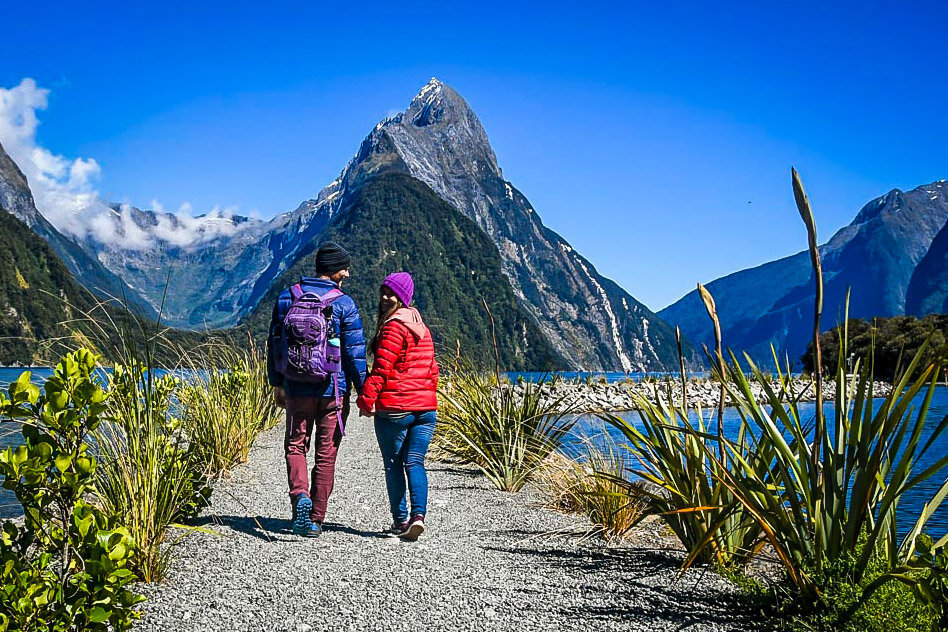
Don’t forget to do a little digging and make sure that the time of year you plan to travel is optimal. We have failed to do our research a few times and it ended up really affecting our trip.
Asking yourself the following questions can really save you the troubles or headaches down the road:
What will the weather be like?
- Will it be the wet season? Hurricane season? Super-duper-unbearably hot?
Example: We traveled in India during the hottest months of the year and literally could not do much outside some of the days because it was 110 °F (43.3 °C). After that, we vowed never to make the mistake of traveling without really understanding the weather first.
Is it peak tourism season? Low season?
- Will it be hard to get a hotel because it’s peak season? Will the lines and crowds at tourist attractions be ridiculous?
- Likewise, if you are traveling during low season, should you expect a lot of the businesses to be shut down? Will closures hinder your chance to see and experience everything you were hoping to?
Example: We visited Croatia in July – its busiest month of the year – and found ourselves super frustrated with the crowds and jacked up prices. We ended up shortening our time there because we were not enjoying it as much as we expected.
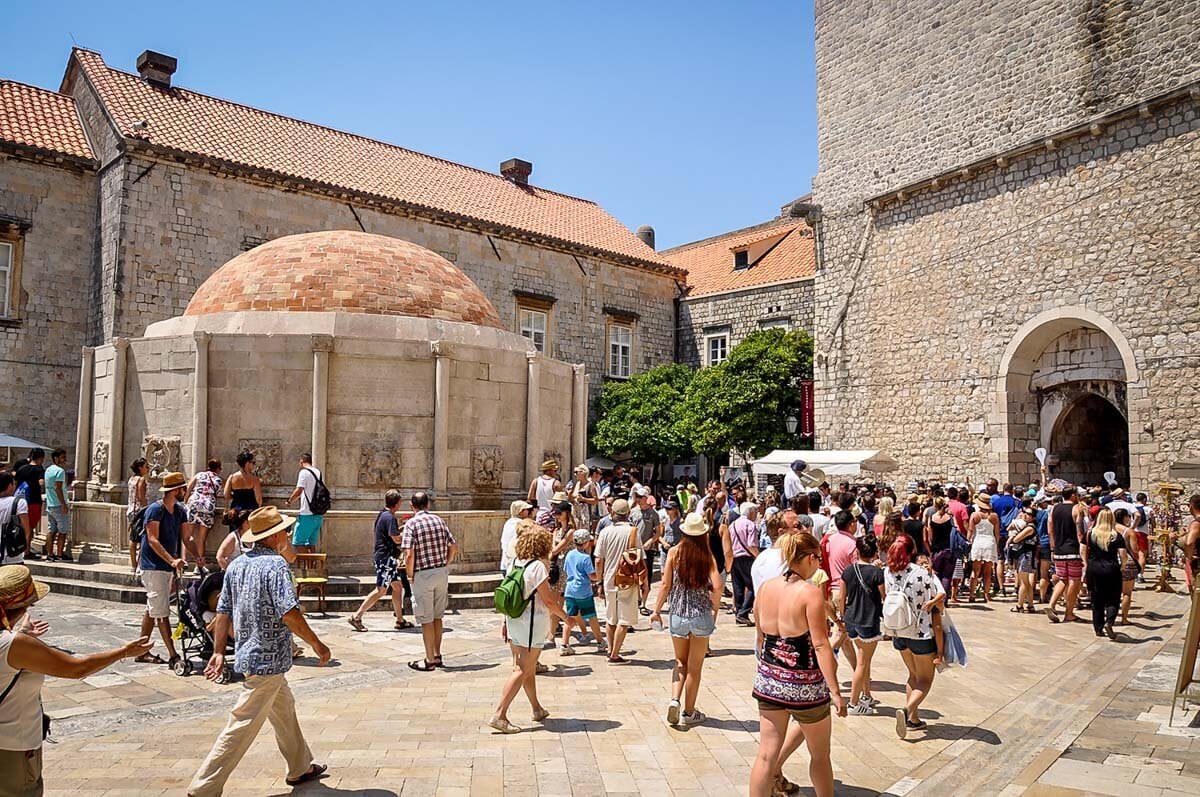
Hold up! Before you start a Googling storm, we’ve got some good news: there are some resources out there that make this process for researching so much faster!
- If you know WHERE you want to go, Travelendar (combination of travel + calendar) will tell you what time of year is best to visit.
- If you know WHEN you want to travel, check out this list that breaks down which destinations are best to visit each month of the year .
- We’ve also done the research for you, nailing down the pros and cons of visiting during different times of the year for a number of popular destinations such as Japan , Bali , New Zealand and Iceland .
But don’t worry if you don’t know where OR when you want to travel… check out this calendar of events around the world for inspiration!
How cool is that?!

These events span all destinations and interests: from European music festivals (like Sziget Festival in Budapest, pictured above!) to cultural celebrations to naturally occurring events like the migration patterns of wildlife in Africa.
When you find an event that interests you, click on it to learn more.
Pace yourself
Thinking about your pace will determine how many of the places you circled above you’ll realistically be able to see.
Do you want to pack in as much as possible, or do you want to choose a couple places and really get to explore them? Do you want to travel slow and take in the culture to really understand how locals live?
Or do you want to tick places off your list and move from city to city, seeing as much as you can? Maybe a happy mixture of slow and fast? This all depends on the amount of time you have and your budget.
Find out visa requirements
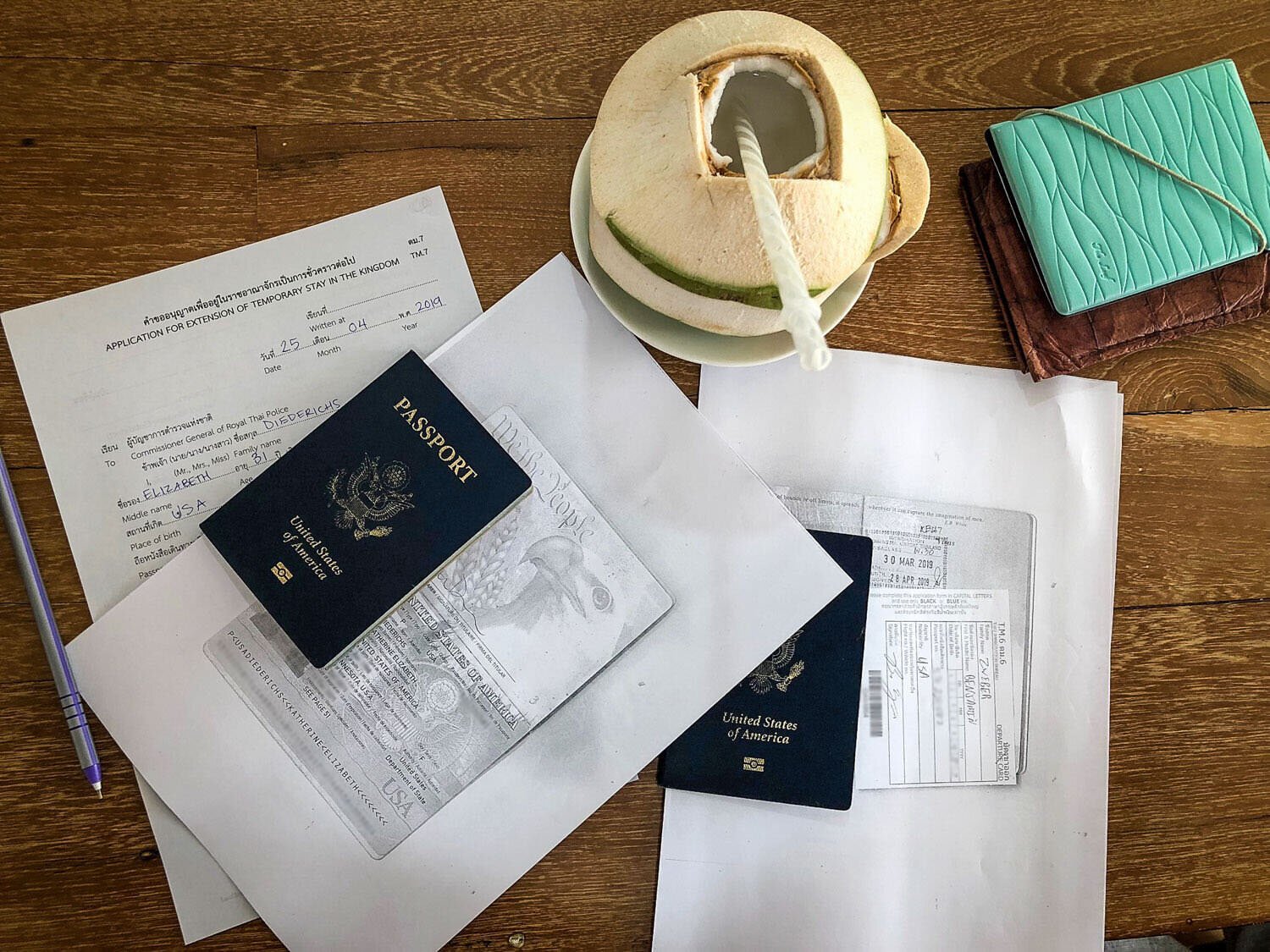
Investigate if you need to obtain a visa for the country or countries you’re thinking of traveling to. You may not need one for the first country you arrive in, but will you need one for the other countries in your itinerary? Can you get a visa online, visa on arrival, or do you need to get it in your home country?
For instance, if you’re traveling to Vietnam, Americans need to apply for a visa ahead of time (and here’s the best and cheapest way to get one ).
If you don’t know if you need a visa, check out your home country’s visa websites:
- USA citizens
- UK citizens
- Canadian citizens
- Australian citizens
- Singaporean citizens
Step 4. Book flights
You know where you want to go? Check. Have your visa? Check.
Now here comes our favorite part: It’s time to book a flight!
First, you’ll need to answer these questions: What airport will you fly into? Are you going to make a round trip and fly out of the same airport? Or are you departing out of a new place?
Tips for getting the best deals on flights:
- Know when to buy. Depending on where you are flying to and from, there are different recommendations for how far in advance you should buy your flight.
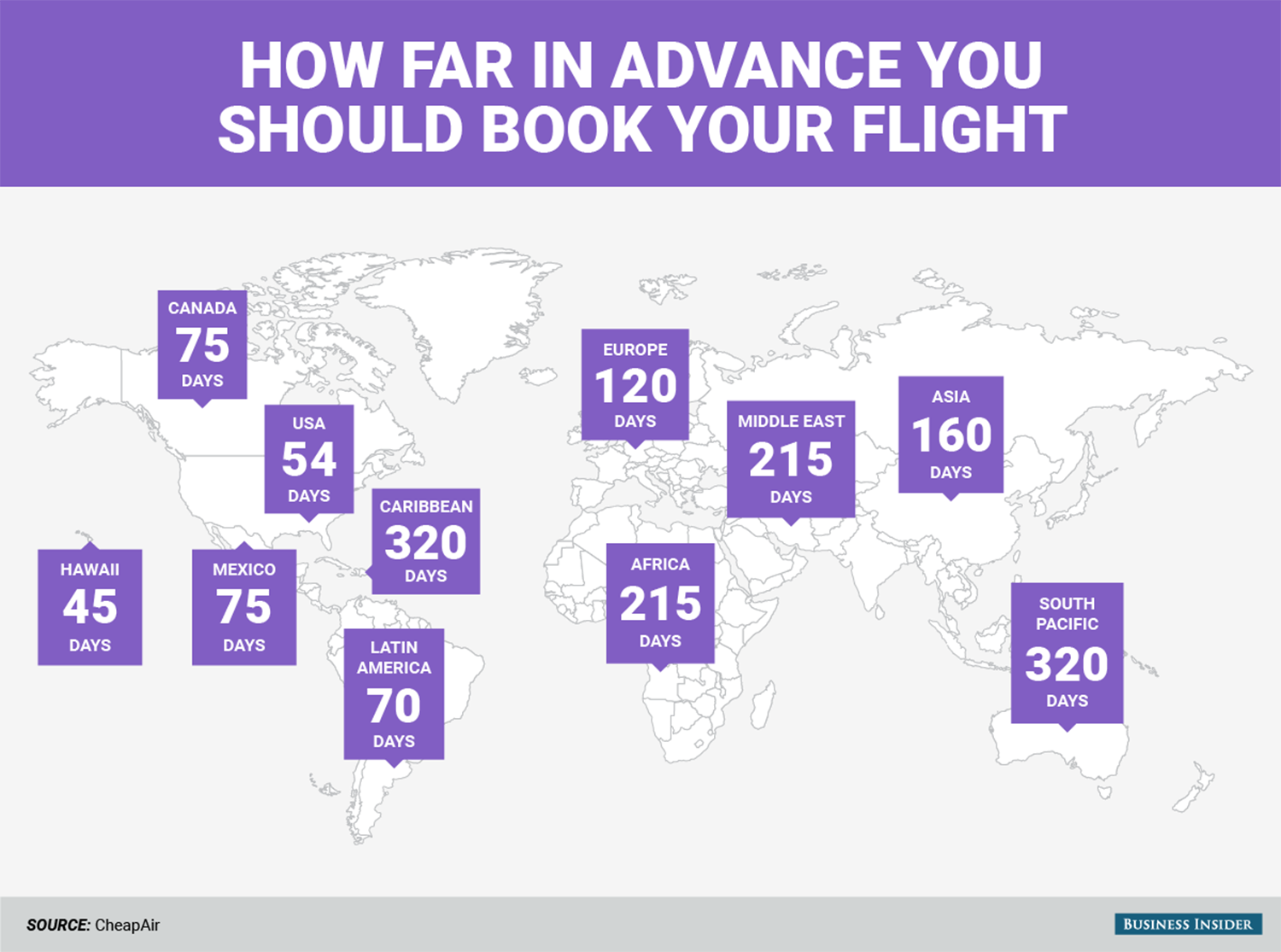
- Play around with breaking the flight up. For example, instead of searching for a flight from Minneapolis to Japan, we’ll search Seattle to Japan. Then we find a flight from Minneapolis to Seattle. This allows you to have a layover in a cool city, and can be a lot cheaper.
- Another good gateway into Asia is flying through China. You can usually find one way tickets to China from major US cities for around $350!
- Sign up for price alerts. Many search engines allow you to sign up for alerts between destinations. You’ll get email notifications when the fare goes down, so you can jump on it!
- There are tons of credit cards that give you miles for purchases. Find the best travel credit card for you here . If you’re inclined to get an airline credit card, think about the major airlines at your home airport. You’ll most likely be booking flights with that airline so might as well rack up the points.
Don’t forget to sign up for the frequent flyer miles program with flight you choose! Many airlines are part of a broad network and the miles are sometimes transferable.
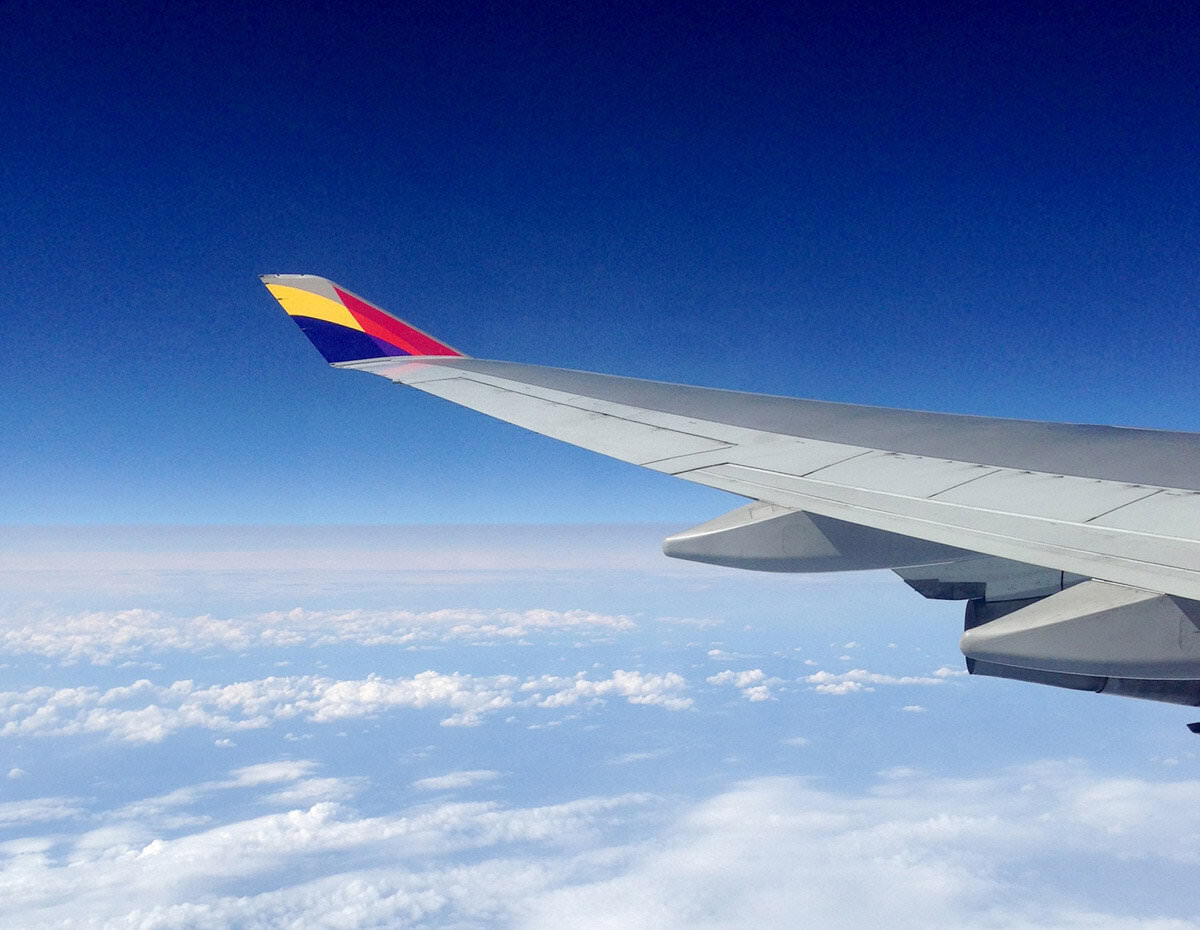
Understanding WHY a flight is cheap is important. Make sure you think about the arrival time at your destination. The cheapest flight might get in at 2 in the morning and you’ll have to wait for hours for your guesthouse to open, or hotel check in time.
On the flipside, if you depart super early in the morning, you may have a difficult time hailing down a taxi that early (and have to pay a premium for the ride). Sometimes the absolute cheapest fare will actually cost you more in the end.
If your trip doesn’t involve taking a flight, check out these tips for planning an epic USA road trip .
When searching for a flight we like to use Skyscanner first because it allows you to search across the entire month to find the cheapest flight.
Want more tips for finding the best deal on airfare? You’re in luck, because we have an entire article dedicated to how to find cheap flights !
Are you a nervous flyer? Don’t let the anxiety of flying prevent you from traveling. Check out these tips for fearful flyers that will help put you at ease.
Step 5. Book accommodation
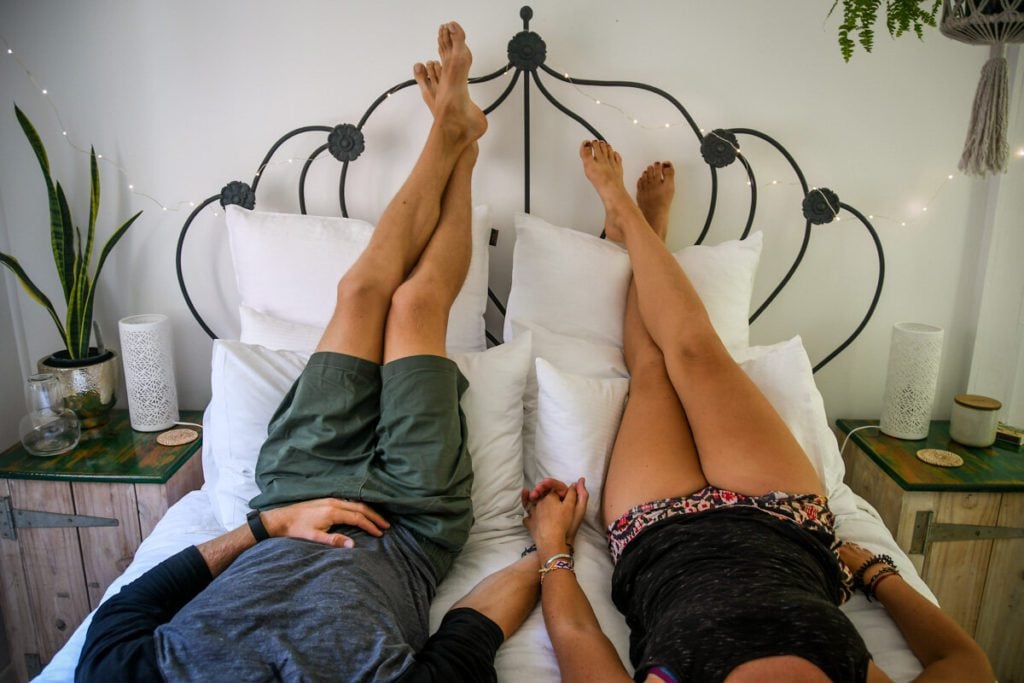
Depending on how long your vacation is you may choose to book all your accommodation ahead of time or none at all.
For instance, if you only have two weeks, it might be best to arrange your hotels or hostels online so you don’t waste precious time trying to figure out accommodation when you’d rather be exploring. Plus, you don’t want to run the risk of everything being booked up!
If you’re traveling long term, however, you may just book a few days at a time. Or you may prefer to wing it and walk into hotels once you arrive in a town.
We put a lot of consideration into where to book our accommodation when planning a trip.
First, we want to consider location. We may start to research things to do in a destination before this step so we have a better idea of where we will want to visit and what the most central location will be for us.
If a city is known for its nightlife, we might consider staying in a quieter neighborhood. If accommodation costs skyrocket the closer to the city center you get, we may consider saving money to stay somewhere further out.
Transportation
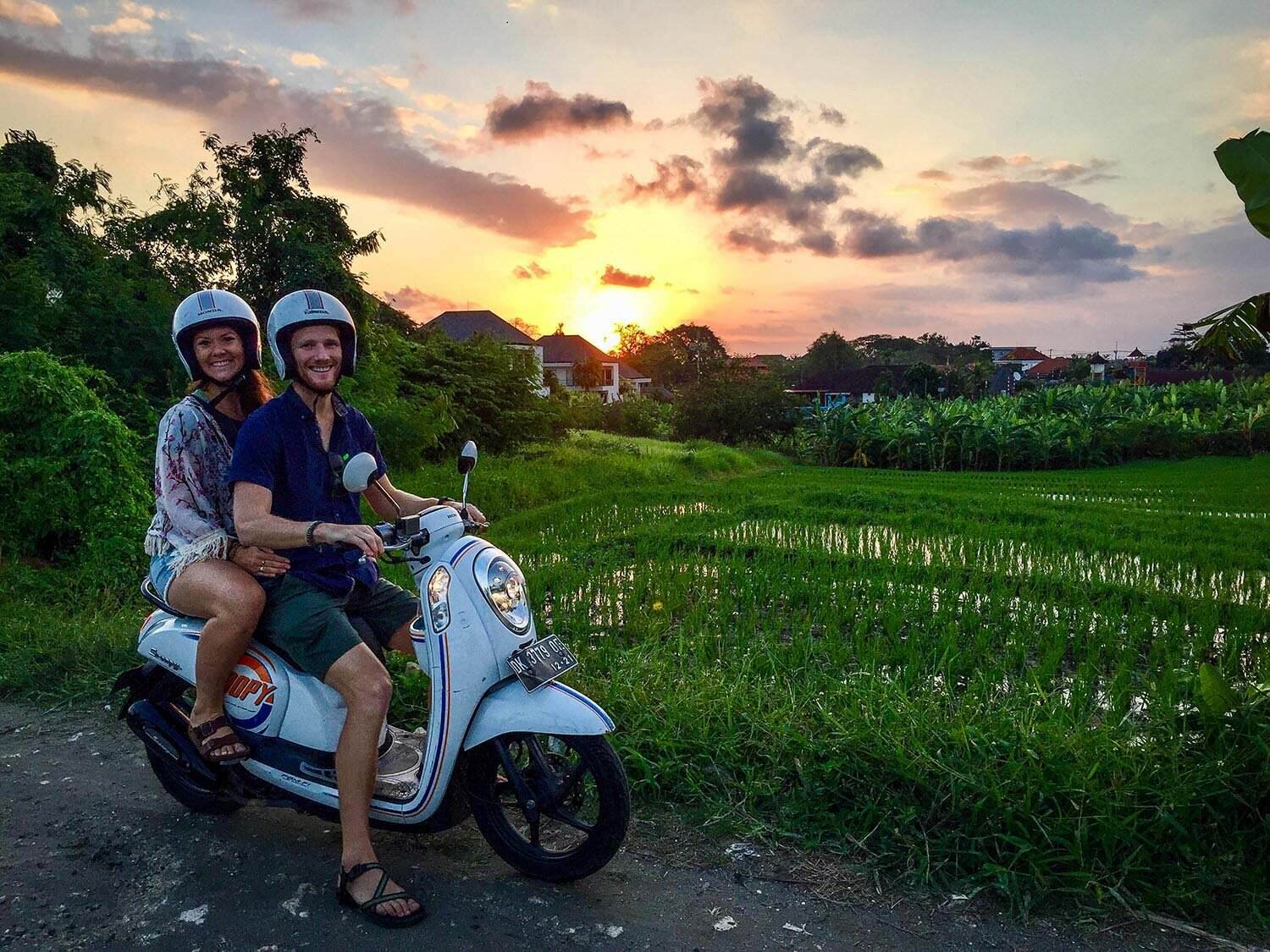
We also consider transportation in a new city. If the city is very walkable, we’ll want to stay right in the center. If Ubers or public transportation is easily accessible, we may consider saving money by staying further outside the center. We recommend doing plenty of research on transportation options and costs before nailing down your accommodation.
Length of stay
If we are planning to stay in one location for a longer period of time (a couple weeks or more), we like to have a place that feels a bit more like “home” than a hotel. We love to cook, so a place with a kitchen allows us to enjoy our passion and save money on dining out at the same time! We usually use Airbnb or Booking to find apartment-style rentals in new cities.
If we have a short layover in a city, or are staying just a few nights, we might splurge on a hotel, or even try to save money by booking a hostel.
Everything you need to know about Airbnb : You’ll find loads of info on how to book Airbnbs, red flags to watch out for when booking, and our favorite Airbnbs.
Booking resources
Depending on where in the world we’re traveling, we switch up our booking sites. Here are our favorites:
- Asia: Booking or Agoda (we find Airbnb is only available in certain cities/countries and not in others in Asia)
- Europe: Booking , Airbnb or Hostelworld
- USA: Airbnb (we rarely stay in hotels in the US and Hostels aren’t nearly as prevalent in the US as elsewhere in the world)
- South & Central America: Hostelworld , Airbnb or Booking
Step 6. Research things to do
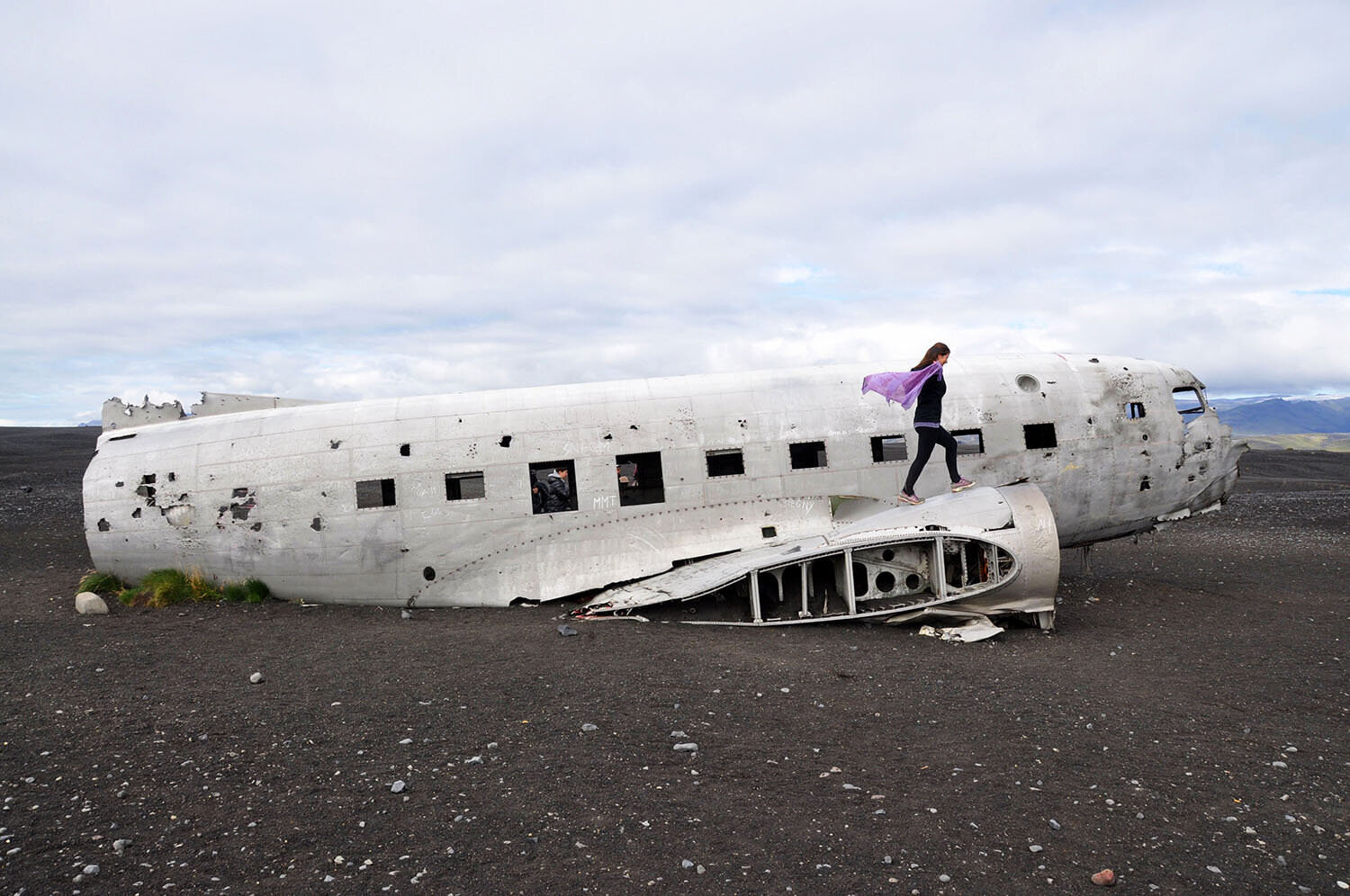
When talking about how to plan a trip, this is where the fun really starts … We LOVE doing research to find out what kinds of adventures we can have in a new destination.
Here are a few of our favorite resources for researching travel destinations:
Pinterest : Probably the first place we look when we get curious about a new place. We use Pinterest as a search engine (just like we would use Google!) and we have found in our experience that there is TONS more helpful content on travel there than if we were to try and sift through the first page of Google. We love that you can save articles in organized boards as well to return to later (you may have noticed the Pins we create at the bottom of all of our own articles).
Bloggers: We are constantly looking to other bloggers we trust for advice on new destinations. We have some we follow closely so we always know where to check if they have information on a place. We like to read a few different suggested itineraries for new cities to figure out what the can’t-miss attractions are and get ideas on how to plan our own itinerary. We leave comments on posts and reach out via social media if we are still left with questions after reading a blog post about a new place.
Airbnb Experiences : Sometimes just checking out what’s offered on Airbnb Experiences is a great way to get ideas of cool things to see and do in a new place. You might even find an experience or 2 you want to sign up for!
Trip Advisor: We like to check reviews for things on trip advisor to see what other travelers have to say about certain experiences or attractions. There can be some seriously good advice on there!
Step 7. Get travel insurance
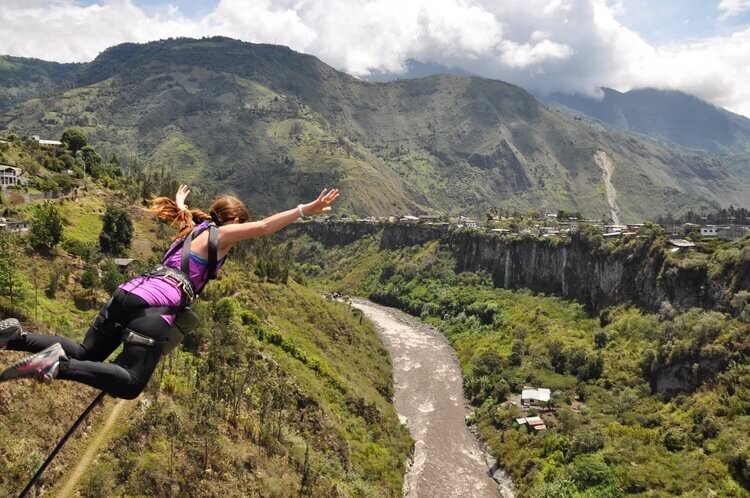
Even though you might be safer abroad than in your home country, accidents happen everywhere and you should always be covered. We never leave home without travel insurance and neither should you.
One of the most popular travel insurance companies is World Nomads . They cover anyone worldwide and are extremely easy to use. We were covered by them when we trekked to Everest Base Camp and were very happy with our experience. Fill out the info below to get an instant quote:
For more information on how to pick a policy and what we look for in travel insurance, check out our detailed travel insurance comparison article .
Be sure to read our essential travel safety tips for more detailed advice about how to stay safe and protect your belongings while traveling.
Step 8. Minimize travel risks

When breaking down the steps for how to plan a trip, this is an important one. There are plenty of steps you can take before you even set foot in a country to minimize your risk of something going wrong.
Register on your country’s Smart Traveler program
For Americans, you should sign up for the Smart Traveler Enrollment Program (STEP). Through STEP you’ll get emergency updates that would affect your travels, such as bad weather or civil unrest or protests.
It will also give you easy access to your embassy in the country you’re visiting. Lastly, if anything bad were to happen to you on your travels, you’d be easier to track down. Check your country’s travel department for similar programs.
Get all necessary Immunizations ahead of time
Before setting foot in a new country, you’ll want to be sure to protect yourself from foreign disease. Use the CDC website to research vaccinations and medications you might need in the destination(s) you are planning to visit. We’d also advise visiting your doctor before a longer trip to make sure all of your health concerns are taken care of.
Scan your documents and email yourself a copy
Scan a copy of your passport and any credit cards you’re bringing, and email it to yourself. Do the same for your travel insurance documents and receipts of the valuables you’re carrying. If anything happens to these while you’re traveling, you’ll have an electronic version.
Know common scams

While you’re in research mode, do a quick search of common scams in your destination. Being aware of popular scams is often all you need to avoid falling victim.
We have run into plenty of known scams on our travels, especially in bigger cities like Bangkok , and have even fallen victim to some ourselves. Unfortunately, scams are a risk you run in traveling, and sometimes unavoidable, but the more informed you are, the better prepared you will be to avoid getting caught in a tourist trap.
Bring backup credit cards
If you are traveling in a group or as a couple, you have a bit of a support system (assuming you each bring at least one credit card).
This tip is particularly geared towards solo travelers.
You will always want to bring a backup credit card (and perhaps a backup debit or ATM card as well) in case of emergencies. We’ve been in situations abroad where our cards have been stolen (sometimes it’s not always obvious as it happens with a swipe and we still have the card in our possession) and if you don’t have a backup, you will have a very hard time accessing your money.
For this reason, we like to keep our back ups in a separate location in our luggage (one in our hand luggage, one in our suitcase) and then leave one behind at our accommodation in case we were to be mugged. It may sound a bit extreme, but it’s always good to be prepared!
Secure your belongings
It should go without saying that you’ll want to keep your belongings, and especially your valuables in secure places while traveling (you know, use a purse with a zipper for less-easy access and don’t hang it on the back of your chair on a crowded street corner cafe). There are some items you can purchase ahead of time to help keep your belongings safe while traveling.
- Basic travel locks
- Bluetooth tracking luggage locks
- Hidden pocket scarf
- A camera bag disguised as a purse
Step 9. Pack your bags
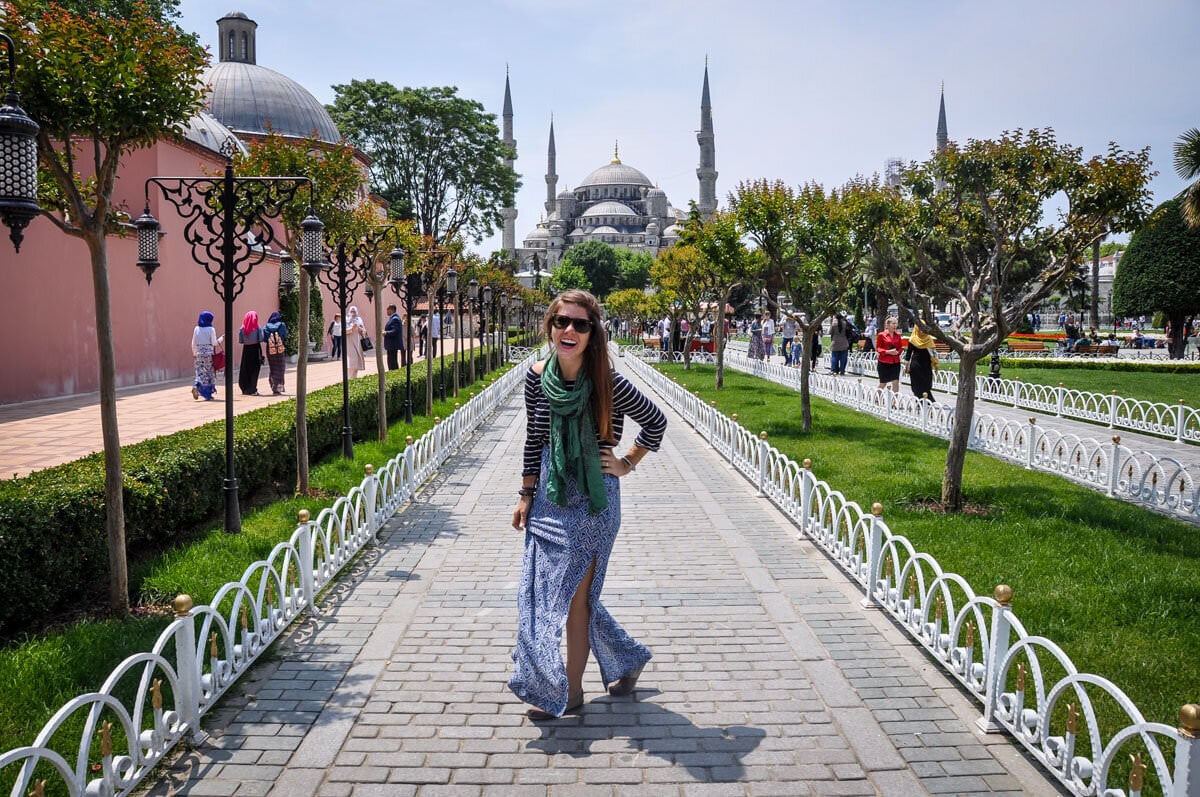
It’s starting to feel real now isn’t it?! Your trip is coming up fast and it’s time to get packing!
Packing for a trip can be quite the puzzle. You want to be prepared and make sure you don’t forget anything, but at the same time, don’t want to feel weighed down by too much stuff.
If you’re a self-proclaimed over-packer, or someone who always ends up using only half the things in their suitcase on every trip… I’m right there with ya! We recommend planning out your packing ahead of time so you are not rushing at the last minute to get everything you need stuffed into your oversized suitcase.
One tip is to lay everything you think you will need for a trip out on a flat surface (your bedspread works great for this) and then take away half — yes half! — of it. That is how much stuff you should realistically be trying to pack.
Another rule of thumb we like to try and stick to is packing in a carry-on for any trip shorter than one month .
This may seem incredibly daunting to some, but trust us when we say, you’ll be much happier trying to navigate the cobblestone streets of Europe or lifting your luggage onto a train if it’s smaller than a 50 pound bag!
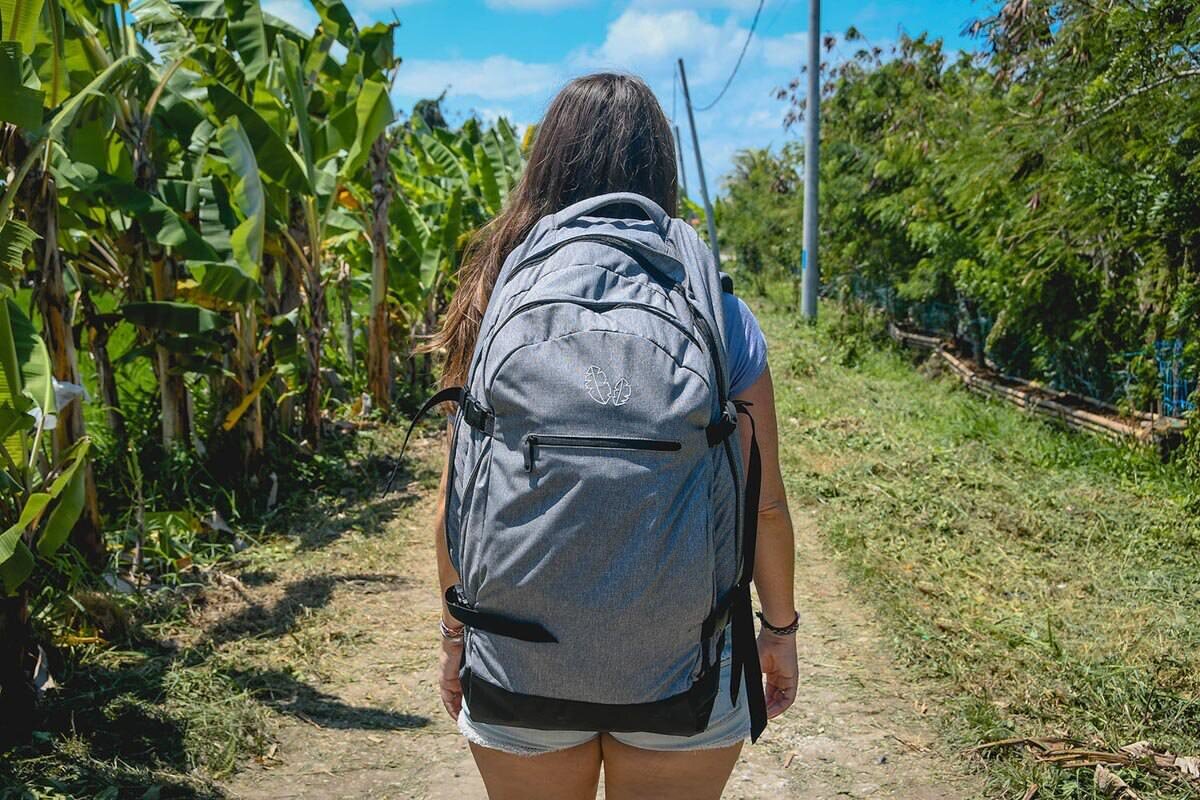
Below are some essentials you’ll want to make sure you pack for any trip:
- Passport/Identification
- Wallet/credit cards (and backups!)
- Chargers for all of your electronics
- Kindle or e-reader
- Travel pillow
- Insulated water bottle
Think about your electronics
This is a big one not to forget! If you are traveling abroad, you’ll want to look into the outlet situation you can expect in your destination and how it compares to that of your home country.
A quick Google search will show you what type of outlets you’ll find in the country you’re visiting. Here’s a great website for electrical outlets . Look at the voltage too, and check the compatibility with any electronics you’re planning to bring along. A great purchase is the travel converter with adapters .
Packing resources
Use these packing resources for tips and ideas to help you pack for your next trip:
- How to Pack for 3 months in a Backpack
- Ultimate Packing Guide for Long Term Travel
- Eco Friendly Travel Gear Packing List
Step 10. Last-minute prep

You’ve made it to the final step! Your trip is just around the corner and all that’s left is doing a little research and making some last-minute arrangements.
Data/Internet access
Research the best way to gain access to data or Internet while you’re in your destination. If you’re traveling within your home country, this shouldn’t be a problem.
However, if you are traveling abroad, you might want to consider purchasing a prepaid local SIM card when you arrive. This will be the cheapest way to gain access to data abroad.
Use our ultimate guide to getting an international SIM card , including helpful tips for using your phone abroad.
Download some helpful apps
- Google Translate: Type in something you want to say, and it’ll translate the phrase into any language you select. You can even take a picture of a menu written in an entirely different language (like Korean, for example), and it will translate what is written. It is amazing!
- Google Maps: Before going to a new location, we typically download the offline map for our destination in our Google Maps app. If you have your GPS turned on, the app will show your current location with a blue dot even when you don’t have data or WiFi turned on. This is super helpful if you’re on a long bus ride and want to know exactly where you are, or when you’re lost wandering around in a big city.
- GlobalConvert: This app makes it easy to convert anything from currency to distance to temperature. (Super handy for Americans unfamiliar with the metric system.) And the best part is, it works offline!
- Time Buddy: If you’re traveling on the other side of the world, this app makes it super easy to figure out time difference between where you are and your home country.
- Trail Wallet: Yeah, yeah, I know, we’ve talked about this one a lot. But it has seriously changed how we travel. This app converts seamlessly through currencies and shows you exactly where you are in regard to your budget. Download this app and you’ll be able to travel longer. Seriously.
Have a plan for currency

On long-term trips, we typically withdraw money from a local ATM as soon as we enter a new country. We NEVER use currency exchanges as these tend to take a big percentage (like 30%). Plus ATMs are much more efficient.
Our Charles Schwab card ( more info here ) reimburses all ATM fees, so we only take out small amounts at a time.
Tip: Just remember to decline the currency conversion rate offered by the ATM. When you do this you are referring to the conversion rate set by your bank instead. And in our experience, the banks always give a more fair conversion rate and than the pre-set ATM conversion rates.
Notify your bank of your travel plans
This is a step that can sometimes be overlooked, but can put a serious damper on your travel plans when you enter a new country only to find your bank has automatically shut off your debit card because it thinks you are attempting a fraudulent withdrawal.

Learn the language (at least a few phrases)
We’re not insinuating that you must be able to have a conversation in the local language before visiting a foreign country. But learning a few key words or phrases shows locals that you are trying, and people usually respect this.
You’d be surprised how far learning “hello” and “thank you” can get you. Some other helpful words to learn no matter where you are traveling are: “bathroom”, “delicious” and “beautiful”.
And don’t forget about numbers. Write down the numbers 1 through 10 in a small notebook and translate them. Knowing a few numbers makes it a lot easier to order at restaurants.
If you have any allergies or medical conditions, it’s a good idea to write it out and translate it to the language of your destination country. For instance, “I am a vegetarian,” or “I am diabetic”. Print it out in the local language (and the phonetic spelling) and carry it in your wallet. It will definitely come in handy.
Refine your manners
A little research can go a long way. Certain gestures you might use everyday, like a thumbs up or okay sign, are offensive in some cultures. Avoid awkward situations by researching some basic manners in the country you’re visiting.
Where to first?

You’re ready to take the leap! However, the first few hours in a new country can be a little overwhelming (and the most likely time to get scammed). That’s why you should have a plan of how to get from the airport to your hotel (or wherever you’re headed first).
We typically write down the address (in the local language and in English) of our first hostel/hotel in a small book or in the notes app on our phone so we can show taxi/bus drivers, that way we don’t fumble over mispronouncing street names.
It’s also helpful to save the locations of your accommodation, local embassy, hospital and attractions you want to visit in your maps (that you’ve downloaded offline of course!) before leaving.
Book transportation ahead of time or get specific instructions on how to find public transport. Read our travel tips , other blogs, or guide books on what is the best means of transportation in the specific country you’re visiting. If you have a plan and know what you’re doing, you’ll start off your vacation on the right foot.
Confirm reservations
It’s easiest to call or write to confirm reservations for things like accommodation and transportation before you find yourself in a foreign country with a canceled Airbnb reservation and nowhere to go. Confirm all your important reservations and keep copies of your confirmation receipts in your email.
And there you have it, 10 simple steps for how to plan a trip to anywhere in the world.
Following these steps will take some of the stress out of trip planning, but it is important to remember that even the best laid plans often go awry. This is particularly true with travel as there are just too many factors outside of your control.
And that’s okay. In fact, that is half the fun of it! It’s what makes travel such an incredible learning experience and why we keep going back for more.
Need help planning the perfect trip?
Be sure to check out our Travel Planning page for resources on everything you need to know about how to plan a trip, from packing to budgeting and more! Or you can read some of our favorite articles about planning your next trip below.
- How We Afford to Travel & You Can Too!
- How to Find Cheap Flights: 17 Expert Tips
- How We Pick the Best Travel Insurance
- Cheap Travel Hacks to Save You Money
Save this article on Pinterest for later!
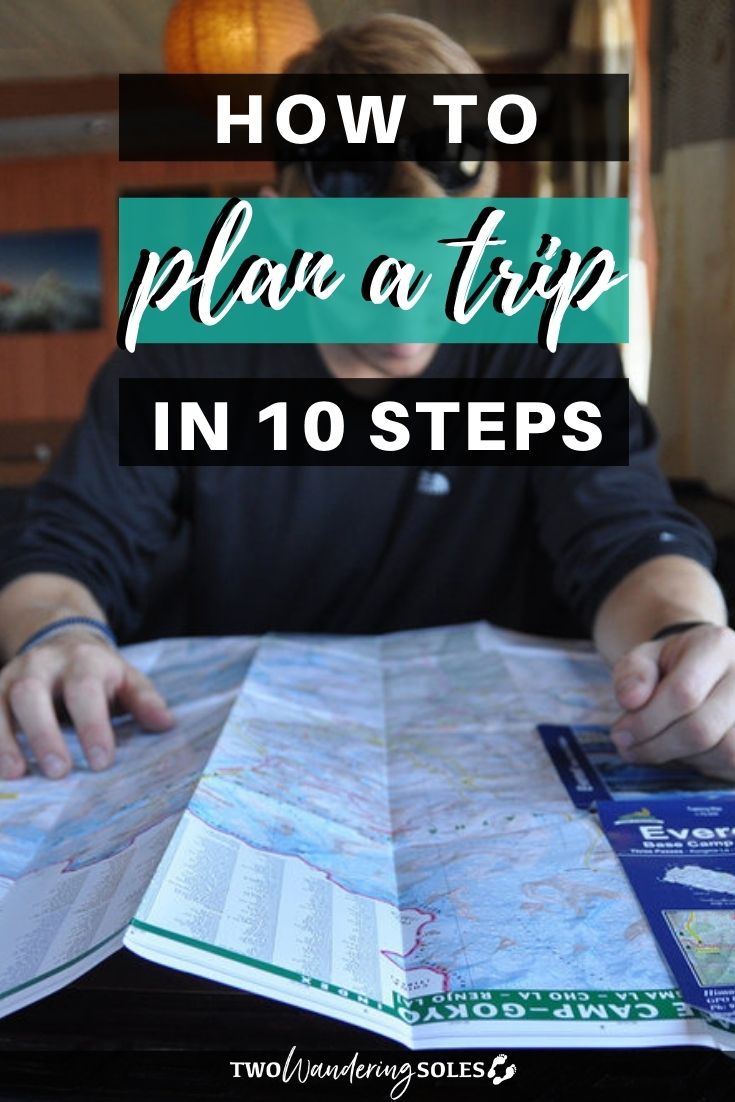
We want to hear from you!
If you still have more questions about how to plan a trip—both international or otherwise—leave your comment below and we’ll do our best to find you the answers you’re looking for!
Comments (15) on “ How to Plan a Trip: Your Step-by-Step Travel Planning Guide ”
What considerations should you make regarding the timing of your trip, as recommended in the article?
It’s great that you talked about how we’d plan a trip and choose the things we want to do. We’re excited about traveling for our next vacation, and we’d like to start booking hotels and tours, so we’ll follow your tips to help us out. Thanks for the insight on finding all kinds of adventures for our vacation trip.
Bautiful blog and very informative ! Thanks for sharing
Hey guys! Honey is here. Two days back I returned from my vacation and enjoyed myself a lot there. I didn’t face any booking issues regarding stay and tickets reservation. This time I have got 10,000 off on my bookings through the usage of BOB cards and I gained that offer info from Saveplus. You guys must fly! Go on.
Thanks for reminding me to check out my finances first before planning a trip. I have allotted a part of my monthly budget last year so I could travel overseas but it might not be too safe because of the pandemic. I think it would be better to visit something local and just book a Kentucky bourbon tour.
This is a wonderfully structured article! Loved reading it!
Thank you very much for your very pragmatic info. May I have some names of reliable bloggers for my research please? Nic
Your blog is very informative. You have written every thing in deep.
Thank you for great information !
I like that you shared your thoughts with us. I am living in my camper van and I like to read more thoughtful articles like this one. Thanks for the amazing and beautiful post….
Thanks so much for the kind words!
What a wonderful post on how to plan a trip! You have some good points and tips! I also wrote a post on how I planned for my East Coast Trip, check it out on my blog http://innapishtoy.com/2018/05/19/planning-packing-trip/
Thanks for sharing Inna.
Good one content katie. I am impressed. It is very useful for my winter holidays.
So happy to hear it was helpful!
Leave a Reply Cancel reply
Your email address will not be published. Required fields are marked *
Save my name, email, and website in this browser for the next time I comment.
- YouTube Channel
- Travel Resources

The Ultimate Pre Travel Checklist for Planning a Trip
by Drifter Planet | Apr 24, 2018 | Travel Planning

Traveling is fun but planning a trip can be a stressful experience depending on a few aspects.
If you have been following our adventures, I’m sure you must have noticed that San and I usually encourage spontaneous travel. But hey – don’t get us wrong. A basic level of pre-planning is required to avoid last minute mess-ups. At times we have managed to do everything within one hour, but hey – it all depends on the kind trip that we’re taking.
The level of planning that is required for any vacation doesn’t necessarily only depend on the duration of the trip but many other aspects. If you’re traveling internationally or solo or just visiting a new destination – there is usually a need for a more thorough planning to avoid last-minute surprises that are bound to spring up.
So are you planning on travel anytime soon and wondering if you’re forgetting something? Check out our list, most likely we have covered every aspect of trip planning to help you enjoy your vacation:
1) Choosing Where to Go
Like many people, San and I don’t just pick the first destination that comes to our mind. Instead, we decide where to go based on many factors. At this stage of planning, we usually keep one or two aspects of our trip flexible – it can be the dates, the destination or even the method of transportation.
At this stage of travel planning, we ask ourselves a few questions:
Is it easy to reach there? Do we need a visa for this destination (or destinations if it is multiple countries)? Will it be a high season at the time of our visit? Can we just drive there ourselves?
Most of the time we check multiple websites to find a list the destinations that fit our budget for a specific period of time. We really like the vacation planning grid on Tripcentral.ca that tells us the overall travel cost for multiple places for different months.
Another website that we always check is Skyscanner because it has a feature called “everywhere” that tells us the cheapest places where one can fly and even the cheapest months.
2) Booking Transport to Reach
Usually for us, this step of the planning process is not as long as the others because we often pick where to go depending on how feasible it is to reach there. By this stage, we usually know how we’re going to reach there.
While we were living in Asia, we often just booked air tickets for visiting a new country except if we were traveling domestically. However, after moving to Europe, we consider driving, train transport, taking a bus or even sharing a ride on Bla Bla cars if we’re traveling within the European Union.
3) Sorting Out Your Stay
Just like most of the points on this list, even for this point we normally have a general idea of what we’re going to do at this stage because it is a deciding factor. If we’re visiting a super expensive city (like Amsterdam ), then we normally first look for hostels. If it is a beach destination, then we look for beach huts, cabanas or cabins. For forests, we look for tree house s or safari lodges.

Sorting a place to stay is an important part of your travel planning – pre-travel checklist
If we were driving there on a rented campervan, then we would most likely only consider campground. Again, a little basic research on a website like TripAdvisor surely helps to find the most suitable options.
At this stage, it is very important to keep the location of the stay in mind so that it is easy for you to move around.

4) Initiating Visa Paperwork, if Needed
San has a German passport and I have an Indian one. Usually he doesn’t need a visa but I do. Over the years I have applied for so many visas that the process comes to me naturally.
Typically, the visa process involves submitting a filled application along with the itinerary. In most cases, you’d also need to submit a copy of your air tickets, hotel booking, travel insurance, bank statement, proof of residence and proof of leaving the country. If you already have a US visa or a Schengen visa, some countries will let you enter without a pre visa or just an electronic visa (E.g. Turkey , the Philippines , Croatia, Romania, etc).
5) Checking the Weather and Packing Appropriately

It was raining all the time when I visited Amsterdam the first time – pre travel checklist
Do not underestimate the importance of this step because you don’t want to be uncomfortably cold or when it is raining, or even snowing.
After spending a week in Sri Lanka’s rains, San and I decided to always check the weather forecast before packing. It doesn’t require a lot of effort to pack your rain poncho or gumboots but at times these things are super expensive to buy at touristy places.
It is always easier to pack for a beach holiday – you normally just need a few swimsuits, sarong, shorts, tank tops, a sundress or two and flip-flops. Packing for a cold destination needs careful packing so that you stay warm and comfortable all the time. It gets even trickier if you don’t have much baggage space and are going to multiple destinations out of which some are cold and the others are warm.
Packing for music festivals is a little different than most of the trips so be sure to check out our detailed guide.
6) Travel Insurance
I’m surprised to see how many people skip this point. Here’s the thing – booking travel insurance is usually not expensive. In fact, it can be as low as $20 based on the duration of your stay. However, paying for last minute disasters is usually not cheap and will make you regret not buying travel insurance.
7) PreBooking Special Activities
You may not need to prebook your activities or tours unless you’re doing something that’s once in a lifetime kind of special.
Back in 2010, when I visited the New York City, I wished I had prebooked Statue of Liberty’s Crown tickets so that I could go on top.

Skydiving in Thailand – One of the very few things that I prebooked
When I visited Thailand , I prebooked my Skydive because the slots were limited. I also prebooked my sleep aboard tour on Maya Bay so that I could be one of the very few ones to visit this amazing place before and after hours.
My point is – you don’t always need to prebook most of your activities or tours but in case you’re planning on doing something that’s been on your bucket list for long, you kind of have to make more effort from before.
8) Do You Need Foreign Exchange?
Believe it or not, most of the time I end up withdrawing money at ATMs when I reach a new country. Surprisingly the exchange rate is more favorable than what most Forex guys would charge.
However, there are exceptions – when I’m visiting Europe or America from Asia, I usually compare exchange rates from multiple Forex centers and exchange the currency one or two days before I fly.
9) Saving Your Travel Documents on your device
Go green and don’t print your travel documents unless they are absolutely necessary. Nowadays most of the places accept soft documents on hand held devices so I email them to myself and save PDFs on my phone. I often make a folder on Dropbox app on my iPhone and save an offline version of my travel documents.
10) Emptying Space on Your Phone or Camera Card for New Photos
Let’s face it – we all love to click photos. We’re not encouraging you to travel only through your camera lens, but we’re helping you prepare for being able to store your photos when you click them.
Being travel content creators, San and I usually carry three different cameras while we travel. Sometimes making space for new media takes time because not all transfers are quick. This is something we do on the last day before traveling and you’d want to do this too.
11) Charging All Gadgets the Night Before
Even though they are smart, sadly smartphones die faster than most of the gadgets. Nowadays most of the people don’t just rely on their chargers that can be plugged but also carry powerbanks and portable batteries. Powerbanks are extremely useful but they need to be charged for a longer duration so that they can actually work. We always charge all our gadgets before leaving and you’d want to do that too.
12) Recheck Your Flight Time Before You Sleep.. and Relax
San and I must have taken 100s of flights / trains and buses together but there was just one we missed. It happened because I got too confident about the time of our flight and I did not bother to double check. Lesson learned – always check the time of your flight before you go. After doing so, go set up an alarm and sleep for at least 8 hours before you go, unless you’re planning on sleeping while you’re on your way.
Remember the most important aspect of traveling – smile and stay in a good mood. Your smile will help you a lot in many situations but if your mood is bad, you will end up ruining your trip. So sit back, relax, smile and be happy that you’re lucky enough to travel.
Related Posts:
![30 Amsterdam Travel Tips that are Ridiculously Helpful [Tried and Tested] Amsterdam travel tips - things you need to know before traveling to Amsterdam](https://drifterplanet.com/wp-content/uploads/2017/07/Amsterdam-travel-tips-things-you-need-to-know-before-traveling-to-Amsterdam-150x150.jpg)
Great checklist! I always forget to charge my mobile and power bank. Thank you for sharing this awesome checklist
Submit a Comment Cancel reply
Your email address will not be published. Required fields are marked *
Hello Travelers!

Namaste, Guten Tag! I'm Sonal from India, living in Germany and exploring Europe. I've been writing about my travels since 2015. I often travel alone (and sometimes with family of 3).
I love European city breaks, nature, adventure, hiking to viewpoints, Yoga, and road trips. I have a think for creating the most amazing travel itineraries and in-depth destination guides which will help you make the most of your trip.
Not sure where to start? Start with some of my most popular posts .
Pre-Tour Checklist
One Month Before Tour
Start research, using websites, guidebooks, and recommendations from friends.
Book your tour reservations. Print the receipt - Confirm all details are correct.
You may want to learn a few Spanish phrases. An interesting fact about Miami is, 70% of the residents do not speak English at home.
One Week Before Tour
Learn how to change your camera settings from "No Flash" to "Forced Flash" mode. You'll want to use "No Flash" inside the bus and "Forced Flash" outside, especially at the Biltmore Hotel.
Consult the tour map , so you are aware of the highlights, as well as when to eat and use the restroom.
Make a shopping list of souvenirs or a list of people to purchase gifts for.
One Day Before Tour
Review the tour pick-up time and location. (The day before your tour, we will also attempt to call you around 5:00 PM to confirm.)
Get cash or traveler's checks.
Pack a carry-on bag with essentials. This includes cameras, snacks, drinks, umbrella, hand sanitizer, sunglasses, headphones, medication.
Charge the camera batteries.
If you are driving to a pick-up location, make sure you have directions and know where to park.
Check the weather forecast and make sure you have appropriate clothing.
Get a good night's sleep.
Day of Tour
Shower, eat breakfast, and use the restroom, before boarding the bus.
Arrive to the pick-up location 10-minutes early.
Make friends with your tour guide and other passengers.
Ask questions and get recommendations.
Take lots of pictures.
Don't leave anything on the bus after the tour.
Have fun and make it a great day.
- See the Tour Options
- Travel Tips
- Event Planning Help
Get your FREE travel planning session
Are you planning a trip to Miami? Contact us and we will discuss your travel goals, suggest ways to save money, and offer tips on how to avoid some of the common mistakes. (Others charge up to $100 for this.)
What people say about us

"An outstanding example of Florida hospitality."
Planning is easy with these FREE resources
- Group dining options
- Miami hotels cheat sheet
- Travel itinerary template
- Plus charter rates, travel tips, best attractions, and more
Clients and reviews


Ultimate Pre-Travel Checklist: Important Things To Do Before Travelling
Packed for Life contains affiliate links. If you make a purchase using one of these links, we may receive compensation at no extra cost to you. As an Amazon Associate, I earn from qualifying purchases. See my Disclosure policy for more info.
Planning a vacation? There is so much to think about before actually heading out on your adventures, but preparing for your trip doesn’t have to be stressful. Our Ultimate Pre-Travel Checklist will help make sure all the important things are done before travelling. So you and your family can relax and enjoy your vacation, knowing everything is well in hand.
The Pre-Vacation checklist covers everything from booking hotels, packing and bringing meds, to all those last minute details of making sure you’ve brought your toothbrush and phone charger, secured your home and the housesitter is confirmed and settled.
While it is organized into what to do 3 months, 1 month, 1 week and less before your trip, if you have less time, just adjust the time frames for the time you have left. It’s never too late to organize!
Our Ultimate Pre-Travel Checklist Free Printable has all things you definitely don’t want to miss, when planning your trip.
Ready to plan? Let’s get prepping.
Table of Contents
Pre-Travel Checklist: What To Do Before Leaving For Vacation
Research destination & pre-trip planning.
Every trip starts with a little (or in my case a lot) of research. It is good to get an idea of what you will be looking forward to or any challenges your family may face. Here are a few things to consider before booking your destination. Then you’ll be all set to go through your travel preparations checklist.
We also like to make a yearly travel vision board to help us focus on our dream vacation that year.
What type of weather are you looking for? Are you looking for a wintery ski destination, some fun in the sun, or mild fall foliage road trip tour?
It’s a good idea to research the average weather and temperature of your destination beforehand, because you definitely don’t want to fly somewhere expecting sunny, hot beach weather, only to find out once you’ve landed that it’s too cool or stormy to hang out on the beach, and you don’t even pack a sweater.
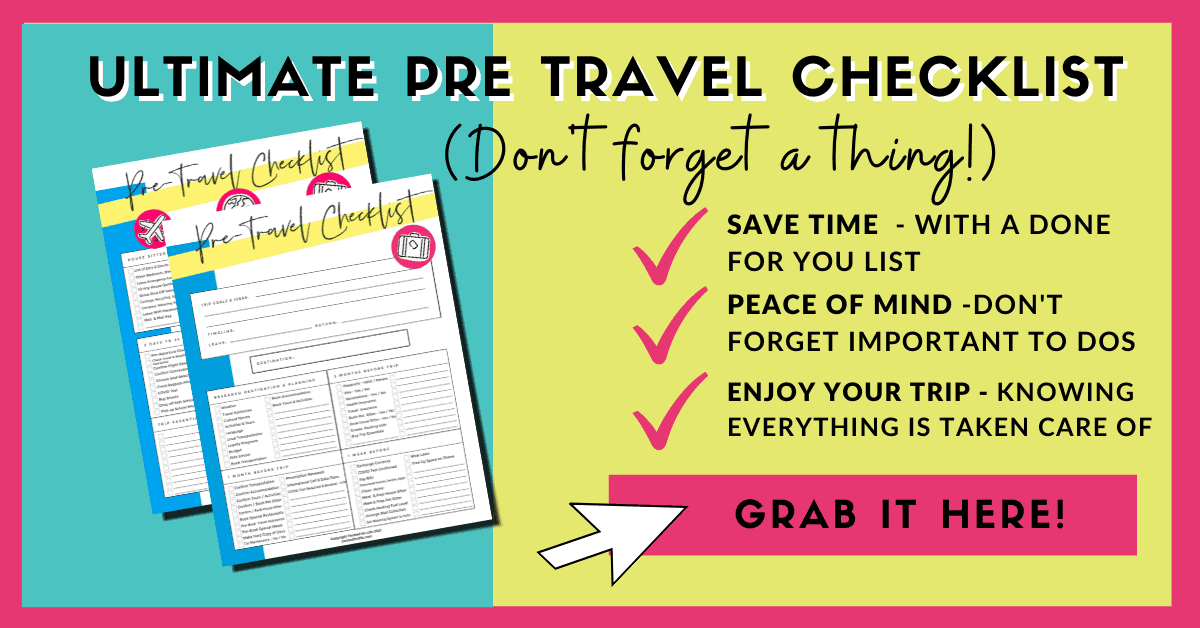
Travel advisories and warnings
Take a look at your government’s travel advisories for your desired destination. They’ll have the latest info on what you need to be aware of from security to healthy risks, recommended vaccines and more.
This is especially important in the time of COVID, as rules, and entry requirements change rapidly.
Rules, etiquettes and cultural norms
Get a sense of the rules, etiquettes and cultural norms of your travel destination. This will help prepare you not only to be a more respectful global citizen, it can also help guide what you need to pack.
Activities & Tours
Many popular tours and activities require advance bookings. Doing a little research ahead of time will avoid the disappointment of missing out on bucket list items, and can even save you money.
Get your kids and partner involved in the dreaming. Ask what they are interested in doing, and have them to help with the research. Watch some YouTube Videos on hotels, activities, things to do in the area you are traveling to.
Language
Learn what language the majority of locals speak. While in tourist destinations you will find most people tend to know at least a little English, people appreciate it when you at least try to say a few words in their language.
Take a class, or brush up on a few common words you can use. We like to take a few courses before we travel and brush up on a few helpful phrase like Hello, Thank You, Where is the Bathroom and How much does that cost?
Rosetta Stone offers popular and affordable language classes you can do from home (or on the road); Try it out here.
Local Transportation Options
Check out the local transportation options. Many places, especially in larger cities, have great public transit or taxi systems, which are easier to use than driving a car.
Or is it a place where you need or want to rent a car, because it’s safer, need to use a carseat, or you plan on doing road trips ? This is good to know ahead of time.
Compare rental car prices and options, auto insurance requirements, and see if there are any discounts available to you through your credit cards, CAA / AAA, professional organizations.
Currency
Different currencies are always a fun challenge. Research what currency you’ll need, the exchange rate, and how easily you’ll be able to access your money abroad.
For most places this is not a problem. However, our trip to Cuba was the exception.
You can’t exchange Cuban currency beforehand, and all research pointed to bringing all the cash you needed. Accessing money while down there through ATMs or the bank can be difficult, so it would have been a stressful situation once we arrived, if we didn’t know all this beforehand.
Loyalty Programs
Sign up for loyalty programs for hotels you like to stay at, airlines you like to fly with and travel points credit cards. Often there are sign-up bonuses, that may even land you a free flight or an extra night or two at no extra cost.
Budget
Working out a budget beforehand can give you an idea of where and how long you can travel for. Planning ahead with a budget can ultimately lead to less stress down the road.
Then you won’t have to pay off a high interest credit card bill, for an expensive vacation you couldn’t afford.
Make sure to include not only the big ticket items like flights, resorts, and hotels, but also factor in meals, snacks, water, tips, souvenirs and activities.
We like to budget out 3 or 4 more expensive items per trip separately, such as special tours, a concert, or fancy meals. Then have a daily per diem to cover food, and miscellaneous daily expenses like bus tickets, tips, water and the like.
Check out how to build a vacation fund for simple ways you can save money for your next family vacation.
Kids School
Check with your child’s school and teacher, to see what the rules are around taking a family vacation . A couple of things to consider. Is it an excused absence? Will your child need to catch up on any missed homework or assignments?
Read Is a family vacation an excused absence from school for all the considerations in pulling your kids out of school.

Book Your Vacation
Now that you have settled on a fun holiday destination, now it is the time to book your trip.
- Make reservations for your accommodations – hotel, airBnB, VRBO, castle, cruise, resort or wherever you are staying.
- Book your transportation – flights, taxis, airport shuttles, buses, trains, transfers between cities and/or hotels
- Book activities & tours – some activities and tours book up quickly (like certain rides at Disney), so if there are certain ones you know you don’t want to miss out on, book ahead.
For all reservations make sure you read and clearly understand their cancellation policies BEFORE booking.
Grab your copy of our complete pre-travel checklist template , ready for you to use on your next vacation.
Booking Your Trip
Save up to 90% off flights – Flight deals from well regarded airlines straight to your inbox. Save up to 90% on your flights with Going (formerly Scott’s Cheap Flights). Finding a cheap flight: Check out Skyscanner or Momondo or Google Flights Explore . Search engines that scour the web and airlines for best flight deals. Booking accommodations: Booking.com is a great option for finding cheap accommodations around the world. We also use VRBO to find more unique, home away from home type places to stay. For example: Book your perfect beach house! Travel Insurance: Travel Insurance is important for everything from illness and injury, to trip cancellations or delays and theft. It’s peace of mind and protection should anything go wrong. Safety Wing is a favourite amongst travellers for the under 60 crowd. As always, read the fine print on any insurance policy you buy.

Pre-Trip Checklist: What to do 3 months before Travel
While you may not always have your vacations planned out 3 or more months in advance, it’s a good idea to give yourself as much time as possible to prepare, especially if you are travelling internationally.
Just move these items to the top of your to do list, no matter how much time you have left to travel.
Check Travel Advisories & COVID Testing Requirements
As noted above, it is imperative you check for health advisories, travel warnings and entry requirements. While this is true anytime, with COVID it is especially important to keep up to date on the changing situation around the world.
You will want to check back regularly leading up to your departure date, to make sure your trip is still possible, and if entry or exit requirements have changed.
Keep an eye on COVID testing requirements for not only leaving your country, but what is also required on your return.
Research government approved testing sites at your destination as well. Being prepared will give you peace of mind and help ensure you aren’t stuck on holiday longer than anticipated. For more info:
- Canada Travel Advisories
- USA Travel advisories
- UK Travel Advisories
- Australia Travel Advisories
Pre-Travel Checklist – International Travel
If you are travelling internationally, or use your passport as ID, check to make sure all travellers passports are not expired, and will be valid for at least 6 months past your return date, with at least one blank page.
Double check with your destination’s embassy website, to make sure they don’t have any other passport or entry requirements.
The embassy’s website for your destination will have a lot of helpful information. Look to see their entry and visa requirements.
Make sure you have an idea of how long the process for getting a Visa will take, and if there are any special requirements.
In some cases, you may need to send your passport to the foreign consulate for processing of the visa, so make sure you will not need it during that time. You’ll also want to make sure you have enough time to get all your documentation in order before your trip.
If you are planning on a longer visit, determine requirements at least 6 months in advance, as some types of visas require extra steps (like visiting the consulate in person), and may take longer than expected.
Check back in frequently to make sure visa requirements haven’t changed.
Vaccinations
Are you up to date on your vaccinations?
Visit your government’s travel advisory website (linked above), as they will have all the latest recommendations for safety, travel advice, including vaccine requirements for your destination. The World Health Organization (WHO) website also outlines recommended vaccines based on destination.
Follow up with your local travel clinic, to discuss what vaccines, and precautionary measures may be best for your family. Some vaccines require multiple doses over time, so book well in advance.
Health and Travel Insurance
Extended medical insurance is a necessity when travelling outside the country. Make sure to add this to your list of things to do before travel.
Many employers and credit cards have insurance plans that cover emergency travel and health expenses while abroad. Call for all the fine details. Research and choose an insurance plan that will fit your family size, holiday activities and destination.
Double check the fine print around trip cancellation policies, and coverage for COVID related expenses. Many insurance plans are decreasing and changing coverage due to the pandemic. You don’t want to be caught in an unfortunate situation.

Keep your valuables safer when travelling, with anti-theft gear .
Pre-Travel Checklist – Things To Prepare Before Travelling (Anywhere )
Pet and house sitters.
Arrange a house sitter and either a pet sitter or book a kennel or boarding situation for your beloved pets, that won’t be travelling with you.
Sometimes these services are in high demand, especially around popular vacation times like Christmas or Spring Break, so book well in advance.
It will give you peace of mind, knowing your home is safe and your furry family is well taken care of, in your preferred boarding situation.
Create your Packing Lists
Make your packing lists and check them twice. Don’t forget all the essentials!
While it may seem a bit overkill to create a packing list so far in advance, if you have to buy off season clothes or gear for your trip, it can make prepping, and saving money for and on purchases much easier.
Feel free to move this to one month before your trip if you have most or all the gear you need.
Before creating your family’s packing list, there are a few things to consider:
- Check on luggage allowances – Does your airline, cruise, train have limits to the weight, and number of luggage pieces you can bring? Are there any extra costs, and are you ok paying them?
- Decide how much you want to pack. Are you a carry-on only family? Do you want one suitcase for the kids, one for the adults, or each their own?
- Decide on your style of bag: Do you prefer a duffel bag, backpack, suitcase, or maybe a combo. This will also dictate how much you can pack.
- Consider your type of trip: Take into consideration the length of stay, weather and planned activities for your family trip.
- Decide about laundry: Are you planning on washing your clothes while away, or bringing everything you need? Will you have access to a washer / dryer or laundry service?
- Figure out what you can / can’t bring on a plane like waterbottles , sports racquets , magnets and the like.
Most Common Items People Forget To Pack For Vacation
Here is a list of some common items people forget to pack , so make sure they are on your list. These also all happen to be items I have missed a time or two myself.
- Toothbrush and toothpaste
- Phone, kindle, ipad, chargers
- First Aid kit or supplies
- Prescriptions and medications
- Travel adapter
- Copies of travel documents
- Warm layer (sweater, light jacket) for sunny destinations
- Laundry Bag – I like to keep dirty clothes in a separate mesh bag.
If you forget a few things, don’t panic, most destinations have plenty of options to buy any items you may have forgotten. Cuba however was one destination where you needed to pack everything you needed, as there weren’t a lot of options once you get there.
Buy Essentials Before Your Trip
Planning ahead can save you time, money and headaches.
Here in Canada, finding warm summer clothes, even online, is difficult in the winter months.
Our trip to the Carribean was case in point. Not a lot of options to buy once we arrived, and not many options before we left. If I hadn’t bought a couple of end of summer sale items, we would have been out of luck.
Purchasing a few essentials beforehand can help get your trip off on the right foot. It can help save you money, as you have time to keep an eye out for deals and don’t have to pay exorbitant resort prices to purchase these items.
It can also help save time, if you need to special order anything online.
Some items you may need / want to buy ahead:
For the Kids
- Travel Entertainment: Activities, games, crafts, small toys, books
- Kids tablet / iPad – load up with fav movies, TV shows, books, podcasts
- Weather appropriate clothing & gear (snorkels, rashguards, sun hats, skiis, snowsuits etc.)
- Extra diapers, wipes, bottles,
- Travel car seat and travel stroller
- Travel Booster Seat – We love our compact MiFold Grab and Go Car Booster Seat for travel with older kids (must be at least 4yrs+, 40″ tall and 40lbs)
- Infant travel bed
- Travel potty & toilet seat (2-in-1 awesomeness)
Toiletry items
- Carry-On sized toiletries
- Solid shampoo & conditioner bars
- Sunscreen
- Hand sanitizer
First Aid Kit or items
- Pain relievers ( examples: Paracetamol, Tylenol, Ibuprofen). If travelling with kids, pack some for them too.
- Bandaids, blister pads, gauze, surgical tape, & antiseptic wipes
- Tweezers & small scissors (don’t bring in carry-on!)
- Antihistamine & anti-bacterial creams
- Loperamide tablets – emergency anti-diarrhea medication
- Rehydration Tablets or packets – Pedialyte, Nuum
- Motion sickness meds
For the Adults
- Weather appropriate clothing & gear
- Magazines, books, e-reader subscriptions (and download beforehand)
You may also like 50+ fun gifts for travel lovers of all ages
Pre-Trip Checklist: What To Do 1 Month Before Travel
Get a copy of our free pre-vacation checklist , to make sure you have all the things you’ll need to do in one handy document.
Confirm All Reservations And Bookings
With so many things to prepare before travelling, you don’t want to forget to confirm your bookings.
Now is the time to confirm / reconfirm all reservations, and bookings you made. Look to see if any times or schedules have changed.
We tend to do this 1 month up to 2 weeks before we leave, depending on the travel destination, and the requirements of the various companies.
- Flight Times
- How you will get to the airport & Pick up time ( friend, taxi, shuttle etc.)
- Transportation to lodging
- Accomodations
- Car Rentals
- Bus / Train Reservations
- Activities, Tours, & Dining
- Pet and House sitters
If you haven’t made any activity, tour or dining reservations yet, do so now. Check discount sites like Groupon, Travelzoo, or local travel sites for deals.
Also confirm any special assistance or requirements, you and your family members may need. Often they require more than 24 hours notice. Double check the amount of notice that is required with your airline, resort or hotel.
Pre-Book in advance:
- Special meals – for kids, vegetarians, vegans or any special dietary needs
- Assistance at airports – such as porters or transport between terminals
- Special Bedding / Room requirements – extra cot, playpen, adjoining rooms, non smoking or smoking rooms, rooms away from the pool etc.
Make A Hard Copy Of Reservations and Bookings
While most reservations are online, and on our phones these days, it’s a good idea to make a hard copy of all bookings, reservations, itineraries. Add emergency numbers, contacts and nearest hospital / clinic.
You never know when you may lose access to the internet / your phone, and need your passport or other info.
Keep a copy handy and in a safe place while you travel, and leave a copy with a trusted friend or family member at home. Taking photos of all important documents is a good backup strategy as well.
Also program “In case of emergency” numbers into your phone , both for your home, and destination.
I like to have the number for police and ambulance, as well as the nearest hospital or clinic mapped out, so in the unlikely event of an emergency I don’t have to scramble for the info.
Car Maintenance
If you are taking a road trip, now is the time to have a little maintenance done on your vehicle. Make an appointment for the car to get checked over; oil change, tire pressure, fluids, windshield wipers.
It is also a good idea to find some ways to save money on your road trip . You don’t want to spend more than you have to.
Medications and Prescriptions
A key item for your pre travel checklist is your medications and prescriptions. Make sure you have enough of your usual medications and prescriptions to last the entire trip plus a week or two extra if possible.
Pharmacies at your destination may have different meds than you are used to, and language may be a barrier.
Here are a few tips to be prepared:
- Talk to your doctor prior to your trip, and let them know you will be travelling, and for how long
- Ask your doctor to write a prescription for all your medications, preferably renewable for up to a year (or however long you will be gone). Most prescriptions can only be maximum a year.
- Make sure they write the American and generic name, doses, amounts etc.
- Bring a hard copy of your prescription with you.
- Pack your medications in the original containers and place in a one-quart, plastic bag near the top of your carry-on baggage.
- Divide the rest into different pieces of luggage, so if one piece of luggage is lost, you won’t have lost all your meds.
Cell Phones & Data Plans
Planning on texting or skyping friends and family back home, browsing the interwebs or streaming a few movies or videos for your kids? Most cell providers these days have fairly competitive international roaming packages for out of country usage.
You definitely want to call your provider and set it up before you leave, so you don’t get an outrageous, surprise international roaming bill on your return home. That’s not the type of souvenir we are looking for!
With so many electronic devices and cords these days, it can be difficult to keep track of it all. Hands up if you’ve ever left a charger at a hotel or a Kindle in the pocket in front of you on the airplane, never to be seen again? No, just me…..ok maybe not.
It’s wise to invest in a small storage pouch, or electronic organizer case like this awesome, affordable Bagsmart electronic organizer . It’s a life saver (or at least an electronics saver).
Pre Travel Checklist – What to Do One Week Before Travel
Exchange currency.
Exchange some currency. It is a good idea to have at least a week’s worth of local currency on hand when you arrive at your amazing destination. Be sure you have some small bills for tipping your taxi or porter at your hotel as well.
Often you’ll get a better exchange rate at your home bank, than at your destination airport anyway. Plus you won’t have to wait in line, exhausted after your days travel, with a bunch of cranky kids, spouse, friends in tow.
Check Pre-Travel COVID Test Requirements & Where To Get One Done
Alot of destinations these days require proof of a negative COVID test within 72 hours of boarding.
In the US, visit your . Updated Covid travel rules to look for the latest information on where to get tested. If you are in Canada, visit the government’s website for more info.
Before you leave, make sure all bills are paid up, or that automatic payments are set up, with enough money in the account to cover any expenses while you are away.
Electronics Prep – Download Music, Games, Movies, Books, Travel Apps & Offload Photos
To make those long flights and travel days smoother, especially with kids, download the music, games, movies, podcasts, books you want to keep everyone entertained.
Download and familiarize yourself with any new Travel Apps you want to try out.
If you use your cell phone as your camera, make sure you have enough storage, or delete / save old photos off your phone to make room.
Prepare Your Home
Of all the things to prepare before travelling, home prep is one of the most important, and often overlooked tasks.
Now that all the travel details are under control, you’ll want to start prepping your home. I love returning home to a clean home, with freshly washed sheets and nicely made beds, Don’t you?
Many of these items can be done one week before, right up to the day of travel:
- Clean your house; mop floors, clean bathrooms, wipe down counters, vacuum
- Run the dishwasher & empty the dishes
- Wash and dry clothes, then pack or put away.
- Clean your sheets, and make the beds with freshly laundered linens
- Empty the garbage and compost bins
- Empty out your fridge of perishable items
- Water plants
- Set your thermostat
- Check the heating fuel level (Don’t want to run out in winter!) Arrange for a delivery while you are away if needed
Prepare your House Sitter
I like to have my house sitter and pet sitter over at least the week before we leave on vacation, to go over any routines, expectations and to give them a house tour.
If you have a house sitter looking after your home:
- Write out and leave your list of do’s & don’ts
- Let them know which room they will be staying in
- Leave emergency contacts & how to get a hold of you
- Identify any quirky house items they need to look out for
- Make sure they know where any emergency shut off valves are (for the furnace, water, propane tank etc.)
- Leave the schedule for garbage, compost, recycling, and watering days
- Prepare your home for them; clean up, put fresh sheets on their bed, buy some grocery staples, leave the WIFI password
Prepare Your Pet Sitter
If you have a pet sitter:
- Leave a detailed note about your pets routine, including feeding amounts and times and walking schedule
- Note the contact details for the vet, and dog walking or doggy day care services if you use those
- Provide enough pet food and supplies for the whole time you will be away.
- Put pet supplies out where they can be easily found; food, leashes, toys, treats
Security Measures: How To Keep Your Home Safe While On Holiday
Before leaving on vacation, you’ll want to take some extra security precautions to make sure your house is safe and looks lived in while on holiday. The best way to do this is to hire a housesitter (or friend) to stay in your home while you are on vacation.
If that is not possible, here are a few things you can do to make sure your house is more secure:
- Arrange for a trusted neighbour or friend to collect your mail, water the plants & check up on the house. Ask them to vary the hours they visit, so it’s not predictable.
- Put your mail, and newspaper subscription on hold
- Set your lights to a timer
- Set sprinklers, and watering systems to automatic
- Mow your lawn before you leave, so it looks well kept
- Lock all your doors and windows
- If you have a security company, let them know you will be gone.
Things To Do Before Travel: 3 Days to 24 Hours Before
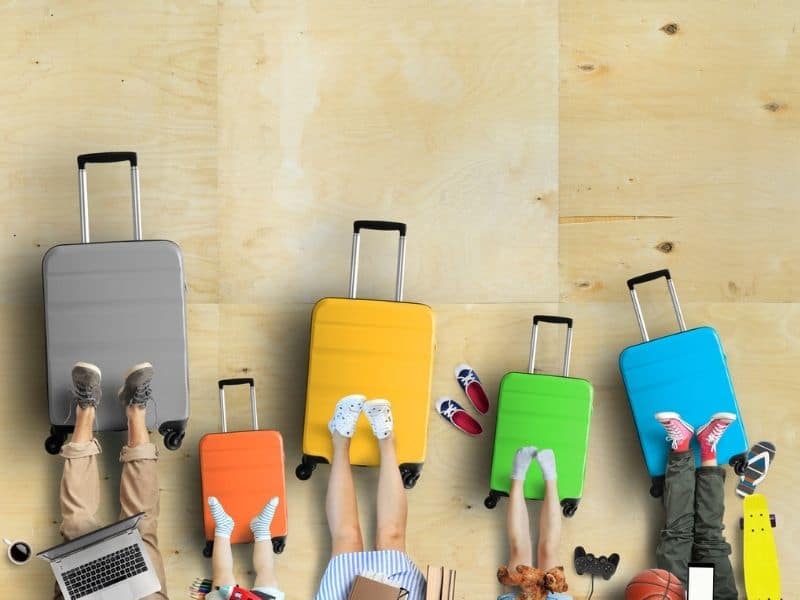
Pre-departure Check-in For Flights
Once you’ve received the email from your airline, complete your pre-departure check-in.
- Complete your pre-departure check-in
- Choose seat selection
- Double check baggage allowances
- Make sure mileage account number has been added to each person’s ticket if appropriate.
- Print boarding passes
Read and confirm the details of the flights, and that your connections are correct.
You don’t want to end up like the poor woman who thought she was going to Australia and somehow ended up in Newfoundland, Canada. Not that Newfoundland isn’t an awesome place to visit (It is!), just a slightly different experience than the expected Australia.
Choose your seat selection if you haven’t already. We highly recommend if you have young kids, doing this when you book your flight. Most airlines will allow free seat selection for at least one parent to sit with their child.
Check your baggage allowance , and pay for any extras up front. It is often cheaper this way, and means less to worry about at the airport.
COVID Tests
Alot of destinations these days require proof of a negative COVID test within 72 hours of boarding. Make sure to get one done from an approved testing place.
Take a trip to the grocery store and buy some filling snacks for your travel day. Ask your kids what they would like too. Less whining = happier parents.
If you have a special diet, or special dietary needs, it’s also a good idea to bring extra so you know you have some safe food to eat on your trip.
Some crafty ways to pack snacks:
- Pencil Case
- Fishing Tackle Box
- Reusable Snack Bags: We love the silicone ones and these cute fabric patterned ones
Now comes the fun part of actually packing. I always feel like this makes the trip more real. It’s a good idea to review your packing list and cull any unnecessary items (especially if it all doesn’t fit in your suitcase).
- Pack your main luggage and carry on items
- Don’t forget to pack your face masks, hand sanitizer and proof of negative COVID test
- Check off the items as you put them in
- Use packing cubes . They are a space saver and a life saver. Tip – Have each traveller use a different colour packing cube, to keep clothes organized, and easier to tell apart. Get the ones we use here
- Make a list of those last minute items that need to be added right before you leave
Ready to Go! Last Minute Things to Do before Travelling
Make sure all those last minute things are done before you head out.
- For a road trip; fill up car with gas, check tire pressure, clean out car, load it up and put out a garbage bag for the trip
- Check the weather
- Lay out travel clothes for the next day
- Charge electronics & pack chargers in an accessible bag
- Make sure thermostat is set
- Double check doors and windows are locked
- Empty garbage cans and compost bins
- Check the house for any forgotten items, and pack last minute items
- Use the restroom
Conclusion: Pre Travel Checklist – Things To Do Before Travel
While there are a lot of things to prepare before travelling, having a Pre Travel Checklist will keep you organized and hopefully stress free before your vacation.
Have we missed anything on our Pre-Trip Checklist, or do you have any helpful tips to share? Let us know in the comments below, or connect with us on social media. We’d love to hear from you!
Related Articles: Looking for some travel inspiration?
- Find out which Hawaiian Island is best for families
- Best Travel Backpacks for Kids and Toddlers
- A Day in Havana, Cuba (What not to miss)
- One Day in Bryce Canyon, UT – Detailed Guide
- 20 Fun (and family friendly) things to do in Stowe, VT
Packed for Life is a participant in the Amazon Services LLC Associates Program, an affiliate advertising program designed to provide a means for sites to earn advertising fees by advertising and linking to amazon.com, amazon.ca.
Donna Garrison is the founder of Packed for Life, an ever curious traveler with a passion for making memories with her family. With a unique perspective on travelling on a budget gathered over 30 years, 20 countries and 5 continents she gives families the tools & resources they need to experience the joys of travelling more for less through practical solutions. She helps over 20,000 families a month plan & take the family travel, camping and road trip adventures of their dreams in Canada, the USA and around the world. Contact her at: Donna [at] packedforlife.com
Similar Posts
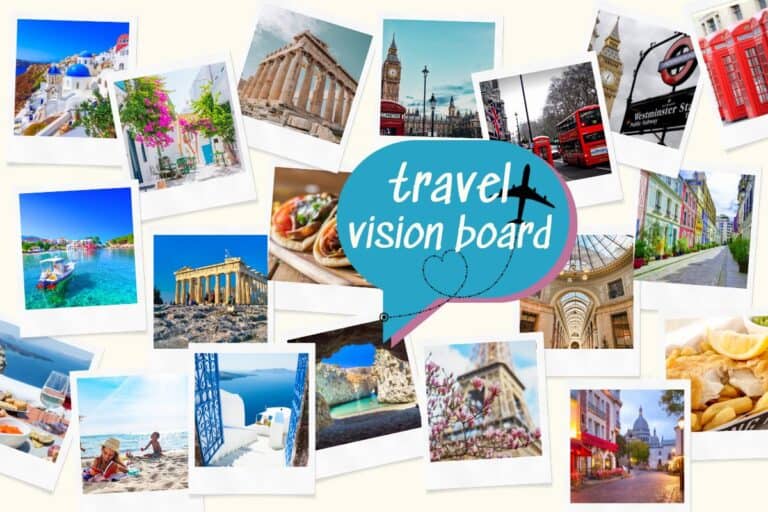
Travel Vision Board Ideas To Inspire Your Dreams
With a new year comes new dreams, and I’m sure…

Free Family Travel Planner Printable
Welcome to the Free Family Travel Planner Printable! It’s that…

No More “Are We There Yet?”: Road Trip Activity Pack Kids Will Love
Ready for a summer full of adventures with your kids?…

Cute Unicorn Activity Book for Kids
Looking for a fun screen-free activity for kids? Enter the…

Free Printable Letter to Santa Template
Oh it’s the merriest time of year again, when kids…
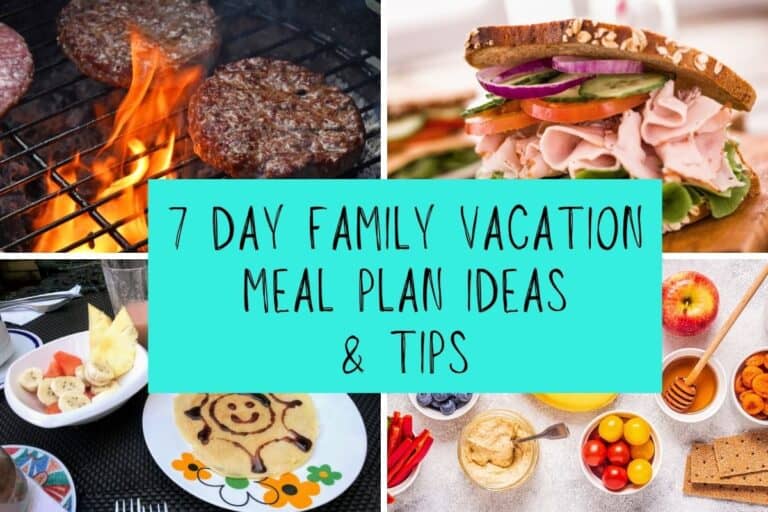
Vacation Meal Plan for Families: 7 Day Plan & Expert Tips
When heading out on a family trip, creating a vacation…
As someone who just moved abroad, this is very well written and very useful for those of us who love to explore!! Hoping we can travel the world again soon!
Very helpful! Thanks for sharing!
Comments are closed.
Privacy Overview
Sharing is caring.
Help spread the word. You're awesome for doing it!
Game-Changing Organization and Planning Books
How to reach your goals when you have no motivation (top motivation tips), 66 romantic rainy day date ideas.
- The Ultimate 2024 Book List
- After Moving Checklist: What to Do After You You Move In
- Cyber Monday Tips, Secrets, and Game Plan
- How to Prepare for Your First Day at a New Job
- How to Develop a Successful Job Search Routine
- X (Twitter)

A Complete Pre Travel Checklist

Planning and preparing for an upcoming trip can be a stressful process.
But, it doesn’t have to be!
Take the stress and anxiety out of traveling by creating a comprehensive pre-travel checklist.
This will ensure nothing is forgotten, allowing you to enjoy your trip worry-free.
Let’s take a look at the most common pre-travel to-do items to create your perfect, customized pre-trip task list today.
This post may contain affiliate links where, at no additional cost to you, I may receive a commission if you use them. I only recommend products I use, trust, and adore. Please read my disclosure policy for more information.
Get Organized Fast!
Turn this pre-travel checklist into a project to easily focus your efforts and manage your time using this easy-to-use free project planning checklist and planner.

Pre-Travel Checklist
Before you skim the tasks below, be sure to pull out a sheet of paper, notebook, blank document (or whatever you prefer) to take notes. Only write down tasks that apply to you and your situation.
This way, by the time you’re done reading this list, you’ll have your very own, customized pre-travel checklist ready to go!
Tip: You can edit the free project planner pdf (download above) and save it to your computer. This way, the list is completely customized to fit your needs and can be quickly printed before every trip! 🙂
6+ Months Before Departure (complete as soon as possible)
- Determine travel dates
- Confirm travel dates with any other party traveling with you
- Request time off from work (consider taking an extra day as a buffer and recovery day)
- Check passport expiration date (and apply for a renewal if necessary)
- Check for any required immunizations (and get them done if necessary)
- Fill out and submit a travel visa (required for some international travel)

1-6 Months Before Departure
- Create your pre-travel checklist
- Set a budget for the trip (and make sure it fits within your annual and monthly budget )
- Save up for your trip (you can use this super cute travel savings box )
- Outline an itinerary
- Look up travel deals, milage points, and coupons before booking anything ( Rakuten usually has some great ones!)
- Plane tickets
- Other transportation tickets (trains, ferries, etc.)
- Ground transportation (car rentals, light rail, or anything else to/from the airport)
- Parking at the airport
- Parking at other locations
- Hotel rooms, vacation rentals, or campsites
- Activity tickets
- Tour reservations
- Consider purchasing travel insurance
- Organize transportation and/or parking between your home and the airport
- Find a home or pet sitter
- Make plans for your pets
- Sign up for the Smart Traveler Enrollment Program (through the US Dept. of State) to allow them to reach you in an emergency

Two Weeks Before Departure
- Check your luggage to ensure it is in working order (order new luggage if necessary)
- Create a packing list
- Inventory travel items
- Purchase any necessary travel items
- Check TSA regulations at departure and arrival locations (modify packing list if needed)
- Add a luggage tag identifier and contact information for any checked baggage
- Begin wearing new travel shoes or hiking boots to prevent blisters on your trip
- Place a stop order on your mail and newspaper service (for the US, you can do that here )
- Inform your security company of your trip
- Create a list of people to get souvenirs for
- Check in with your supervisor and coworkers, remind them of your vacation and create a plan if needed
One Week Before Departure
- Purchase travel snacks
- Contact your bank and inform them about your trip (so they don’t cancel your card while you’re away!)
- Take out cash to have on hand (including small bills and foreign currency)
- Finalize trip itinerary (including meals)
- Inform a trusted friend or family member of your trip and give them a key to your home in case of an emergency
- Create a Post-Travel Checklist to ensure a smooth return home
- Make at least one freezer dinner meal to have when you get back (this is a life-saver!) – Learn how I meal plan and prep in this post
- Get ahead in your home-related chores (laundry, cleaning, etc.)
- Check your yard, put away any tools and lock exterior sheds and storage
- Check in with home or pet sitter
- Organize a gift or payment for your house or pet sitter
- Make sure all bills are set to auto-pay (or pay them in advance)
- Download any useful travel apps (including the app for your airline)
- Set up international calling with your phone provider
- Get ahead in your work-load
- Delegate any work tasks you can
- Reschedule any meetings and appointments
Related: Get Back on Track After Travel FAST with this Ultimate Post-Travel To-Do List

2-3 Days Before Departure
- Check the weather at your destination
- Pack your bags
- Create a list of anything you can’t pack yet and leave it in your bag (like your phone, keys, etc.)
- Weigh your bags and check that they meet regulation
- Make a copy of your passport and debit cards to have as a backup
- Take a photo of the inside of your bag (in case it gets lost)
- Confirm all reservations
- Download entertainment for the plane, train, etc. (eBooks, movies, music, podcasts, etc.) – here are my top book lists if you are looking for a great new read!
- Charge all electronics
- Fill up your vehicle’s gas tank
- Clean out your fridge
- Clean the house
- Run and fold all the laundry
- Grocery shop for non-perishable items for when you return home
- Set out any instructions, pet food, etc. for home or pet sitter
- Complete or prepare for any tasks you can on your post-travel task list
- Create a “Getting Back to the Office” list
- Complete a weekly review and plan the week for after vacation (both work and personal life)
Related: My Favorite Book Lists To Keep You Entertained for Hours on End!
One day before departure.
- Check into your flight
- Print out a copy of your boarding pass (Tip: have 2 copies, always keep a backup!)
- Save a copy of your boarding pass to your phone
- Check your travel itinerary and set any alarms to help you remember when to wake up, leave your home, arrive at the gate, etc.
- Check in with your house sitter or pet sitter one last time
- Water your plants
- Set up a self-watering system for your plants
- Feed and water your pets
- Complete any extra pet-related tasks (clean the litter, give extra food, bring to pet sitter, etc.)
- Declutter the house
- Set timers for your interior lights ( these timers are cheap and work great)
- Close your blinds
- Set up an automated email response that says you’re out of the office, and what date you’ll return
- Shut down your workspace (shut down the computer, put away items, take out the trash, etc.)
On Travel Day
- Finish packing
- Double-check that you have packed your essentials (phone, keys, wallet, passport, prescriptions, boarding pass, other tickets, etc.)
- Weigh your bag one last time
- Take out all the trash
- Unplug all electronics and appliances
- Check the thermostat
- Lock all doors and windows
- Set your security alarm
- Double-check that you closed the garage (Home Alone vibes, anyone?)
Pin this post for later reference!

Work Pre-Travel Checklist
For convenience, here are the tasks in the above lists that are directly related to work:
- Request time off from work (as early as possible)
- Check in with your supervisor and coworkers, remind them of your vacation and create a plan if needed (1-2 weeks before)
- Get ahead in your work-load (1-2 weeks before)
- Delegate any work tasks you can (1 week before)
- Reschedule any meetings and appointments (1 week before)
- Create a “Getting Back to the Office” list (2-3 days before)
- Complete a weekly review and plan the week for after vacation (2-3 days before)
- Set up an automated email response that says you’re out of the office, and what date you’ll return (1 day before)
- Shut down your workspace (1 day before)
Must-Have Pre-Travel Home Essentials
Here are some items that will make travel preparation much easier!
- Indoor Outlet Timers: Using these timers is a cheap and easy way to make it look like someone is home. Just simply set the timer and plug in your lights, and your lights will turn on/off at the specified time each day.
- Indoor Plant Self-Water Bulbs: Fill these beautiful glass globes with water just before you leave and they will slowly water your plants while you are away.
- Luggage Scale: These are a great way to ensure you don’t make the time-consuming and expensive mistake of having your luggage be overweight.
- Bright Luggage Tag: Having a bright luggage tag is an easy way to identify your bag and ensure that, if it gets lost, it can easily be returned to you. I also love these bright luggage straps for extra protection.
- Pet Camera: It can be difficult to travel knowing that you won’t see your pet for a while. But, having a pet camera can help! There are two great options: the cheaper indoor camera or the more expensive pet camera that throws treats . I’ll admit, I definitely have the latter on my wishlist!
Must-Have Travel Essentials
In addition, here are some travel essentials I absolutely swear by.
- Packing Cubes: I am a huge supporter of packing cubes. It makes packing easy and keeps your clothes organized during your trip. This set is a great choice , it is cheap and gets the job done.
- TSA Approved Leak Proof Toiletries Set : Using a toiletries set makes packing and going through TSA a breeze. When you buy a set together, you can ensure it will all fit within the regulated dimensions.
- Toiletry Hanging Bag: Having a hanging toiletry bag is a super functional way to store your cosmetics and other essential items when traveling. You can easily find what you need and stay organized throughout your trip.
- Portable Charger: You do not want to get caught traveling with a dead phone. Trust me, I’ve been there (and missed my flight because of it). You will never find me traveling without a portable charger now, it is probably one of the most important travel essentials!
- Waterproof Phone Case: If you’re heading to the beach, a water park, or anywhere else with water, you might want to consider snagging a waterproof phone case. It’s a cheap way to ensure your phone stays protected.
- International Power Adaptor: If you’re traveling internationally, be sure to snag the correct power adaptor so you can use your electronics! You don’t want to skimp on this one, or you’ll be saying goodbye to your electronics quickly.
- Carry-On Sized Roller Luggage: If you’re in the market for new luggage, this is a great option . Be sure to double-check the dimensions with your flight requirements before you purchase!

Further Reading
Be sure to check out these great related articles to ensure you’re next trip is stress-free:
- The Ultimate Post-Vacation To-Do List (Get Back on Track FAST!)
- 24 Amazing Stress Management Techniques
- The Ultimate Road Trip Packing List (55 Essential Items You Can’t Forget!)
- The 10 Hiking Essentials – You Don’t Want to Be Caught on the Trail Without These!
Travel Inspiration and Itineraries
Looking for some travel inspiration? Check out these awesome travel itineraries!
- The Ultimate Utah Mighty 5 Itinerary
- How to Plan the Perfect Utah Road Trip
- 19 Things You Can’t Miss in Denver, Colorado
- The Ultimate Yellowstone National Park Itinerary
- Australia’s Top 10 Destinations
- 10 Things You Must See When Visiting New Zealand
There you have it, my ultimate pre-travel checklist! Don’t forget to write out your own task list and begin as soon as possible. Happy Travels!
Oh yeah, and don’t forget to make a Post-Travel To-Do List to ensure everything runs smoothly when you return.

Related Posts
Comments are closed.
- Work With Me
- Disclosure Policy
- Privacy & Cookies Policy
- Terms and Conditions of Use
- Career & Finance
- Productivity
Privacy Overview
ExperiencePlus! Blog
ExperiencePlus! Blog / Tips & Reviews / Travel Planning
Pre-Trip Planning Checklist
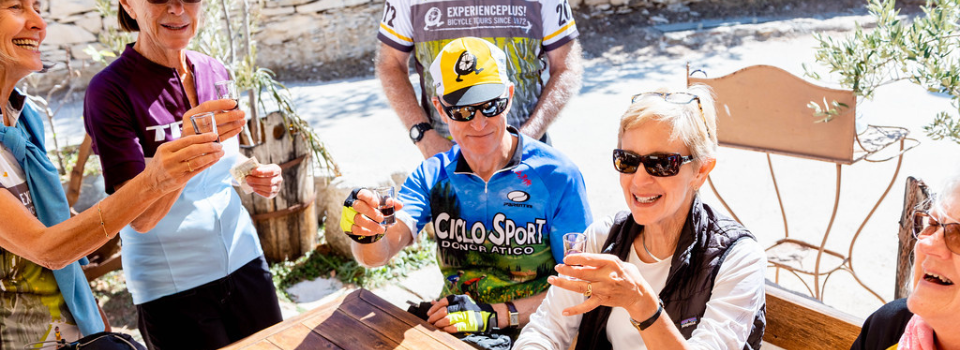
Nadine Dirksen
After you browse our tours, narrow your choices, and finally book your next, or first, bicycle vacation, the work of planning your travel begins. What are the best next steps we recommend that you take on this journey? To answer that question, we point you to our comprehensive and chronological pre-trip planning checklist.
We encourage you to consult this list once you book your tour. This list assumes a long lead time on planning your travels, so if you book your tour closer to the departure date, you’ll just need to compress these steps. You will find this information included in all of our tour itinerary packets, so you’ll always have it handy along with your itinerary.
Things we recommend you do right after you booked:
- Read through your Reservation Confirmation and follow the links we sent to you as they contain important information we’d like you to know. For example the “After you Book Information” will give you a great overview of the most frequently asked questions and what to expect next to help you plan your trip!
- Check the date on your passport. The expiration date should extend three months past your date of return to your home country. If you find you need to renew it, start the process as soon as possible to allow for potential delays, and so you have it ready once you start booking flights and other travel.
- Complete the Customer Information Form (CIF). This form helps us collect/re-confirm important details as we plan your trip. It also covers the required legal release.
- We recommend you take out travel insurance. Start looking now, research policies and be sure you are aware of any potential deadlines to gain extra benefits that might be more expensive when added on later. Start with our information page on travel insurance .
- Start thinking about getting in shape for your chosen tour level and choose a bicycle training program .
- Learn more about your destination, take a look at hotels and find other tips and recommendations as you browse around on our Travel Planning Pages .
6 to 3 Months Prior to Tour Start Date – time to start booking
Now it’s time to start making some travel arrangements for your confirmed trip. We recommend you check with our office if you don’t know if your trip is confirmed.
- Refer to your Tour Packet to see step-by-step arrival and departure information for your tour, meeting place and time, if a reservation on a complimentary ExperiencePlus! Shuttle (if applicable) is required, and other important information to help you plan your arrival and departure, and start making those arrangements.
- Reserve your flights after you know you have a confirmed tour departure. If you’d like help with finding your perfect flight itinerary, we can help by connecting you with our partners at Exito Travel, a flight consolidator, who can provide quotes with no obligation to book.
- Book any desired pre- and post-nights at tour hotels. We’re happy to help with this! Just reach out to us. (Explorer tours excluded.)
- Begin your chosen training program.
- Final payment for your departure is due 90 days (120 days for Bike &Barge/Boat tours) prior to the tour start. Please refer to your Invoice and the Final Payment Reminder e-mail we send 10 days prior to the due date for detailed instructions.
6 to 2 Weeks Prior to Tour Start Date
- Start reading one of the books or watching one of the movies from our Reading and Movie Lists .
- Plan what you are going to pack and start packing! Refer to our Packing Lists for tips on what to bring, or not, and for luggage size and weight restrictions.
- Receive your final departure information. We’ll email you your access code to Digital Daysheets, Hotel Itinerary, Participant Roster, names and contact information of your Tour Leaders, emergency phone numbers, and other important departure information about 2 weeks prior to your tour start date. All this will be provided to you via a feature called Experiences via the RideWithGPS App (tracks available but not necessary for navigation on Classic, Expedition and Bike & Boat tours).
Day of Your Flight
Get as much sleep on the plane as you can. Pack your one day of cycling gear in your carry-on. See you soon!
Pre-Tour: Preparation
- January 24, 2021
- Before you leave
This section includes information on pre-tour preparation. For more information on touring, download the complete copy of Tour Well.
Promoting positive mental health and wellbeing on tour
COLLABORATE
Our industry is full of unique, passionate people. The success of any tour is dependent on mutual respect for everyone involved, whether they be cast, crew, company, audiences, venue teams, or school groups.
You want you and your touring party to feel as safe as possible on tour, both physically and mentally. Take some time to think about yourself on tour – remembering that the way you work and experience touring might not be the same as everyone else. Try:
- Sharing your story inasmuch as you are comfortable.
- Listen carefully to others.
- Never assume that your way of seeing the world is the only way.
- Identify and communicate your needs consistently and respectfully.
- Sensitivities towards community, family, extended family, and kinship systems, and religious and cultural customs.
- Communication style, body language, and language barriers. Don?t be afraid to ask for clarification or confirmation, rephrase or repeat questions.
- Perceptions of safety – everyone’s sense of safety differs – be conscious of how you and your touring party feel in cities, regional or remote areas, unfamiliar towns, late at night, or areas with non-diverse populations.
- Check in with your tour party to make sure you’re using the right form of address, acknowledgement, pronoun and pronunciation for them – and share your preferences too!
Everyone has challenges that you don’t know about. If someone seems to be struggling, gentle concern can go a long way.
Touring can be tough – be kind to each other.
CREATIVE IDENTITY
Sometimes ‘the tour’ becomes the biggest thing in your life, and the show slowly becomes your whole world. That’s not unusual – you’re doing something you’re passionate about, and you’ve worked really hard to get to this point.
There’s nothing wrong with being passionate and committed, but the risk is that ‘the tour’ starts to become ‘WHO you are’ not ‘WHAT you’re doing?’
Before you head off on tour, have a think about all the other threads – outside of the show – that make you YOU.
VALUES: What’s most important to you in life?
Connecting with your values can help orient you to goals beyond this current tour. Check out the list below for inspiration, then consider, ‘If I had a million dollars and a whole year, how would I live by that value? What about a hundred dollars and a week? Ten dollars and a day? One dollar and a minute?’
It’s a matter of choosing a small way of enacting your values in everyday life, so you’re living a life in line with what you value, rather than focussing on what you ‘should’ do.
PLAY: What made ‘child you’ happy?
We all have a ‘happy child’ part of ourselves that needs spontaneity and play. What made you happy when you were a child? Maybe a sight, sound, smell, taste, texture, object, even an imaginary world.
What are some of the ways you can incorporate that joy, playfulness and surprise into your everyday tour life?
MINDFULNESS: Pay attention to the moment
Mindfulness is promoted constantly for positive mental health and wellbeing – and for good reason! It has proven benefits for the immune system, can improve concentration and memory, and can reduce symptoms of anxiety and depression.
Our minds are constantly running, thinking about the past, worrying about the future, or just trying to keep up with today. Our mind, like our body, needs rest and recuperation.
Mindfulness is that rest. By paying attention to the present moment, with an attitude of open, non-judgemental curiosity, it can help anchor you. In the vast uncertainty that is arts work, mindfulness helps you become aware that no matter how difficult things might be right now, they will inevitably change.
Find out more and give it a go – you’ve got nothing to lose by trying it! smilingmind.com.au healthdirect.gov.au/mindfulness-and-mental-health headspace.com au.reachout.com/articles/how-to-practise-mindfulness
I AM: … Not synonymous with my work
Often we label ourselves – ‘I am a Director / Actor / Lighting Designer’ – reinforcing that feeling that we are our work.
- Keep it in perspective – ‘I am currently touring with [Show] as a [role].’ It’s just what you’re doing right now – not your whole life.
- Cultivate your other interests – pack a sketchpad, crossword book, journal – give yourself mental space outside the show.
- Allocate time for yourself the same way you allocate time for daily routines such as brushing your teeth. Make self-care a habit, not a bonus.
CONNECT: Remember the outside world
Watch a news update, read a local paper, chat with family and friends near and far – anything that keeps you from becoming trapped in a tour bubble.
Social media can be helpful for staying in touch, but can also leave you feeling disengaged and left out. Social media often paints an unrealistic view of what’s really going on.
Time spent on genuine connections is likely time better spent for mental health and wellbeing – explore the town, make new friends, and discover hidden gems.
Giving to others can have a positive impact on your mental health and wellbeing too. See if there’s a local charity that holds meaning for you in the places you’re touring. See if there’s time to volunteer, or simply drop in and say hi.
PACKING CHECKLIST
Clothes and shoes
- Plenty of socks and undergarments for a full week. Touring schedules can leave little time for washing, and you never know how far away the next washing machine might be!
- Clothes for all weather, and a range of activities (think comfy clothes for travel days through to something fancy for opening night dos or publicity events)
- Workout gear – swimwear, beach towel, goggles – even a bike or surfboard if you have extra baggage allowance!
- Skincare, nail care, haircare
- Toothbrush, toothpaste, mouth wash, dental floss
- Hygiene products
- Deodorant or crystal stick
- Perfume or cologne (be mindful of your tour party’s sensitivity to fragrances)
- Make up / make up remover
- Stain remover stick (perfect for a quick basin wash or the odd stain)
Kitchen kit
You never quite know what you are going to get in a hotel kitchen! You might be able to fit:
- Good knife and small chopping board
- Tupperware container and zip lock bags
- Basic cutlery/utensils set and your favourite mug (even your preferred pan/wok/baking dish if space allows)
- Single serve blender for on-the-go nutritious smoothies
- Basic ingredients (herbs, spices, salt and pepper, small bottle of olive oil, packed in a plastic bag) to save you buying them over and over in each city. Be sure to check biosecurity laws first.
Home away from home
- Comfort food
- Special piece of clothing
- Favourite blanket
- Photos of family and friends
- Scented candle or oils
- Your pillow (or if it won?t fit, pop your favourite pillow cases in your luggage for a touch of home).
Electricals and entertainment
- Phone and CHARGER (pack a spare – someone always leaves theirs behind!)
- Adapters (if travelling overseas)
- Laptop/tablet
- Earphones/headphones
- Cards / games
Don’t forget
- Items of cultural or religious significance. Check the calendar before you go for any days of cultural or religious significance that might happen while you’re on tour so you can plan appropriately.
- Any medications (and copies of prescriptions)
- If you have any ongoing medical, physical or mental health concerns, a referral letter from your GP can be helpful if you need to seek assistance on the road
- ID (passports, licenses etc.)
- Trigger biochemical stress reducers
- Reduce the perceived intensity of pain
- Increase workout endurance and performance
- Speed up post-workout recovery
- Elevate mood while driving – crank up your tunes if you’re feeling cranky in the car!
Check (and double check) your luggage allowances, and always check with Company Management if you want to pack something on the tour truck.
FEELING CONNECTED WITH OTHERS: A BASIC HUMAN NEED
While you might be around others on tour, being away from family and friends can take its toll.
Before you go, have a chat with your loved ones to come up with solutions for staying connected
What would be a reasonable expectation for how often you will be able to be in contact? Are there any periods that contact will be not possible? Would you prefer to work out a set communication routine, or would you prefer to be spontaneous?
Make the best of technology
Call, text, Skype, message, email – whatever works to stay in touch. Consider a closed social media group if you don’t want to ‘spam’ your friends with tour updates!
Figure out what would make you feel more connected while you’re away
Perhaps mates could send postcards to be waiting for you at the next town, or you could find a way to bring your partner for a visit.
Check for any important events
For example, birthdays or anniversaries that might take place while you’re away. Chat about how you might celebrate from afar.
Work out a plan for managing potential crises at home
Who can help coordinate things and keep you up to date while you’re away? There are times when life throws a curve ball, like an accident or an illness, and you can’t be there – you’ll feel better knowing a plan is in place if the unexpected happens.
Notice if you’re feeling lonely
It sounds simple, but keeping an eye on your feelings can help you to take action. The antidote to loneliness is connection and you can seek it in many ways. Connect with a human or an animal in the community where you’re staying, seek support from your tour mates or direct your attention back home.
TOURING WITH A MENTAL HEALTH CONDITION
If you have an identified mental health condition, planning will be key.
Talk with your GP, specialist or psychiatrist before you leave and get their advice on how to manage your medication while you’re away. The effectiveness of certain medicines follows the body clock, so interruption or reversal of the sleep/wake pattern can interfere with treatment.
If you need advice about medication while you’re on tour, you can call 1300 MEDICINE (1300 633 424) from any state or territory between 9am and 5pm AEST (except NSW public holidays) or Nurse on Call (24/7 Victoria only) 1300 60 60 24.
Seeing your psychologist
Chat with them about whether you can continue having sessions while you’re away, perhaps via video-conferencing or phone.
Schedule a pre-tour session to consider stressors and triggers to feeling unwell, and develop specific management strategies to implement while on the road.
Sharing your story
Consider disclosing to at least one trusted person on tour so you have someone to seek support from if needed.
If you work for an organisation you feel supported by and feel comfortable sharing your mental health journey, talk to them about what you need. It can be worthwhile to share with company management, too, confirming that you are prepared for touring, and you have a management plan in place.
You might need to be quite firm about your needs and boundaries. That’s OK – your health is the most important thing.
Stay up to date with our latest resources, events and training opportunities delivered straight to your inbox.


Home | About | Contact | Preschool Cubby Member Login
- Theme Packs
- All Themes - Alphabetical
- Month by Month Themes
- Holiday Themes
- Bible Themes
- Fall Themes
- Winter Themes
- Spring Themes
- Summer Themes
- Planning Activities 101
- Planning Themes 101
- Circle Time
- Gross Motor
- Health/Nutrition
- Plan Preschool Graduation
- Plan Preschool Concerts & Plays
Preschoolers
- Growth & Development
- Developmental Milestones
- Behavior Guidance
- Special Needs
- School Readiness
- Preschool Family Life Events
- Toddler Tips
Teacher Development
- New Teacher Tips
- Parent Communication
- Professional Development
- Teaching Tips & Tricks
- The Classroom
- Interest Centers
- Classroom Pets
- Bulletin Board Ideas
- Director Home
Preschool Cubby
- Product Reviews
The 4 Key Components Of A Preschool Tour

There are 4 important pieces to a preschool tour . The desired outcome of a tour is enrollment.
You need to add, or improve upon, the following items RIGHT NOW if you want to increase preschool enrollment with your next preschool tour!
Does your preschool tour pretty much look like this?:
- Prospective parents visit your center.
- They are shown around the classrooms and given information about the program and you answer a few questions parents (might) ask
- Parents leave with a packet of information
- The waiting game begins. You hope the family was impressed with your program and will soon send in the registration form from the packet.
If this is your tour process, you need to revamp it to include the following 4 items.
You'll find more resources for Preschool marketing on my preschool marketing page
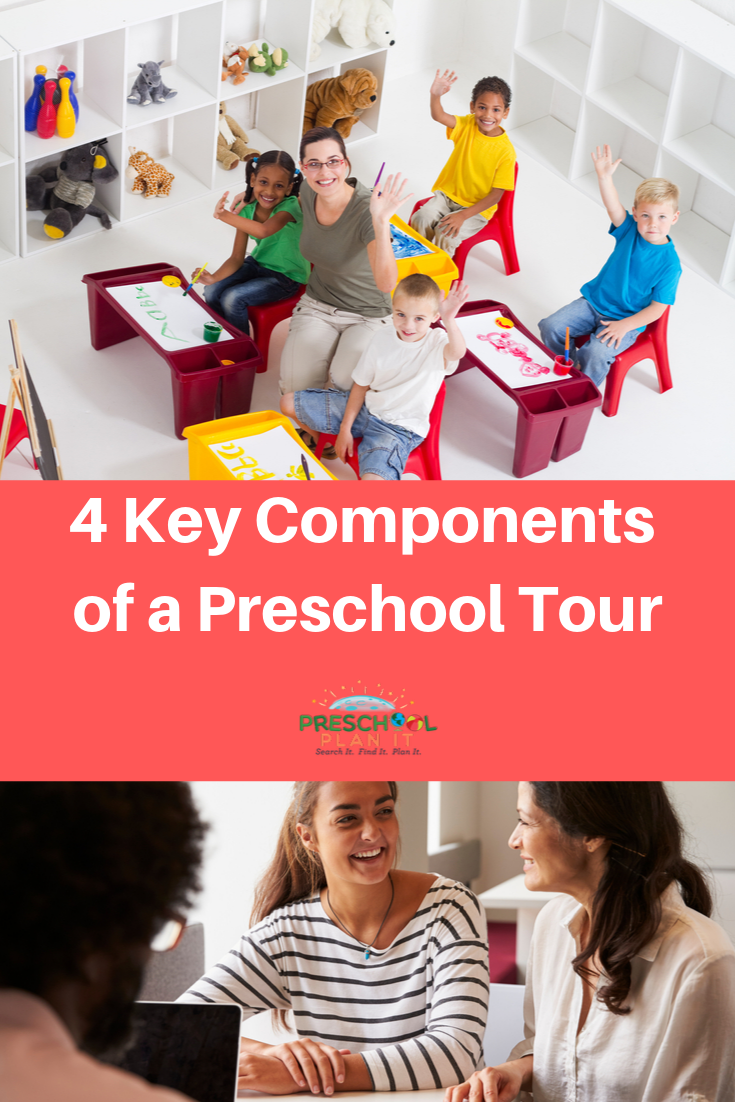
1. Clean Up! Clean Up! Everybody, Everywhere! The Preschool Tour Begins OUTSIDE the Door!
(You’re welcome for that Barney ear bug by the way! You’ll never get that song out of your head!)
It is said that Will Rogers once remarked, ‘You never get a second chance to make a first impression’.
This is true in life. It is true for your program!
A friend of mine is a real estate agent. In her field, this is called “Curb Appeal”. And it IS important.
In the real estate world, the person seeing a home makes their primary decision on the purchase based on what they see when they pull up to the property.
If the outside is not kept up, the potential buyer presumes the inside has not been kept up either.

The same is true of families coming to your center for a preschool tour.
They will notice everything as they pull in or walk up to your building—a decision to enroll, or not, might happen before they even step into your doors!
Go outside and walk up to your front door through the eyes of a visiting family. Consider the following:
- Is the grass freshly mowed?
- Are the wood chips fresh and loose?
- Are there any flowers planted (put some potted free-standing or hanging plants out front if you don’t have an area to plant flowers)?
- If there are flowers, are they showing signs of life or signs of neglect?
- Are the windows (or doors) displaying children’s hand-painted art work or children’s smudged fingerprints?
- Is the outside paint chipped or peeling?
- Are there cracks in the windows, windowsills or doors?
- Is there trash or debris outside?
- Are the toys in the playground clean and undamaged?
If these basics aren’t being kept up, what type of message does that give to visitors?
Look at your center as a first time visitor. Many times we look past what we see every day, however, a new family will notice everything!
2. Meet the Needs of the Visitor During the Preschool Tour
When a parent or family arrives, greet them warmly! Address them by name. Give them your full name (first and last!) and your role.
“Hi John! It’s great to meet you in person! We spoke the other day. I’m Cheryl Hatch, the Director (or Lead Teacher or Administrator) of Preschool Plan It.” Address the child by name and introduce yourself to him or her as well!
The next step I suggest is to bring them to your office to sit and chat for a moment. If you don’t have an office for this, have an area with a small coffee table and a few chairs already set up. You really need to get to know this family a little before the tour.
At this time, you want to just take a few minutes to find out about them! Offer them a clipboard with a “What To Look for Checklist” (click that link to download mine if you don’t have one!). Let them know you realize the importance of choosing a program that best fits the needs of their family. Encourage them to look it over and take notes once you start showing them around!
Ask them about THEIR needs. Instead of going into your memorized “preschool tour speech”, ask them some of the following questions (and be sure that YOU take notes as well!):
- What are you looking for in a preschool program?
- What, if any, concerns or challenges do they have that you can help them with (potty training, eating habits)?
- What are their preschool goals for their child over the next year (or 2 years if you have a 2 year program)?
Once you have this information, you now know which benefits to focus on during the actual tour.
As you take them through your facility, address their needs. For example, if their concern is potty training, show them where the bathrooms are in relation to the classroom, what type of assistance your staff gives, how your staff handles accidents, the need for bringing in multiple changes of clothing, etc.
If their concern is being a picky eater, discuss your snack policy (do you provide snack, do the parents? Discuss how you encourage children to try new foods and what you do if they do not eat).
You will want to be sure to also let your parents know what MAKES YOU STAND OUT from other programs. Let’s talk about that next!
3. Sell Your Unique Benefits During the Preschool Tour
As you are showing families around your school and addressing their needs, goals and concerns, you will also want to highlight the unique benefits of your program. Spend an extra minute discussing your niche.
The proper way to do this is to discuss the benefit their child will get, not the activity or program that you offer.

Families won’t be impressed that you “have a new, state of the art playground”. They WILL be impressed to know that their child will grow and develop their large muscles, balance and upper body strength using the playground equipment daily. They will be impressed that their child has at least 30 minutes a day of outdoor play AND that you have a plan for gross motor play even on bad weather days.

If you are a religious program, let parents know how your support and encourage their child’s knowledge and understanding of the Bible through daily Chapel Time, Bible stories and activities and and through play in the Bible Interest Center .
If you aren’t clear on what your unique benefits are, you can’t “sell” families on them! Click here to read more about finding your niche-what sets you apart from other programs in your area.
Be sure to introduce the family and child to the teacher(s) in the class the child will attend.
Special Note On This: Please, PLEASE —take the class over for 5 minutes so that the teacher has focused time to chat with the family and the child. (Of course, your staff should be told in advance that a tour is coming and you should cover what the staff should highlight during the tour. But that is for another article!).
3A. “Close the Sale”: Get the Enrollment at the End of Your Preschool Tour

Once you have finished the tour, go back to your office (or meeting place) with the family and sit down again!
At this point, my plan is to do 2 things:
- Tell them how much I enjoyed meeting them.
- Ask for the registration!
I know- that second one is tough! You don’t want to be a “pushy salesperson”. However, you are, in my opinion, doing the family a disservice if you do not invite them to enroll in your program at this point.
You are not giving a tour because you like talking about your program! You are giving a tour because you love serving families and want families to join your program!
When I first gave tours years ago, I ended the first few tours thanking them for coming, giving them a packet and telling them to call if they had any questions. What a poor ending! I realized by doing this, I was unintentionally giving the idea that I didn’t want them in the program. If I did, wouldn’t I offer them a spot?
If you think your program can meet this family’s needs, tell them so!
It would go something like this:
“I have really enjoyed meeting you all today and showing you the program. I think with Cheryl’s love for art and science, she would be a great fit in Miss Tamara’s class! I would love for your family to join our program. Would you like to have her start on the first of the month?”
Unless you know specifically that you cannot meet the family’s needs, ask them to enroll!
WHAT? Your program may not be the right fit for a family??
I have had three times where our program would not have been the right fit for a family.
1. Due to the parent’s request that the child have a one-on-one aid for extra learning (not due to a special need). This family wanted one on one instruction which our program does not provide. I discussed other options in the community for their child while still letting the family know of the growth and learning that does happen in a group-based program. (The family chose a Montessori program in the end).
2. A parent's desire was for a highly structured program, specifically to teach reading and math. Again, I discussed the positive aspects of learning the alphabet and math skills in a print rich environment. They chose a different program as well.
3. Conflict with hours. The family needed a program that was available to have their child from 8:30-12:00. Our program was 9:00-12:00 and we were not in a position to open earlier.
Again, unless you know specifically that you cannot meet the family’s needs, ask them to register!
If they are not ready to make that decision, that’s okay. Your process now would be:
- Give them your tour packet and encourage them to call you with any questions
- Give them a "thank you for touring" bag.
Our packet included the following:
- Thank you letter from the director
- A reference list (of families who wrote letters for us or were willing to give their telephone numbers for phone calls from prospective families)
- A recent newsletter from the class the child would be placed in
- A program information page that includes fee schedule, ratios, hours, philosophy of education
- A registration form
This is NOT your parent handbook! This is NOT the time to give them all of your program policies and procedures!
The Thank You Bag
I did not always do this, but once I added it, it was a great hit!
You can purchase these in bulk at Amazon . Our Thank You bag included
- tote bag (with the program name painted on it or ironed onto it!) filled with:
- Children’s book
- Clear report covers
- Dry-erase (low-odor) markers
- Magnetic business card
- A few pre-writing practice papers with instructions (I made these!)
Each of these items had our name or label in or on them!
Giving them a gift bag is an opportunity to:
- Provide families with a reminder of their visit
- Provide marketing materials they can give to friends looking for preschool
- Provide an activity that supports our program (literacy, fine-motor development).
- And, well, it’s just a nice touch!
3B. Nurture “Closing the Sale”: by Following Up AFTER the Preschool Tour
If the family does not enroll at the end of the tour, you need to follow up with them!
Your tour was scheduled so you have their telephone number, email address or mailing address (preferably all three!).
If you have their email or mailing address, follow up with them no later than 48 hours after the tour. Thank them again for coming and reiterate that you would love to have them join your program.
Include an article about an issue, concern or challenge they discussed with you (such as an article about potty training or picky eaters).
Encourage them to contact you (give your telephone number and your email address) any time with questions they may have.
You can also let them know how many spots are left in the class their child will be in (please do NOT tell them “There is only one spot left….enroll today!” if it is not true. That really bugs me! If it IS true, tell them that but also offer to hold that spot for them until 5:00 pm on ________.

Follow up more!
I have learned more about marketing over the past few years. There are many things you can put into place so that follow-up is automatic, especially with email! However, it would work with regular mail as well!
You can set up what is called an auto responder through an email service or mail out follow-ups. Either way, prospective families will be receiving regular information from your program.
For email, you would schedule helpful information to go out once a week (after the 48 hour follow-up).
For regular mail, you would mail this helpful information once a week (I pre-addressed envelopes after a tour and put the date I wanted to mail the information in the area where the stamp will be placed!).
When they are ready to enroll, you will be first in mind for them! I will talk more about auto responders in another article in the future.
Preschool Tour Conclusion
If you have been the person to give the preschool tour to prospective families, you most likely have specific items and topics you like to cover with families.
Be sure to review this list to ensure that you are covering the important pieces discussed, therefore turning a majority of your preschool tours into enrollments!
If you are new to giving tours, you will need to set up your steps now to include this information.
If any staff members also give tours, be sure you all meet together to discuss these 4 key components of preschool tour giving!
Other articles you may be interested in:

Go to the Preschool Director Home Page
Go to Preschool Plan It's Home Page
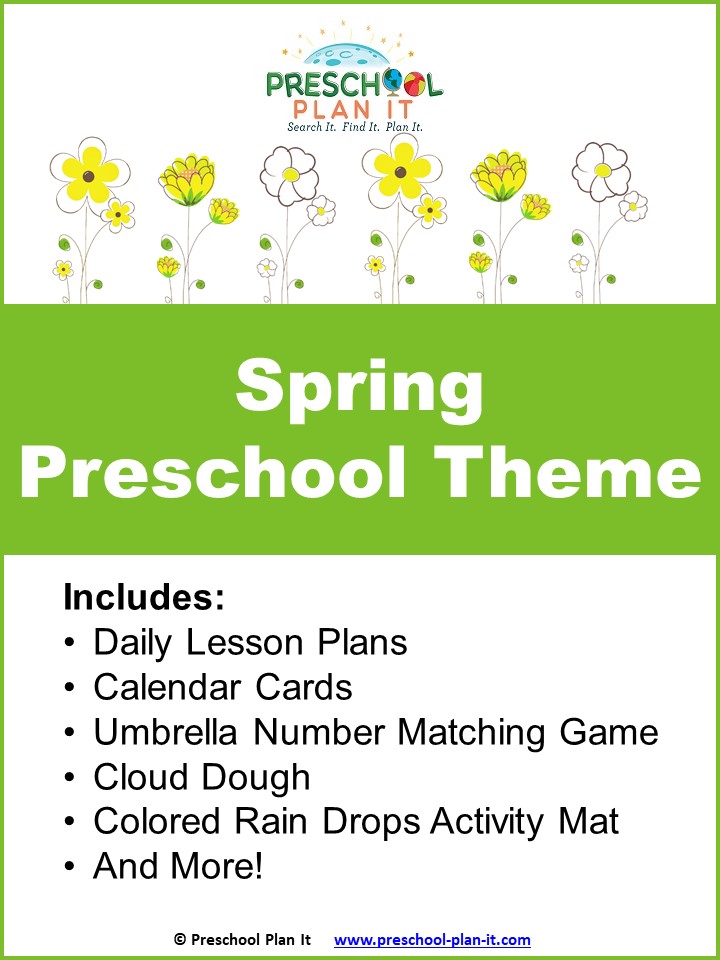
About This Site:

Voted #1 Preschool Blog 2019!
Featured on:
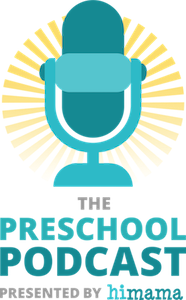
Testimonials
Privacy Policy

Hey there! Welcome to Preschool Plan It! I’m Cheryl, a preschool teacher of over 20 years.
I KNOW, I know , you spend hours of time developing your preschool themes, activities and preschool lesson plans each week. You are commited to planning preschool themes and activities that are engaging hands-on, interactive, fun AND meet the goal of supporting each child’s level of growth and development.
I am commited to providing you, the preschool teacher, with everything you need to develop preschool lesson plans and preschool activities for your classroom all in one place!
Join My Free Preschool Teacher Tips Newsletter
You’ll receive a weekly email with planning tips and teaching ideas. You'll also receive (on the 1st of each month) a free theme starter pack with some printables and activity ideas to get you started planning a theme!
Join Now and Get Your First Theme Right Away!
© Copyright 2010-2024 Preschool-Plan-It.com | All Rights Reserved | Privacy Policy & Disclaimer

Patient visits can be more effective if much of the information gathering is done ahead of time.
CHRISTINE A. SINSKY, MD, FACP, THOMAS A. SINSKY, MD, FACP, AND ELLIE RAJCEVICH
Fam Pract Manag. 2015;22(6):30-38
Author disclosures: Christine Sinsky is an adviser for Healthfinch, a company that develops prescribing software. No other relevant financial affiliations disclosed.

When you walk in to see your next patient, is all of the necessary information assembled, organized, and ready? Or do you spend the first five to 10 minutes of each appointment determining who the patient is, why he or she is here, which performance measures are due, and what care the patient may have received from another provider, the emergency department, or an urgent care center since his or her last visit?
In our own practice, if the first time we think about a patient is when he or she checks in, we are already behind. 1 – 3 There is a lot to be done at each appointment. Consider that the average family medicine patient age 65 or older presents with four problems per visit and, in our experience, one or more care gaps needing to be addressed. 4 This is more work than a physician can typically handle alone yet is too important to leave to chance.
Pre-visit planning can help make your patient visits run more smoothly, giving you time to focus on what matters most to the patient and even a little time to spare to simply visit with the patient. Furthermore, you may be able to head home an hour earlier, feeling satisfied with the day and a job well-done, knowing that your patients and staff feel the same.
IN THE AUTHORS' OWN WORDS
Dr. Thomas Sinsky and Debra Althaus, RN, discuss some of the benefits that pre-visit planning provides for their practice.
Pre-visit planning
The objective of pre-visit planning is to help the patient and physician conduct the face-to-face visit more effectively by gathering and organizing information ahead of time so they can devote more attention during the visit to interpreting, discussing, and responding to that information.
Pre-visit planning takes place in several steps:
1. Plan forward, or “The next appointment starts today.” 5 The most efficient form of pre-visit planning begins near the end of the previous visit. As the visit draws to a close, the physician and patient decide on next steps, such as planning any lab tests that might be needed before the follow-up appointment. The physician is already familiar with the patient's conditions and medications, so it should take very little time to identify the appropriate tests for the next visit. The patient then may schedule these appointments immediately instead of having to remember to call back in several months to set them up.
In our practice, we use a checklist to help us plan for the next visit. The checklist is part of a form that also includes the date of the patient's last annual exam as well as any upcoming appointments and labs that are already scheduled. This format allows the physician to put today's care and the next visit's care within the context of the patient's ongoing care. The checklist features lab and other test options in three sections: those to be done before the patient leaves today; those due before the next follow-up visit; and those due before the next annual visit. The patient is then given the option at check-out of receiving an automated reminder phone call, text message, or letter closer to the time of the appointment. (The "Post-appointment order sheet" is available in the FPM Toolbox ).
In an effort to be more patient-centered, we've also found that asking the patient when he or she would like to return is an effective way to share decision-making and give patients an active role in their own care. We also believe this approach, combined with the reminder system and pre-visit labs, have helped lower our no-show rate, which is less than 4 percent.
2. Look back . Some practices do not begin pre-visit planning at the end of the current visit. Instead, it starts a week or so before the next visit when a nurse or other staff member looks back over a patient's record and orders any tests indicated by protocol based on the patient's conditions or medications, as well as any instructions the physician left in his or her documentation from the previous visit. Practices that rely on physicians to enter future orders into the electronic health record (EHR) on the day of the visit will sometimes also employ this “look back” process by the clinical staff. Physicians may feel they cannot spare extra minutes at the end of the visit inputting orders when other patients are waiting, so the look-back process ensures the work has been done.
Reviewing the patient's record outside of the office visit requires more time than planning forward, but it is still more efficient than not doing any pre-visit planning.
3. Pre-visit lab testing . Pre-visit lab testing saves time, improves patient engagement in health management, and reduces the amount of work needed to report and respond to results. Some practices arrange for patients to come in several days before the appointment for lab testing. Others arrange for patients to have their blood drawn 15 minutes to an hour before their scheduled appointment and then use point-of-care testing or rapid turnaround of standard lab testing. In both cases, the goal is to time the tests so that the results are available to the patient and physician at the face-to-face visit.
By having the results available during the appointment, patients can be part of the ensuing decision-making and are more likely to adhere to the treatment recommendations than if they received those recommendations later by phone or letter. In addition, the physician and patient can avoid playing phone tag or engaging in several rounds of email after the visit to resolve unanswered questions. One practice found that pre-visit labs saved $25 in overhead per patient visit. 6
Pre-visit labs can also aid safety. Because patients are able to review their test results together with their physician at the appointment, it is less likely that an important result will be overlooked or lost in the system.
4. Pre-visit phone call . Calling the patient ahead of his or her visit can help the clinical team prepare more thoroughly by clarifying the patient's agenda, anticipating any special needs, and completing many of the tasks usually performed during rooming, such as reviewing medications or screening for depression or falling. Some practices reserve pre-visit phone calls for complex patients. A pharmacist or pharmacy technician may also call these patients for in-depth medication reconciliation. In some cases, this process is aided by access to an all-payer claims database, which staff can use to see what medications the patient has actually filled. You can identify and address nonadherence to medication in a non-judgmental way with this approach.
5. Visit preparation . On the day of or the day before a visit, the medical assistant or nurse can do a quick review of the patient's record to see what needs the patient may have during the appointment. For example, they can identify if the patient needs an immunization, a cancer screening, or other prevention measures and close these “care gaps” during the rooming process. Conducting visit prep can be an effective tool in panel management and can positively affect the health of the entire patient population.
6. Pre-visit questionnaire . A pre-visit questionnaire is a list of questions the patient completes either on paper in the waiting room or through an online patient portal from home. See the questionnaire our practice uses .
PRE-VISIT QUESTIONNAIRE
Questions explore the reason for the visit (“What are you hoping to accomplish today?” and “Is there anything else you'd like to work on to improve your health?”), which prevents the situation in which a patient's main goal is revealed just as the physician is about to leave the exam room. Standardized questions applicable to the particular practice, such as screening questions for falls, depression, or domestic abuse, can also be asked. The questionnaire can also be used to update the patient's past, family, and social histories, as well as to conduct a complete review of systems. All of these uses can save the staff, physician, and patient time during the actual visit.
In our own practice, we have a separate pre-visit questionnaire for the Medicare Annual Wellness Visit that mirrors the template in our EHR, which makes it easier for the nurses to upload the information. Some EHRs are designed so that the patients' answers to the pre-visit questionnaire can be imported into the visit note, reducing the amount of data entry required of physicians and clinical staff.
7. Mini-huddle . The nurse or medical assistant often learns important medical and social information during his or her interaction with the patient during rooming. We have found that a brief “mini-huddle” with the physician before the physician meets with the patient can be helpful. The nurse can alert the physician to the patient's concerns (“She is afraid she will lose all strength in her arm”), a change in social situation (“His wife was recently diagnosed with breast cancer, and he is worried”), or a teachable moment (“Her sister just developed diabetes, so she is willing to work more on diet and exercise to prevent this from happening to her”).
Although we have not found many studies measuring the overall financial savings of pre-visit planning, our personal experience is that pre-visit planning definitely reduces the time spent on a patient's care during or after the visit. A rough estimate is that pre-visit planning takes about an hour of nursing time per day and saves about an hour of physician time and up to two hours of nursing time. It also increases the quality of care by identifying agenda items and care needed at the appointment, such as immunizations or cancer screening.
We have received mostly supportive feedback from our patients regarding pre-visit planning. When they leave an appointment, we reserve a time for their next appointment, which they can plan around. We plan ahead to make that next visit meaningful to them. They don't have to wait after the appointment for lab results or instructions based on those results, and they can speak with their physician about those management decisions.
Finding the right strategy for you
Pre-visit planning can take many forms, and practices can choose the ones that make sense for them. Each component adds efficiency and supports a rapid understanding of why the patient is visiting and what his or her comprehensive needs are. An organized system to manage this complexity and volume will allow physicians to relax and truly listen to patients, knowing that the standardized, predictable work of the practice happens correctly by default and resting assured that they have minimized the chance of overlooking an important piece of data.
You can read more about pre-visit planning, pre-visit labs, huddles, pre-appointment questionnaires, and building a culture of team-work at the American Medical Association's practice transformation website .
Sinsky CA, Sinsky TA, Althaus D, Tranel J, Thiltgen M. Practice profile. ‘Core teams’: nurse-physician partnerships provide patient-centered care at an Iowa practice. Health Aff (Millwood) . 2010;29(5):966-968.
Sinsky CA. Improving office practice: working smarter, not harder. Fam Pract Manag . 2006;13(10):28-34.
Kravitz RL. Improvement happens: an interview with Christine Sinsky, MD. J Gen Intern Med . 2010;25(5):474-477.
Beasley JW, Hankey TH, Erickson R, et al. How many problems do family physicians manage at each encounter? A WReN study. Ann Fam Med . 2004;2(5):405-410.
Phrase coined by ThedaCare Health System, a community health system based in Appleton, Wis.
Crocker JB, Lee-Lewandrowski E, Lewandrowski N, Baron J, Gregory K, Lewandrowski K. Implementation of point-of-care testing in an ambulatory practice of an academic medical center. Am J Clin Pathol . 2014;142(5):640-646.
Continue Reading

More in FPM
Copyright © 2015 by the American Academy of Family Physicians.
This content is owned by the AAFP. A person viewing it online may make one printout of the material and may use that printout only for his or her personal, non-commercial reference. This material may not otherwise be downloaded, copied, printed, stored, transmitted or reproduced in any medium, whether now known or later invented, except as authorized in writing by the AAFP. See permissions for copyright questions and/or permission requests.
Copyright © 2024 American Academy of Family Physicians. All Rights Reserved.
- Skip to main content
- Keyboard shortcuts for audio player

- LISTEN & FOLLOW
- Apple Podcasts
- Google Podcasts
- Amazon Music
Your support helps make our show possible and unlocks access to our sponsor-free feed.
How to plan your dream vacation
Sometimes you crave a vacation — but actually taking one feels out of reach. Maybe you're struggling to find the time or save up the money. Or maybe you just can't seem to launch those plans out of the group chat. Overcome that planning inertia and take the big trip of your dreams. Here's where to start your search, organize your logistics and enjoy yourself.

MARIELLE SEGARRA, HOST:
You're listening to LIFE KIT...
(SOUNDBITE OF MUSIC)
SEGARRA: ...From NPR.
Hey, everybody. It's Marielle. You remember the early part of the pandemic when the days of isolation stretched into months? At night, I would lay on the floor of my apartment with my eyes closed and listen to guided meditations, to try to take myself to a happier place. One time the prompt was something like, picture yourself doing something that brings you great joy. The first thing that popped into my head was an image of me wandering the cobblestone streets of some small European village, probably in France. The sun was shining, and every step I took was a feast for the eyes. Medieval houses, colorful flowers resting in vases on outdoor tables, patisseries with gorgeous pastries in the window, just waiting to be eaten.
I didn't realize until that moment just how much I missed traveling and how badly I wanted to look at something outside of my four walls or the blocks of my neighborhood. The next year, I took a three-week trip to the U.K. and France, and I ate those pastries and wandered until my feet hurt and filled a hole that had been growing inside of me.
Big trips can do that. Lale Arikoglu knows what I'm talking about. She's the articles director at Conde Nast Traveler.
LALE ARIKOGLU: On a really basic level, I think it's just being able to have a break from the crush of regular life, whether that's work or childcare or school, wherever it may be, you know, the opportunity to just take yourself out of your routine and be somewhere else and get to immerse yourself in that place to me is, like, the main draw of it.
SEGARRA: Now, when we talk about a big trip, that could mean different things depending on your travel style and your budget. You know, it might be a long road trip or an extended stay at a cottage in the woods or a multi-city tour on another continent. But it's typically something you save up for and plan months in advance. Lale has a big trip coming up. She's going to Peru.
ARIKOGLU: I've been waiting to do it for a long time. The reason to go there is for a friend's wedding. And now I'm building a trip around it, and it's going to be about ten days long with multi-stops, you know, having to choose multiple places to stay. And logistically, you know, it's actually taking some thought and some planning. One of the things that we're going to do when we're there is hike Machu Picchu. There's a group of us going. And Machu Picchu - it's a dream to see and experience.
SEGARRA: Now, it's easy to get bogged down in trip planning. And it might stop you from booking the thing entirely, but Lale says, do it. It's worth it.
On this episode of LIFE KIT, Lale shares her best tips on planning the big trip of your dreams. We'll talk about where to start your search, what logistical questions you should ask yourself and how to actually relax and enjoy yourself once you're there.
SEGARRA: Let's say I do want to take a big trip, right? I'm feeling that itch to travel, but...
ARIKOGLU: Right.
SEGARRA: ...I don't have a destination in mind yet or a duration. I'm really starting from scratch. Where does the planning start?
ARIKOGLU: When you start the planning, you've really got to think what you want to get out of the trip. You know, If you really just want to decompress and relax and rest, then you probably don't want to do some like multi-stop European city trip, right? You probably don't want to hike Machu Picchu. Perhaps it is that you're incredibly bored of your surroundings, and you need adventure and you need excitement. And therefore, you're going to be thinking of some really different destinations. It might be that you're traveling alone for the first time. You've decided to do a solo trip. You know, where is a place that might feel comfortable for you as a solo traveler, but still feels like it's taking you out of your comfort zone? So I think it's sitting with yourself and thinking, OK, what is, like, the goal here? That's takeaway one. Ask yourself what do you want to get from this? Set the mission of your trip.
It feels like another really important detail at the beginning is budget, right? Like, how much money do you realistically want to spend on this trip or can you afford to spend?
ARIKOGLU: And, you know, that's going to look different for everyone. If we're talking big trips, rarely are they spontaneous, right? You're planning for a long time. So that also allows you to save and finance for it. No, there's lots of great savings apps that can just, you know, that take a little bit of money out of your paycheck every few weeks, and you can kind of start, like, a travel fund that way. I think that's quite a nice way to do it. But I think, you know, you can do a big trip on a budget. It doesn't have to be, I think, a lavish, international trip. I mean, you know, we're going into spring and summer, there are so many incredible national parks to see, there are so many amazing, very diverse, different cities. There's, like, so much on your doorstep, so I think you can really argue, you don't have to cross continents to have a big trip. And so if that feels a more affordable way to get away for a couple of weeks, then, you know, look in your backyard.
SEGARRA: Right. I wonder, too, like, part of budget, besides money, is also time. Like, how much vacation time do you have? Do you have any tips for people who don't have that much vacation time?
ARIKOGLU: So I think if you look at the calendar and you look at where the holiday weekends fall, There are some tricks to being able to kind of, like, turn your limited number of vacation days into - kind of you can stretch it out if you bookend it with a holiday weekend or something like that. But on the flip side, it's also most expensive time to travel, right? There is an argument for choosing shoulder season, so that's not traveling to a destination when it's at its peak. And this is great for your own personal experience, but it's also in terms of helping that destination deal with overtourism, overcrowding. If we're talking about Europe, for example, the summers are getting hotter. So avoiding those really intense, hot, summer seasons can actually be really advantageous for your own travel plans.
SEGARRA: Yeah. That seems like maybe the next thing to consider as you're planning a big trip before you start looking at destinations is what time of year are you looking to travel?
ARIKOGLU: Definitely. And that's more of a luxury for some people because If you're having to navigate school holidays, then you're a little bit more limited. But again, it's sort of when you're thinking about carving out those goals and what you want to get out of the trip. Maybe it's the seasonality that's really important. Maybe it's all you want is hot weather and a beach. You know, if you're planning some summer travel, you could totally flip things on its head and go experience winter somewhere. I went to Patagonia when it was entering into their fall in Chile, and it was a really magnificent time to be there, and it was when New York City was going into spring. It felt like upside-down land to be choosing to do that, and it was so wonderful. It was great.
SEGARRA: Yeah. I think there's a lot of room for creativity there. And also, as you said, like, it opens up more possibilities if you consider going places during the shoulder season.
ARIKOGLU: And you get to be in a place and actually be in the place with the people who live there. One thing in August, if you go to Europe, everyone who lives there has, you know, gone off somewhere else on vacation to escape the heat and the tourists, and so, you know, you're in Rome with just all the other tourists and none of the Romans.
SEGARRA: All right, so takeaway two. Before you land on a destination, think about your constraints. What time of year do you plan to travel? For how long? What budget are you working with? If you're short on time, you can make use of holidays or pick a destination closer to home. If you're short on money, think creatively. You know, maybe you do a road trip through some parks or cities nearby.
SEGARRA: It seems like another thing to consider here is, how much do you like crowds? Because for me, it kind of ruins a trip or an experience if everywhere I go is super crowded. I get very overwhelmed by that and overstimulated.
ARIKOGLU: And it's also, you know, who are the crowds? Because there's been times when I've gone somewhere and I've gone and done the same bucket list site that everyone else is, and you're sort of standing there and you're thinking, What am I actually here for? Well, what is the purpose of this? What am I getting out of it? What am I giving to this destination other than just being another member of the crowd?
SEGARRA: Yeah. I think that's an important question, right? 'Cause, like, we have been talking about what are you looking to get out of it, for the most part. But there's another side to this - right? - and it's what am I giving? And also, what am I taking? Like, am I taking too much from this place?
ARIKOGLU: I think about that a lot. When you're planning, be really thoughtful about where you're spending your money. When you're choosing a hotel, is it a hotel that is locally owned? What restaurants are you booking? Where are you shopping? Where are you buying your souvenirs? You know, I think there's lots of ways to be really thoughtful about, you know, how you spend your money, and that can go into your budgeting, as well.
SEGARRA: I know there are certain places that at a certain time, at least, they said, please, tourists, like, please stop coming or stop coming during this time.
ARIKOGLU: Yeah. When a destination says that, I mean, it's something to be taken so seriously because they're usually destinations that have an infrastructure or an economy that really relies on tourism. So things have to have gotten pretty bad for a destination to say, take a beat, not right now, and listen to that, and, you know, the place will be better for it when you do go see it.
SEGARRA: I picture it as if you were, like, going to - going over, like, a friend's house uninvited, or, like, if they were like, please, today's not good. Like, our whole family's sick, like, we're all throwing up, and then you were still banging on the door, like, hey, what are you doing? Can I come stay over?
ARIKOGLU: I think that is a perfect analogy. Perfect. And no one wants to be that person.
SEGARRA: No.
ARIKOGLU: I'd hate to be that person.
SEGARRA: That'd be weird behavior.
ARIKOGLU: Yeah.
SEGARRA: Takeaway three, travel responsibly. Research the places you're interested in, and make sure they want tourists at the time you're looking to visit. When you're booking, consider putting your money toward the local economy rather than international chains. Also, learn about whatever destination you choose. Be open to the cultural practices and languages there. And be a respectful visitor.
Anything else that people would want to figure out before they start narrowing down or looking at destinations?
ARIKOGLU: I think it's also thinking about who you want to travel with. Someone can be your best friend, but they can be your worst roommate. I think travel's kind of the same, so kind of finding someone to travel with or a group of people to travel with who you're aligned with in the planning stage, rather than when you get there and then you suddenly discover you all want to do different things. So I think communicating right off the back what you all want out of the trip and what you're excited about and also being really honest with each other about finances.
If you're on a group trip, I mean, it's like splitting the bill, but a thousand times worse. And so I think if you can kind of, like, set some parameters at the start and be really honest about what you feel comfortable spending money on because inevitably, there is going to be some people on the trip who want to spend more money on some things than others.
SEGARRA: Yeah. And it seems like that conversation, there should be some form of that before you book anything.
ARIKOGLU: Yes, 100%. And, you know, I think even if you don't feel comfortable doing it, speaking up if something just feels too expensive.
SEGARRA: All right. So takeaway four, figure out who you're traveling with. You might prefer to travel alone, or if you're going with friends, partners, or family, just make sure you're on the same page about what you want from the trip - the pace, the activities and how much money you can spend.
SEGARRA: OK. So it sounds like we've given people a lot of things to consider before they choose a destination. Once they've done this soul searching, how can they start to find destinations that fit those desires and limitations?
ARIKOGLU: For me, part of the fun of travel planning is doing the research, whether it is a trusted travel publication or reading some books you love or going on to - you know, there's, like, a ton of just, like, online communities of people who love swapping travel tips and actually, I think, can be really helpful.
SEGARRA: Yeah. I think it can be helpful maybe to in the brainstorming stage to just, like, not go in too deep but just make a list of places that seem exciting to you and that might fit your parameters. Like, I have a Google Doc, and it's just, like, places that I would be really excited to go.
SEGARRA: When you are considering a destination, how helpful is social media - is - like, seeing where your friends are going or where influencers are going? Is it a good idea to follow those trends?
ARIKOGLU: I think it can be useful in picking things you want to do once you're there, particularly if it's, like, based around, like, big events or openings. You know, we have our best places to go list that runs every year. It could be, like, new train routes, new hiking routes, new museums that have opened, things that are happening in destinations centered around an anniversary. So, you know, kind of consulting those sorts of lists and rounds up as well can be very helpful. But I think, you know, going back to what we were talking about in terms of over tourism or overcrowding - you know, on social media, you will see people at the same spots time and time again. And they're usually spots where just around the corner, there's also something equally beautiful to see.
SEGARRA: Yeah. Like, I remember when Santorini was really popular. And it's like, whew - like, if you could actually see what was going on behind that photo, like, you would hate being there because it's so - it's just way too many people...
ARIKOGLU: Right. Right.
SEGARRA: ...All lining up to take a picture in - against that beautiful backdrop.
ARIKOGLU: Exactly. And, you know, it's Santorini. It's all beautiful. It's all amazing.
SEGARRA: OK. So takeaway five is to choose a destination. And cast a wide net when you're brainstorming 'cause you never know what's going to catch your eye. Also, Lale says, do your best to think outside of the current travel trends. Though you can use them for inspiration.
So once you've got a destination in mind, how can you start to sketch out the details of the trip? And I guess I should say, how much detail do you really need to figure out?
ARIKOGLU: So I was going to say, don't overschedule yourself, and don't overbook yourself. I think I've been guilty of doing that before, and then you realize that you have no downtime. It might seem like you're being really efficient, but you need a little bit of spontaneity on your trip. Don't overschedule. If there are a few key things you really want to do that you feel you will be crushed if you don't get to do it, then book it. Make sure that's arranged all in advance. So maybe it's finding one thing on each day of your trip. That's what you center your day around and you can frame your itinerary around that, but I wouldn't overschedule.
SEGARRA: Yeah. And then I think when you look at these things potentially sketched out on different days, then you say like, you know, that seems too busy. What's the most important to me here? Like, which of these activities do I want to book ahead?
ARIKOGLU: Right. You know, if you're suddenly realizing - you're like, I am cramming a lot in if I try to go to these three places, then choosing which one to let go.
SEGARRA: Yeah. 'Cause that's always a consideration, too. Like, if you're flying somewhere far, you might think, well, I'm already going to Poland, should I also do Germany?
SEGARRA: There's that impulse, you know? Or I'm going to Poland, so I want to see all of Poland. But that can make for a very frenetic kind of trip.
ARIKOGLU: And you wouldn't tell someone who was visiting America to be like, well, you've come all the way to America, so if you're going to New York, then you also need to go to New Orleans.
SEGARRA: Right, right. Exactly. That's Takeaway 6 - keep your schedule light and malleable. Lally recommends picking only one activity to do for each day of your trip and then building a flexible itinerary around those.
You know, it occurs to me that another element of a big trip when I'm going into them - I know that something's going to go awry during it.
ARIKOGLU: Always (laughter).
SEGARRA: Yeah.
SEGARRA: I remember being in Barcelona when I was in college. I went by myself for, like, a week. And I speak Spanish, but it wasn't fluent at the time. And I just got - I just missed being able to easily say what I wanted to say, and I went into, like, a Wendy's or something because I just wanted something kind of American. And I got some chicken nuggets. I couldn't think how to say nuggets in Spanish. Like, I was like, is that even a word, like, in Spanish, or did they just say nuggets? And I just broke and started speaking in English because I was trying to only speak Spanish. And I was like, I give up. Like, can I get some chicken nuggets, please?
ARIKOGLU: The true American in you comes out screaming at chicken nuggets in a foreign McDonald's.
SEGARRA: Yeah, yeah, give me my nuggies.
ARIKOGLU: (Laughter).
SEGARRA: Yeah, I just - like, sometimes you just need to go roll up into a ball and eat your chicken nuggies and be by yourself for a minute and then come back out, you know?
ARIKOGLU: Yeah. I mean, like, travel so much of the time is sort of, like, infantilizing because you're so powerless. But it's, like, the same in an airport. You're just sort of powerless at a certain extent when things go wrong. And I think my approach to it - to sort of very taxing and challenging air travel schedules, with connections and potential miss flights and lost luggage and all the things that come with that - is to sort of just give myself up to the airport gods, and just as soon as I'm, like, through TSA, just be like, what will be will be. I'll get there eventually and just, like, I'm powerless. And that's been, like, for me, quite liberating. And it also means that I'm not the person screaming at some poor gate agent when things go wrong.
SEGARRA: Yeah, it's a moment of - it's actually an opportunity for mindfulness. Like, I think that could even be helpful going into a big trip, to tell yourself, like, something is going to go wrong. Yeah, just keep that in mind.
ARIKOGLU: Oh, my God, so much of travel is about being tired and hungry.
SEGARRA: We're really selling this.
ARIKOGLU: I know.
SEGARRA: (Laughter).
ARIKOGLU: I'm like, my whole job is to travel. It's great.
SEGARRA: Isn't it terrible? Yeah.
SEGARRA: I try to remind myself, like - what is the point? - like, go back to those goals. What is the point of this? It's to have a good experience, to meet those needs, to give myself what I've been craving.
ARIKOGLU: Exactly. And I don't know. This sounds a little cheesy and a little trite, but anyone who gets to travel is really lucky. Ultimately, it's a real privilege that you get to do it. And it's such a freedom and it's such a special thing.Don't make it stressful.
SEGARRA: That's our final takeaway. Something on your trip is bound to go wrong. So once you're there, sit back and try to surrender. After all, traveling in the first place is a treat.
SEGARRA: OK, jet-setters, time for a recap. First, figure out what you want from this vacation. Decide your budget and time constraints. Commit to traveling ethically. Make sure you're aligned with the people you're traveling with. When you choose a destination, cast a wide net and have fun with the research. Don't overschedule yourself, and once you're there, relax and roll with the punches. For more LIFE KIT, check out our other episodes. We've got one on how to find cheap flights and another on how to pack your suitcase like a pro. You can find those at np.org/lifekit. And if you love LIFE KIT and you just cannot get enough, subscribe to our newsletter at np.org/lifekitnewsletter. Also, we love hearing from you, so if you have episode ideas or feedback you want to share, e-mail us at [email protected].
This episode of LIFE KIT was produced by Margaret Cirino. Our visuals editor is Beck Harlan and our digital editor is Malaka Gharib. Meghan Keane is our supervising editor and Beth Donovan is our executive producer. Our production team also includes Andee Tagle, Clare Marie Schneider and Sylvie Douglis. Engineering support comes from Robert Rodriguez. I'm Marielle Segarra. Thanks for listening.
Copyright © 2024 NPR. All rights reserved. Visit our website terms of use and permissions pages at www.npr.org for further information.
NPR transcripts are created on a rush deadline by an NPR contractor. This text may not be in its final form and may be updated or revised in the future. Accuracy and availability may vary. The authoritative record of NPR’s programming is the audio record.

IMAGES
VIDEO
COMMENTS
Nevertheless, going on tour can be something of a logistical behemoth. Without effective planning in place, various aspects can easily fall apart. This leads not only to financial and practical disruption, but it also makes the process less enjoyable. We've put together a pre-tour guide and checklist to cover the key aspects you should plan ...
The Ultimate Pre-Tour Checklist. Feel free to copy and edit the list below so that it makes sense for your tour or activity. Use the copy/paste function of your PDF reader and add the text into a new file. Then print out as many copies as you need and be ready for every tour! Print final guest information report.
1. Know your stuff. Some tour operators have a clear outline for tour guides to follow. They will provide scripts and a binder full of key information as part of their tour guide training. Other tour operators are more flexible and trust their tour guides to run with it. Either way, you should know your stuff.
7) Put together a sickass trip playlist. 8) Find Out Which Countries Are Open to International Travellers. 9) Consider travelling solo. 10) Or travel with us! 11) Learn how to edit your travel photos. 12) Interact with other travellers. For more travel inspiration, follow us on Facebook, Instagram, YouTube, and Telegram!
Plan for an activity that doesn't make guests feel rushed by including enough time to put on extra gear or listen to a safety briefing pre-tour ; While on a walking tour, make a point to visit few landmarks, while also allowing guests "free time" to take photos and understand the culture
Pre-Trip Checklist for Home/Pets. Turn off AC/fans. Take out trash. Clean out fridge/throw out food. Return due library books. Close/lock windows. Unplug electronics. Turn off lights/set timer for ...
Pre tour planning is the process of organizing and preparing for a trip or vacation before the actual travel takes place. This involves considering all the different aspects of the trip such as the destination, duration, budget, accommodation, transportation, activities, and any other special requirements.
Step 10: Last-minute prep. Step 1. Figure out your travel budget. Before you can even begin to plan a trip, you need to take a good look at your finances and figure out how much money you have to spend on your adventure. This will dictate a lot of the future steps including where you can travel to and for how long.
Lesson learned - always check the time of your flight before you go. After doing so, go set up an alarm and sleep for at least 8 hours before you go, unless you're planning on sleeping while you're on your way. Remember the most important aspect of traveling - smile and stay in a good mood.
Use our pre-tour checklist to ensure your vacation stays on track. Call us at 305-260-6855, or Click Here and Save! Call or Book online now — (305) 260-6855. CALL NOW! ... Get your FREE travel planning session. Are you planning a trip to Miami? Contact us and we will discuss your travel goals, suggest ways to save money, and offer tips on how ...
Many of these items can be done one week before, right up to the day of travel: Clean your house; mop floors, clean bathrooms, wipe down counters, vacuum. Run the dishwasher & empty the dishes. Wash and dry clothes, then pack or put away. Clean your sheets, and make the beds with freshly laundered linens.
1-6 Months Before Departure. Create your pre-travel checklist. Set a budget for the trip (and make sure it fits within your annual and monthly budget) Save up for your trip (you can use this super cute travel savings box) Outline an itinerary. Look up travel deals, milage points, and coupons before booking anything ( Rakuten usually has some ...
To answer that question, we point you to our comprehensive and chronological pre-trip planning checklist. We encourage you to consult this list once you book your tour. This list assumes a long lead time on planning your travels, so if you book your tour closer to the departure date, you'll just need to compress these steps.
PRE-TOUR. COLLABORATE. Our industry is full of unique, passionate people. The success of any tour is dependent on mutual respect for everyone involved, whether they be cast, crew, company, audiences, venue teams, or school groups. You want you and your touring party to feel as safe as possible on tour, both physically and mentally.
Instead, pack clothes that all go together and can be mixed and matched easily. I like to keep all the clothes I bring in the same family of colors, with a few basic templates: pants + shirt + cardigan + scarf, say, and then I bring 2 pairs of pants and 4 shirts and 2 scarves to mix and match.
If this is your tour process, you need to revamp it to include the following 4 items. You'll find more resources for Preschool marketing on my preschool marketing page. 1. Clean Up! Clean Up! Everybody, Everywhere! The Preschool Tour Begins OUTSIDE the Door! (You're welcome for that Barney ear bug by the way!
Pre-Tour Planning. I was so fortunate to spend the weekend in Berlin with 39 new Group Leaders getting ready to embark on their first EF Tour this year. I had several teachers about about sharing my presentation, so I thought I would share it here for all the world to see! You can find even more details about the information in this ...
Pre-tour preparations involve critical tasks, each and every one of which must be performed with due diligence. Administration activities prior to the tour departure involve handling of tour enquiries, tour booking, handling payments, booking of supplier services, arranging documents for travel, dispatching tour documents to the tourists, interacting with the tourists for getting ready for ...
Deb Roberts' Tours Pre-tour planning What is required to travel with us during Covid? Updated February 1, 2022 As you will be joining one of our adventures soon, we want to make sure that you're fully prepared for what to expect on your trip by providing some useful information: • We recommend that you bring your own supply of masks ...
Travel Tips: Trip Planning. The planning stage of your trip can be instrumental in its success and an enjoyable part of the experience itself. Before You Go Checklist. Researching Your Trip. When to Go to Europe: Timing Your Trip. Europe Trip Itinerary Tips. What Is Europe's New Visa Waiver Program?
Do your research, pack appropriately, do a little pre-tour planning and you will have an incredible opportunity to bring home images that far exceed vacation snapshots! NIKON D800 + 80-400mm f/4.5-5.6 @ 270mm, ISO 125, 1/1000, f/7.1. In conclusion, when you get home, get your photos off your computer! Print some to hang on your wall. Or make a ...
Pre-visit planning takes place in several steps: 1. Plan forward, or "The next appointment starts today." 5 The most efficient form of pre-visit planning begins near the end of the previous ...
keep on reminding tourists to be vigilant and careful of their belongings. post tour. stage when all tour events have to be documented. tour guides reports to the company to submit necessary forms. Study with Quizlet and memorize flashcards containing terms like Pre tour, Pre tour, pre tour and more.
Sometimes you crave a vacation — but actually taking one feels out of reach. Maybe you're struggling to find the time or save up the money. Or maybe you just can't seem to launch those plans out ...